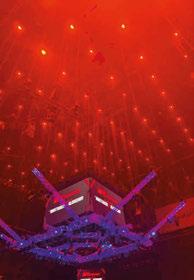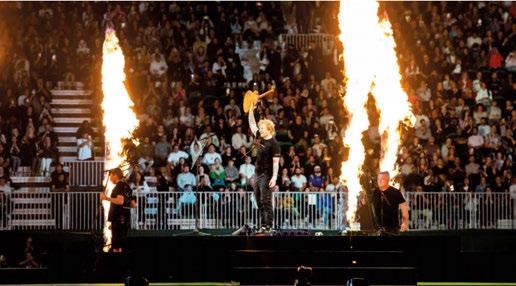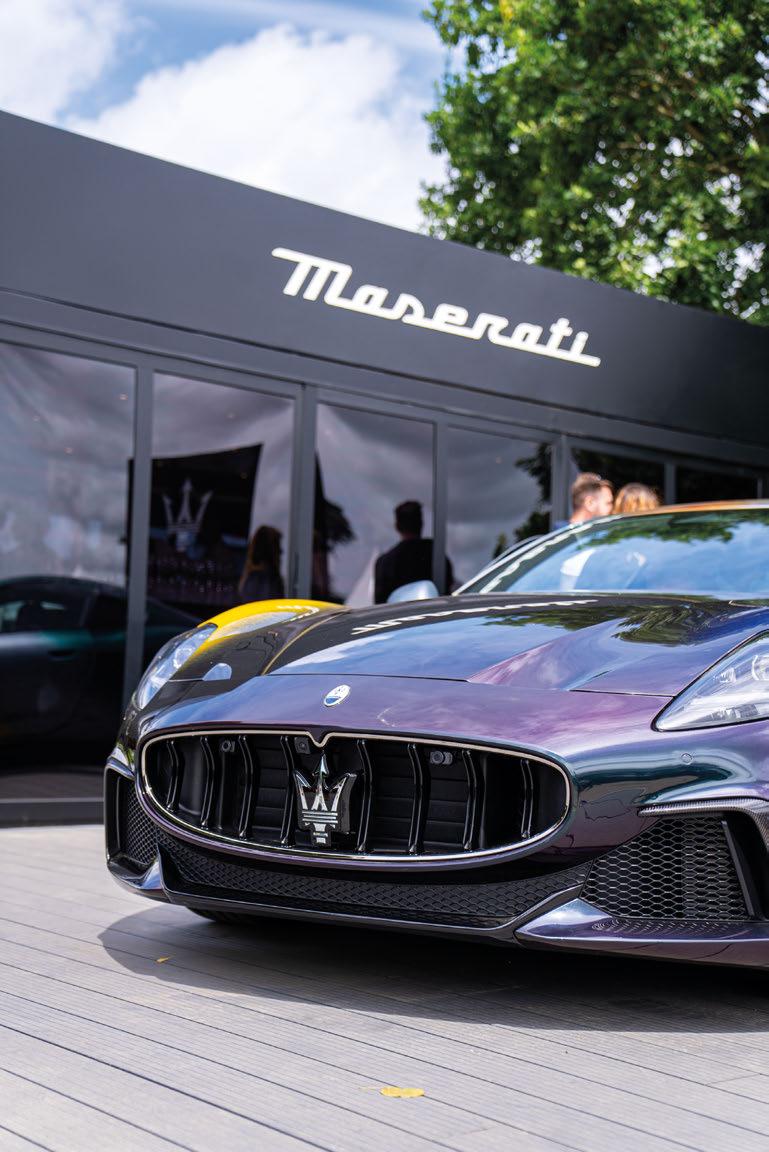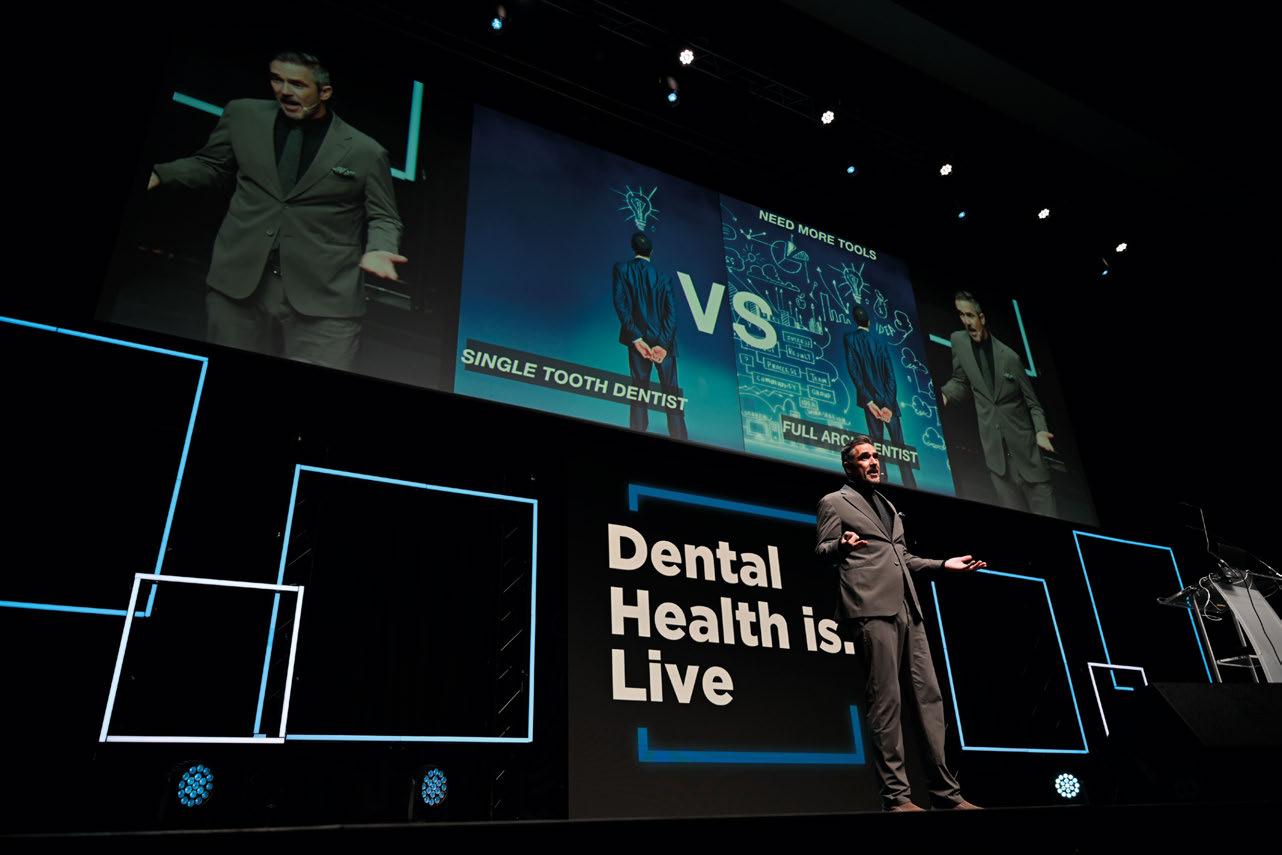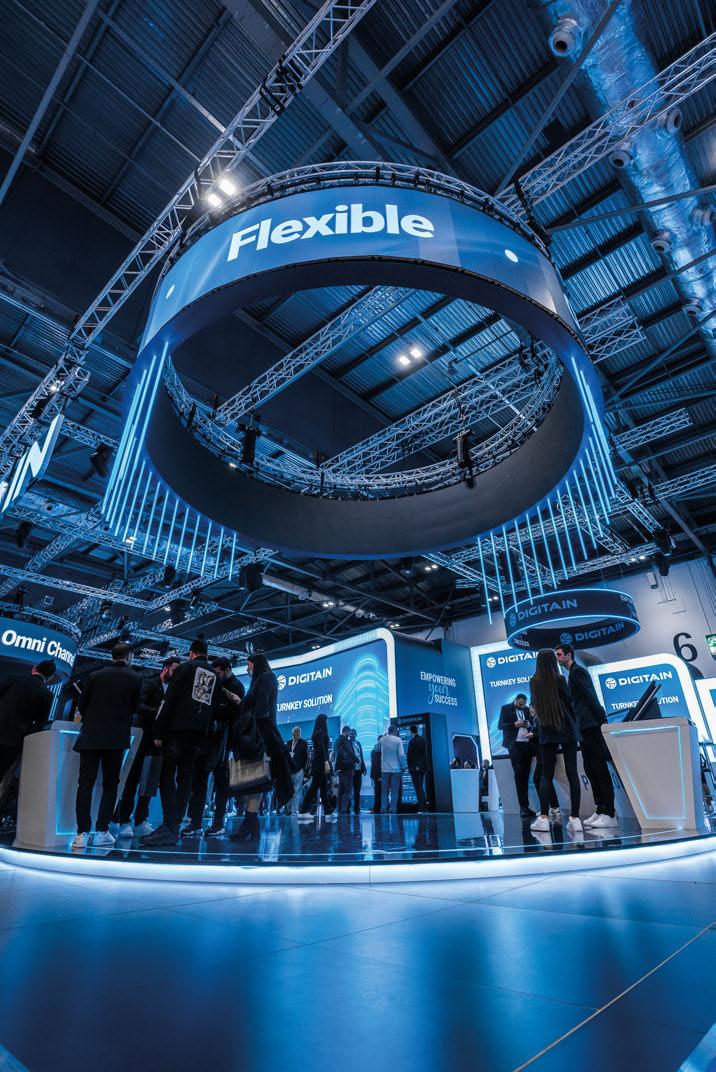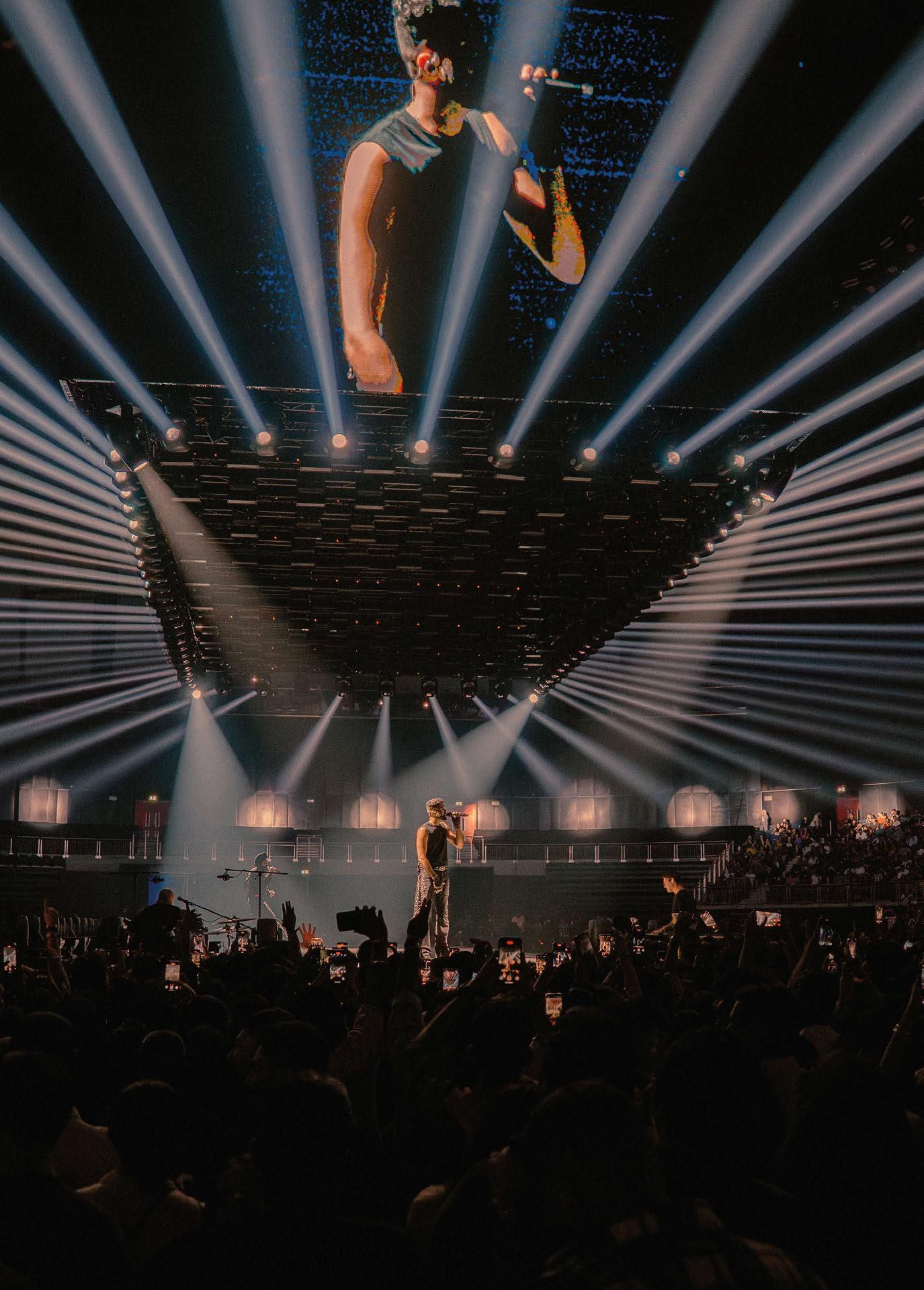

AP Dhillon






Welcome to TPiMEA
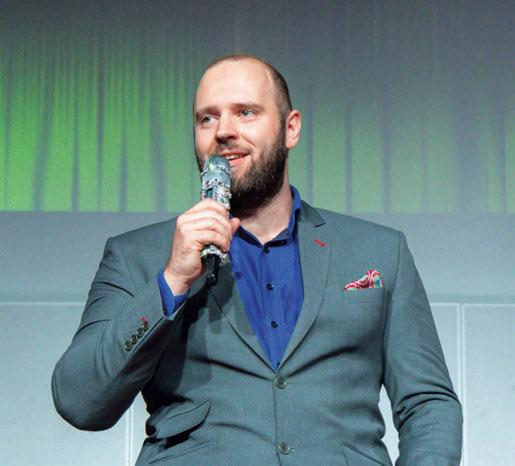
Peter Iantorno Editorial Director
With such a variety of events taking place all over the Middle East and Africa, it’s not always easy to see the wood for the trees when it comes to identifying industry trends. However, one that I have had my eye on for quite some time – and long harboured notions of putting together an in-depth feature on – is the increasing popularity of spatial audio in live events. Spatial audio is far from new, but it certainly feels like the way in which the technology is being deployed on live shows has taken a massive step forward in recent years. This issue of TPiMEA sees not one but two examples of spatial audio being implemented in the live realm to incredible effect.
Th e first example came from Dubai, as Creative Technology Middle East deployed the largest d&b audiotechnik Soundscape system seen in the region to date for the G42 Supercharged Forum. A corporate event in name only, the level of complexity involved in delivering the show more than matched even the most technically demanding live shows. We caught up with Head of Audio, Wissam Shaheen, along with some of the other departmental heads on the project, on page 30
Also banging the drum for spatial audio were the team behind South African actor and singer Jonathan Roxmouth’s hugely successful My Favourite Broadway production. This time L-Acoustics L-ISA was the solution of choice, with Multi-Media not only supplying the kit but also collaborating with DWR Distribution and L-Acoustics to get South Africa’s top audio engineers trained up on the technology (page 44).
Our cover star for this edition is Indo-Canadian singer and rapper, AP Dhillon. I had the pleasure of witnessing his recent performance at Coca-Cola Arena, which also happened to be the first major usage of the venue’s new in-house d&b audiotechnik PA system. Read our production profile on page 34
Before all the non-audio people write in, we do have lots of other content from across the disciplines in this issue. From the visual triumph of the Istanbul Festival (page 18) and the creative team behind the Women’s Africa Cup of Nations Opening Ceremony in Morocco (page 22), to the return of MDLBEAST’s educational arm, BeastED (page 58), there’s plenty to get stuck into.
Enjoy the issue.
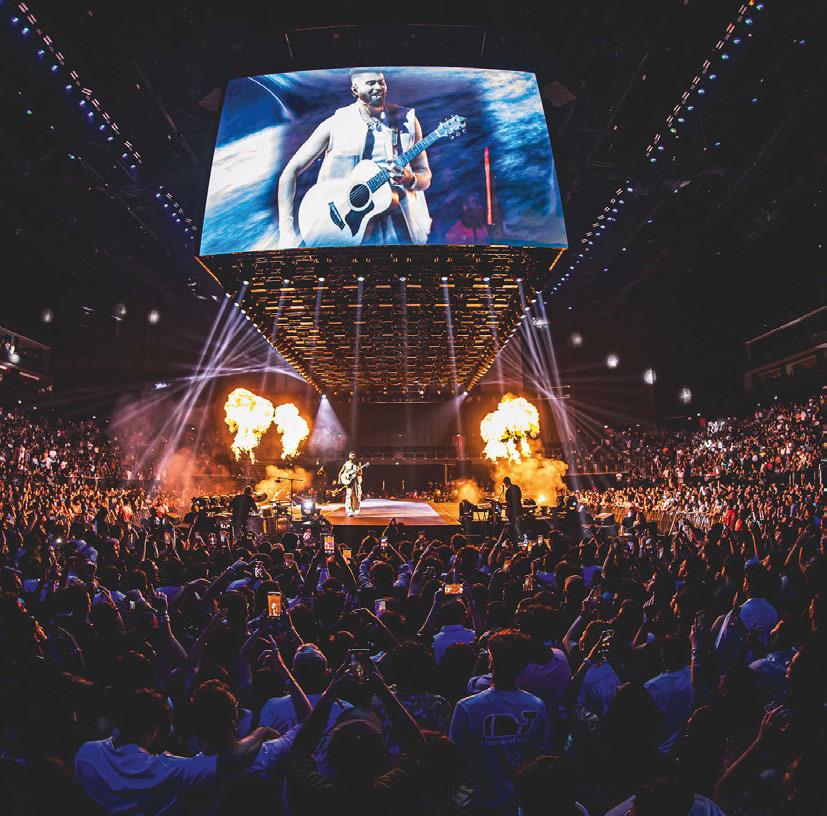
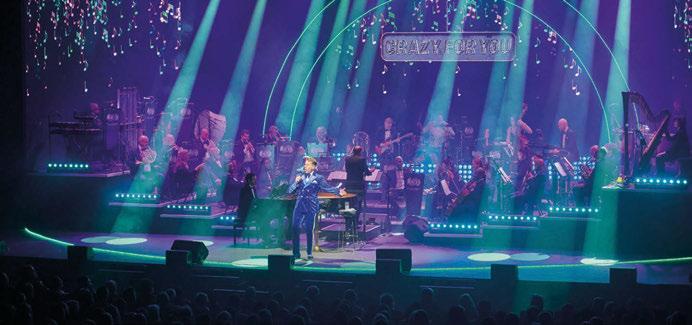
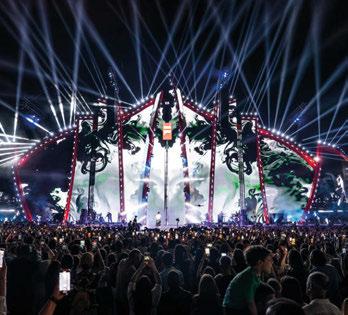

First Look
10 Karl Jenkins
The co-founder of A Loud Minority explains how his company aims to bridge the gap between creative ambition and technical delivery.
Event Focus
18 Istanbul Festival
A 17-night audiovisual extravaganza featuring a leg on Jennifer Lopez' Up All Night: Live in 2025 tour.
22 WAFCON24
Avant Scene delivers a thrilling Opening Ceremony for the Women's Africa Cup of Nations in Morocco.
28 Damascus International Fair
A landmark moment in Syria's re-emergence on the global economic stage, with 80,000 in attendance.
30 G42 Supercharged 2025
Creative Technology Middle East (CTME) provides a turnkey solution, including the region's largest d&b Soundscape system to date.
Production Profile
34 AP Dhillon
Dubai's Coca-Cola Arena takes its brand-new PA system for a spin with a sell-out 360° performance from Indo-Canadian star, AP Dhillon.
44 My Favourite Broadway
L-Acoustics L-ISA Hyperreal technology makes its South African debut.
In Profile
50 - 45dB
The sound-reduction specialist makes a big impression on the GCC market.
Interview
52 Robert Bird Group
The company lifts the lid on some of the engineering secrets behind MDLBEAST Soundstorm.
Feedback
56 Nadim Jamal, eventlab
How the eventlab and Mistika co-founder turned his health around – and how you could, too.
58 Back2BeastED
The educational arm of MDLBEAST returns bigger and better for a second season.
Gear Heads
60 Astera LED QuikSpot
Procom Middle East on Astera's versatile fixture.
62 Riedel MediorNet
NMK Electronics talks about the shift to IP.
63 Avolites D3 Series
The new compact control offering from Avolites.
64 Regional Round-up
The latest MEA news, including a DiGiCo deployment in Lebanon, an update from Mediatech Africa, and how Gallowglass is preparing for a busy Q4.
Editorial Director
Peter Iantorno
Tel: +44 (0)161 476 8360
Mobile: +44 (0)7763 233637
e-mail: p.iantorno@mondiale.co.uk
Managing Editor
Stew Hume
Mobile: +44 (0)7702 054344 e-mail: s.hume@mondiale.co.uk
Contributing Editor
Jacob Waite
Mobile: +44 (0)7592 679612 e-mail: j.waite@mondiale.co.uk
Contributing Assistant Editor
Alicia Pollitt
Mobile: +44 (0)7508 441986 e-mail: a.pollitt@mondiale.co.uk
Commercial Director
Fran Begaj
Mobile: +44 (0)7852 336728 e-mail: f.begaj@mondiale.co.uk
Senior Account Manager
Matilda Matthews
Mobile: +44 (0)7413 555978 e-mail: m.matthews@mondiale.co.uk
Account Manager
Tom Dyson
Mobile: +44 (0)7306 505230
e-mail: t.dyson@mondiale.co.uk
Account Manager
Sophie Edwards
Tel: +44 (0)161 476 8360 e-mail: s.edwards@mondiale.co.uk
Digital Content Manager
James Robertson Mobile: +44 (0)7725 475819 e-mail: j.robertson@mondiale.co.uk
Marketing and Event Manager
Alice Clarke
Mobile: +44 (0)7752 392465 e-mail: a.clarke@mondiale.co.uk
Marketing and Event Assistant
Charlie Moore e-mail: c.moore@mondiale.co.uk
Chief Executive
Justin Gawne
Mobile: +44 (0)7768 850767 e-mail: j.gawne@mondiale.co.uk
Mondiale Group Chairman Damian Walsh
Graphic Design & Production
Dan Seaton: d.seaton@mondiale.co.uk
Jez Reid: j.reid@mondiale.co.uk
Accounts
Lynette Levi / Sarah Miller: ar@mondiale.co.uk
Cover Photography AP Dhillon by Coca-Cola Arena
Printed By Buxton Press www.buxpress.co.uk
www.tpimeamagazine.com www.tpimeaawards.com www.tpimagazine.com www.tpiawards.com
@TPiMEA_Magazine / TPiMEAMagazine @ tpimea_magazine /company/tpimeamagazine

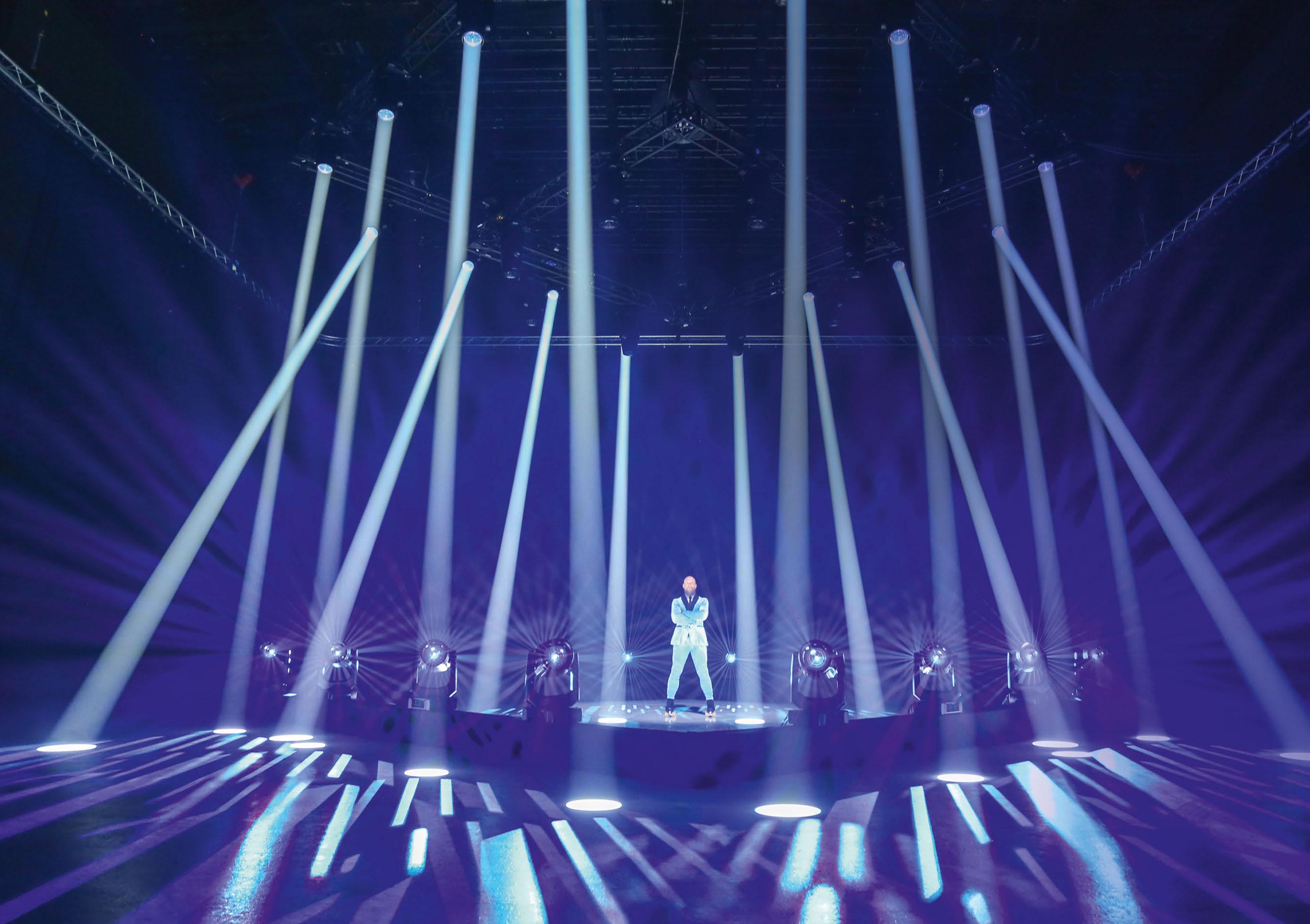


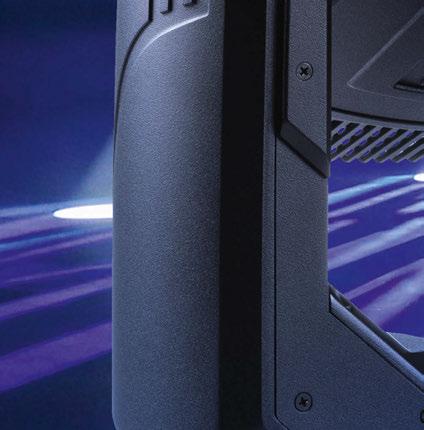

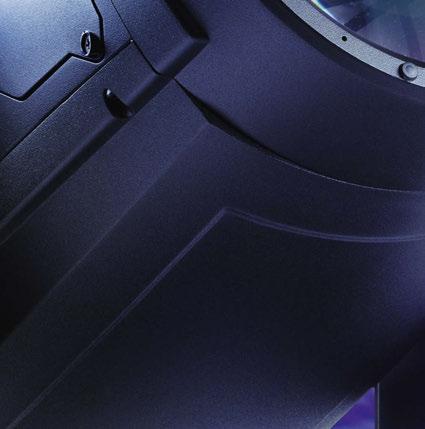

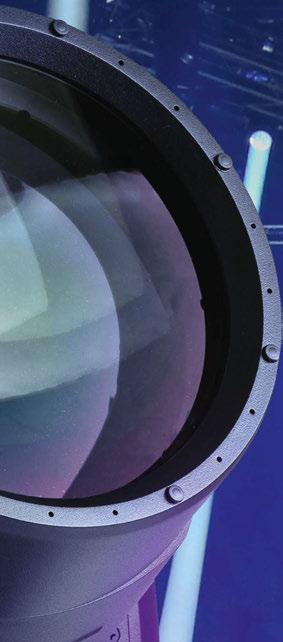



A True Workhorse Long-throw Luminaire
No compromise IP65/66 high-output low footprint
LED WashBeam and FollowSpot
Discover more
Karl Jenkins, co-founder, A Loud Minority
As ALM continues to expand its offering in bridging the gap between creative ambition and technical delivery, co-founder Karl Jenkins, sits down with TPiMEA to reflect on his theatrical upbringing and look ahead to an exciting future for the company.
From groundbreaking music festivals to immersive theatrical performances, at the sharp end of the live events industry, the most memorable experiences are created somewhere in between imagination and execution. With an ever-growing scope for creativity leading to increasing demands on technical production, the onus is on live events professionals to ensure that a project’s technical delivery matches the creative vision.
That’s where A Loud Minority (ALM) comes in.
“We created ALM to bridge the gap between creative ambition and technical delivery,” explained the company’s co-founder and Technical Producer, Karl Jenkins. “We ensure that shows are delivered safely, reliably, cost effectively and, of course, to world-class standards.”
With a career spanning various roles with both Cirque du Soleil and Dragone as well as Expo 2020 Dubai, Jenkins is one of very few people in the world with an intimate knowledge of the specific working practices and technical requirements of the world’s most advanced theatrical productions. Having deployed this knowledge to full effect, Jenkins, along with his trusted company co-founders, have built ALM to the point of becoming a multidisciplinary technical consultancy that sits at the top table of projects throughout the Middle East and Asia.
Dialling in to chat to TPiMEA amid a rare moment of downtime, Jenkins shares his story, reflects on some of the company’s most notable projects to date, reveals his approach to selecting suppliers, and speculates on what the future may hold for him and ALM.
What sparked your interest in the industry?
My beginnings in the industry can be traced all the way back to school and my interest in performing arts and watching creative visions develop into performance pieces. I was interested in both the academic and performance
sides of the subject, and at the end of my school years I was looking for some further education that would support both of these angles.
I found this at the New Zealand Drama School, which offered a programme in Entertainment Technology, followed by a Bachelor of Performing Arts Management. With both of those things together, I entered into that world with a focus mainly on lighting design and application, production management, and technical direction.
In my final year of study, I did some placements in film including on the Lord of the Rings films in Wellington. While it was a great experience, I quickly realised that film was not the career for me – I much preferred setting up a small concert in the rain somewhere to sitting in a studio all day.
That same year, Cirque du Soleil came to New Zealand with one of their shows and I went on a secondment with them; that’s when I really knew that was what I wanted to do. That kind of entertainment is so different to traditional theatre and musicals, and I was magnetised to it.
Af ter that placement, I finished my degree and picked up a job as a production manager in a small regional theatre show touring around New Zealand. Halfway through the tour, the Cirque du Soleil team got back in touch with an opportunity to join them as a lighting technician; it was in Europe, and they needed me there by the end of the week… I jumped at the chance and ran away with the circus!
Tell us about your time with Cirque du Soleil… Taking the role with Cirque du Soleil was a big turning point in my life. I ended up working with them for 10 years, which was quite an adventure that saw me do seven of their shows, across all of the company’s divisions all over the world. I rose through the ranks, eventually getting into technical direction and overseeing management of large technical teams. I worked on a couple of creations in

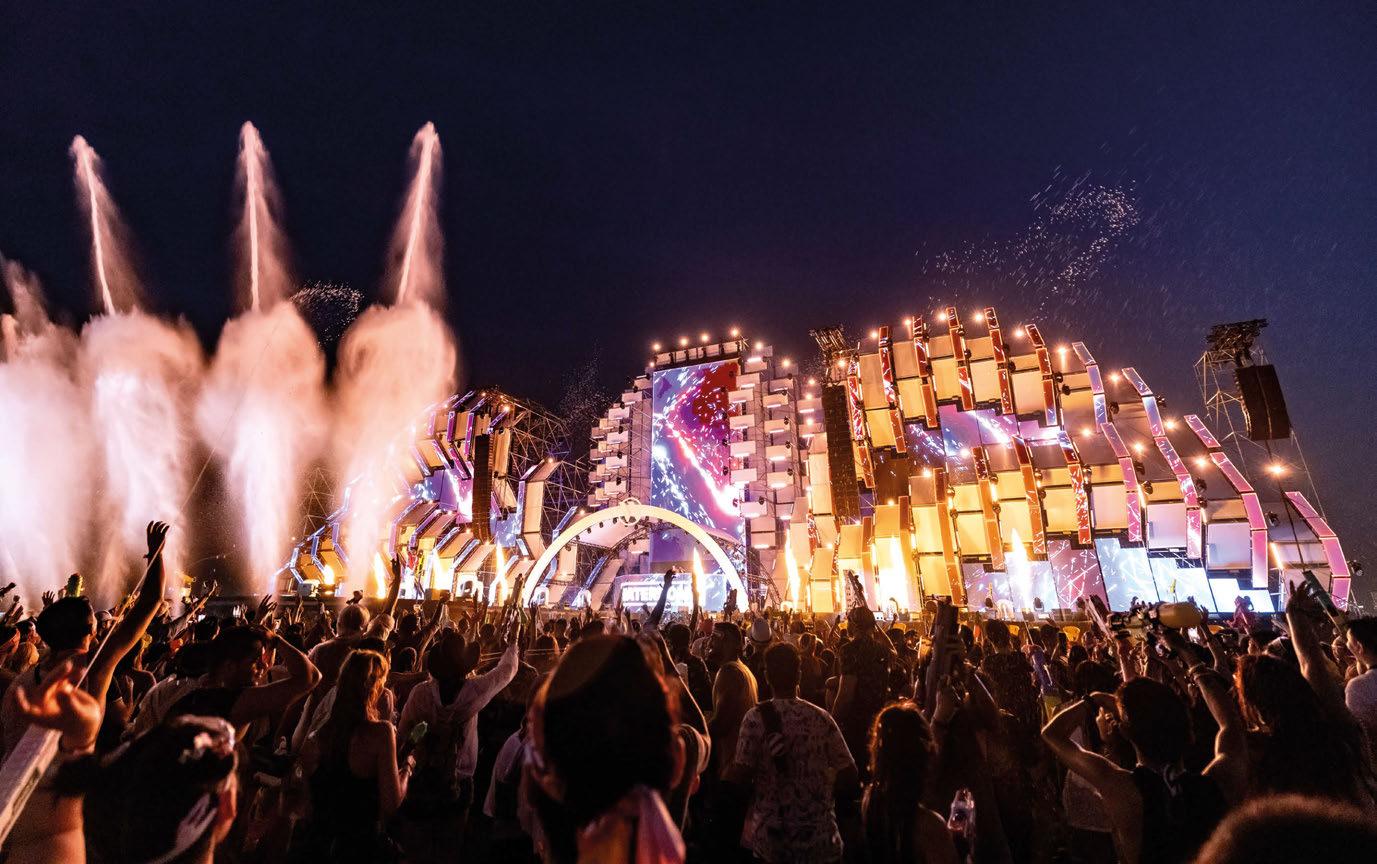
Montreal, which is where I really started to get a handle on how these shows are made and how we turn this incredible creative inspiration into something that’s practical, tourable and presentable to an audience.
How did you come to work for Dragone?
After 10 years with Cirque, living out of a suitcase had become quite taxing and it was time to settle down, and that’s when Dragone came into the picture. They offered me an opportunity to move to Macau and work on one of their productions there.
Th e timing was perfect; I moved to Macau, started a family there, and I enjoyed staying in one place for the first time in my life since leaving New Zealand.
I stayed in Macau for three years before Dragone offered me the opportunity to move to Dubai in mid-2019 to take over as Technical Director of La Perle.
My remit was to make the show a little bit more technically feasible and commercially efficient. The COVID-19 pandemic forced the show to close temporarily, and my role shifted completely into figuring out how we could reopen and make the show viable with a much smaller, socially distanced audience.
It was an exhausting process and not a nice time for anybody. However, I’m proud that we were the first show of this kind in the world to reopen, and of course the show is still going strong to this day.
How was your time working on Expo 2020?
Expo had been in touch a few times with opportunities, and around the middle of 2020, once I was happy that La Perle was back into a good place and there was someone ready for me to hand it over to, I decided that the time was right to move on. I started at Expo in a technical production project manager role for Al Wasl, taking care of the final stages of the build process and the integration of the rehearsal for the opening ceremony. I then got shifted into the Head of Technical Production role and was given the freedom to bring in a team of technical and production managers, and we worked on integrating the incoming shows into the different stages and spaces around the Expo site.
What led you to start ALM?
My experience working on Expo 2020 showed me that there was a real gap in the market for a company that can offer a high level of technical production that helps creatives realise their vision. At the time there were a few rental companies trying to exist in the space delivering end-to-end turnkey on events, but there’s a certain impartiality, both from a commercial and creativity point of view, that was missing with these solutions. So, I decided to move away from Expo and start something of my own, and ALM was born.
As a freelancer, I had people coming to me who had this vision but didn’t know how to make it feasible or understand the technical integration, the cost, and the methods required

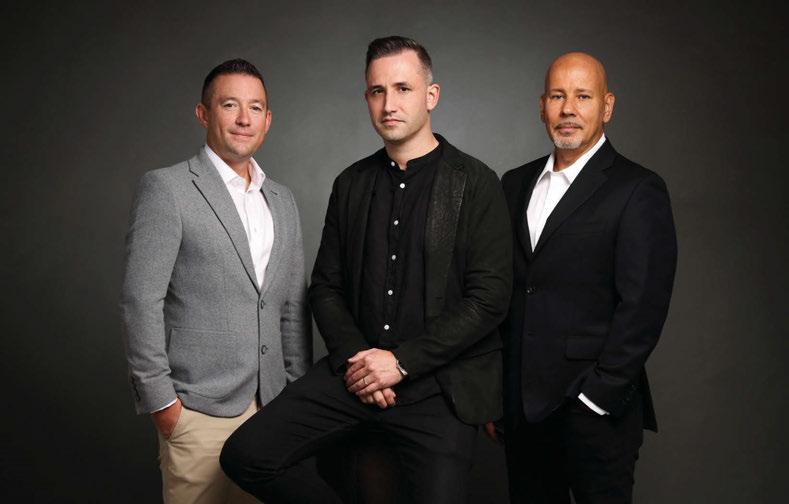
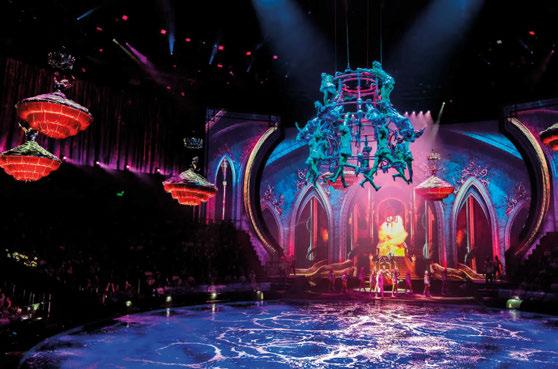

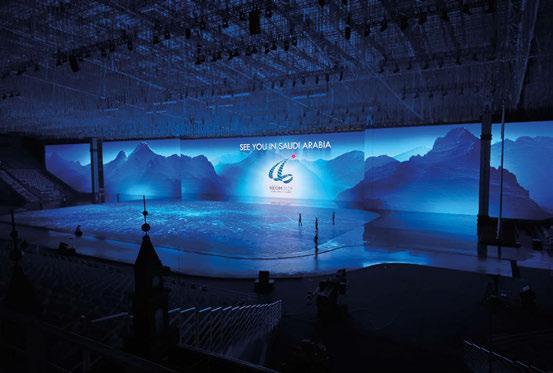
to execute it. ALM was created to bridge the gap between creative ambition and technical delivery. We aim to ensure that shows are delivered safely, reliably, and cost effectively, as well as to very, very high standards.
How did you grow ALM in the early days of the company?
ALM grew from me doing some freelance projects as a technical director and very quickly realising that I could do a lot more if I had more of a structure around me. We often see lighting or sound designers take on associates who can represent them across various projects, so I thought why not adopt a similar approach to what I do?
Clients responded well to this setup, and we started to build a solid base of companies who would come to us for all of their projects throughout the year – many of which we maintain today. I’ve always had a very close attachment to both Cirque du Soleil and Dragone. Having worked with both companies for so long, I’ve been fortunate to get to know the people behind the shows and develop an in-depth knowledge of the very specific technical considerations that are required for their productions.
A major milestone for us was Dragone’s 2023 production of TERHAL in Riyadh. We partnered with Dragone to take on the technical production scope, completing all the pre-production work, planning and liaising with vendors and designers before handing over to the Dragone team
for the show delivery. That was the project that catapulted the company to the point when I stopped freelancing and transitioned into running ALM as a company. That project gave us the exposure that we needed and after that, the business took off. The busier we got, the more we could refine our focus to take on only the very high-level technical projects. Since TERHAL, we’ve branched out into music festivals, taking on first Waterbomb and then UNTOLD, which takes place in Romania every summer, is coming back to Dubai in November, and is growing globally.
What is the current makeup of the ALM team?
We have grown massively in terms of projects and in terms of team. This time last year, we had 14 people on payroll; currently we have 97 people on payroll – a mixture between full-time and permalancer.
The company has four partners: me, Bengan Hovgard, Ben Rogers, and Gent Wahlstrom, who owned an agency in Sweden around 10 years ago called A Loud Minority, so all the contextual IP comes from there. Another key member of the team is Andy Cook. He’s been with us as Director for around a year, and he brings vast experience from the agency high-level commercial production world.
We want to remain a reasonably lean company. By remaining lean, it means that our overheads are lower, which means that our costs to the client are lower as
Above: Andy Cook, Karl Jenkins and Bengan Hovgard.
well. There is a sensitivity to not growing too fast. We’ve seen companies in the region that grow too fast because they get these massive projects and then all of a sudden, the projects go away, and they’re stuck with a bloated workforce. We are very careful about how we grow, and we feel pretty comfortable at the level we’re at now and our ability to expand and contract as required.
What is your approach to working with freelancers?
Freelancers are incredibly important to us, and we have many who are pretty loyal to us, which is fantastic. One non-negotiable for me is that everybody who works with us is treated with a huge amount of respect. I want everybody who is on a site for me to represent ALM to the highest standards, and that all starts from the standards and expectations set by me and our leadership team. We make sure that we have a presence and an ownership of every project. If we put people on a project, it’s not just because they’re available; it’s because they have the specific skills and experience that we know are needed to deliver the project to the high standards expected of ALM.
How is your business split between work in the Middle East and projects in Asia?
We do around half of our business in the Middle East and the other half in Asia. We have a careful balance of global experience and very specialised expertise, which we combine with local resources to deliver projects in both regions. There are a lot of differences between the two regions, but we’ve also noticed many similarities and the service that we have developed in the Middle East seems to translate very well to Asia. Timelines are just as crazy in Asia as they are in the Middle East, and unless you’ve been there and produced at the level we have under severe time constraints, it’s a difficult market to dive into. In Asia, we currently have active projects in Hong Kong, Macau, Vietnam, Singapore and Japan, where we have a team of 30 on the ground at Expo 2025 Osaka.
Tell us about the return of TERHAL
It had been a year-and-a-half since we did the first iteration of TERHAL, and Dragone got back in touch to see if we could come onboard for TERHAL 2. In the time between the projects, we’ve grown exponentially – not only in terms of technical production and direction, but also in our operational and site planning expertise. Our relationship with Dragone had also grown even more since the first TERHAL, and for the second season, having delivered multiple projects together in between where we worked even closer in more of a partnership as their production arm.
Last time we did the pre-production before handing over the show for them to operate, whereas this time we did full production, bringing in our own design team – including Ben Rogers on lighting and Calum Robinson on audio – as well as all of the operational technical team, carpentry, acrobatic riggers, and a full technical team on site running the show. We went from having five people on the show, including myself, the first time, to this time having 35 technical people on the show.
What is your approach to selecting and working with technical suppliers?
We’ve seen a significant shift over the past three years in how we’re viewed by suppliers. At the beginning, not everyone understood what our role was and how we fit into the fold. However, that has developed and now there’s a good level of understanding about what our place is and how we can be beneficial to suppliers as well as clients.
On e of our founding principles is that we are 100% company agnostic. We are not attached to any vendor, and we will use the company that is the best fit for the job – and I think we’ve proven that with our projects so far.
We d on’t own any equipment. We’re not interested in selling anything to anybody. We are just there to share


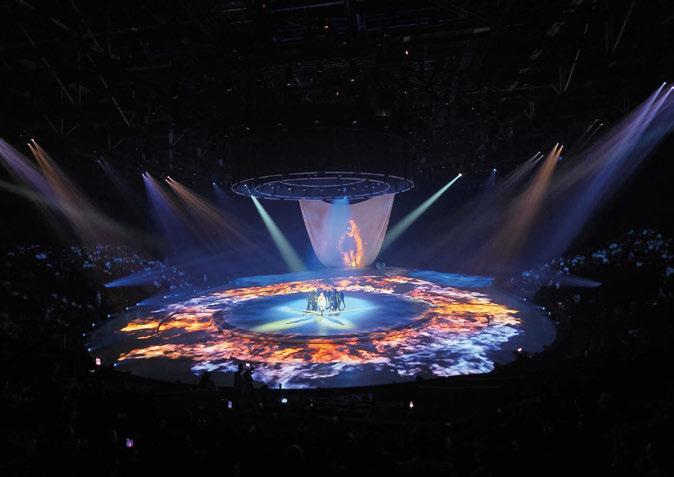

knowledge and to bring the best technical production people and high-level consultancy to a project.
Ou r normal process is that we will enter a production, write all of the technical documentation and scoping documents, and then lead the procurement process. This is one of the areas where we can add value, as we can assess each quote on its merits and make recommendations that are not necessarily based purely on price. We assess everything from time frames and experience on projects of a similar scale to the ability to do the job from both an equipment and crew perspective. We make a point of rationalising what needs to be done on a project. We can question things and be an advocate for the client, ensuring that best practice is being followed throughout and keeping standards high, while maintaining control over costs.
What are your ambitions for ALM?
In the short term, we are happy to continue what we’re doing. We are now in a position where we are very confident and comfortable with the team that we have and with the projects that we’re taking on, and we plan on continuing to build our reputation through these high-level, high-profile projects. We want to stay at that top end of technical production to add value to the most complex projects.
Looking further ahead, we have some significant long-term projects that are an important part of the future
direction of the company. We’re increasingly being asked to work on projects in the very early stages in more of a consultancy role. In fact, the company is being built to have one side looking after secondary professional services where we partner with consultants working on master planning and large-scale projects, and the other taking care of the creative production projects that we are engaged with currently.
What we’re finding in Saudi Arabia is that we are being asked to bring our technical production knowledge into projects that sometimes won’t exist for another five years, and that’s really interesting to be in the room in those very early stages. We want to become the go-to technical production house in the region.
How do you switch off outside of work?
Growing a business of this scale and quality in this industry is not easy, and as a result, I’ve found it quite difficult to switch off this year. In my rare moments of downtime, spending time with my family is the most important thing to me. I look for a contrast from my normal hectic schedule, so if I can go somewhere and not have to touch an electronic device or an email, even if it’s just for a brief moment, that’s what I strive for.
Photos: A Loud Minority www.aloudminority.com



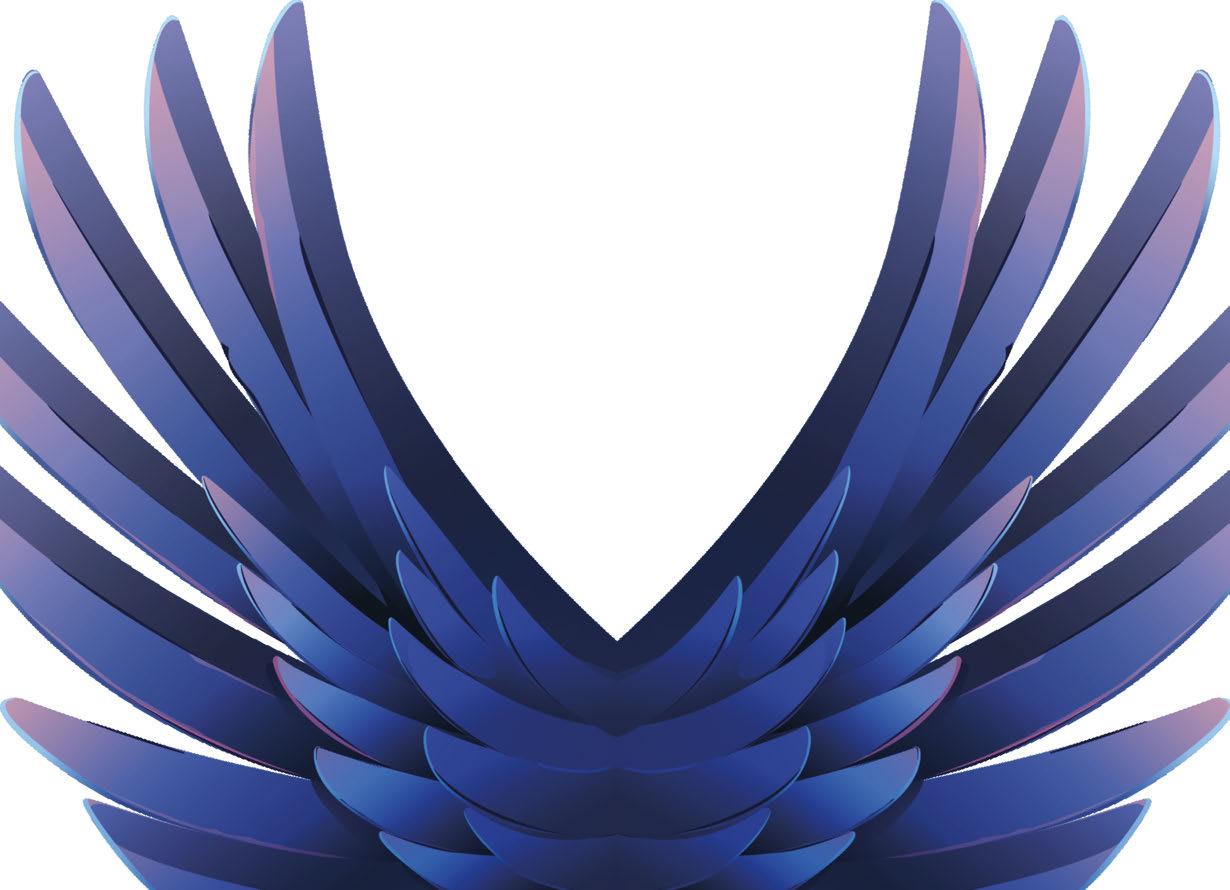
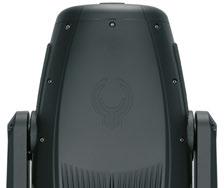
Istanbul Festival
i’Kandemir Design Studio reflects on its delivery of an audiovisual extravaganza for 17 days of celebration.
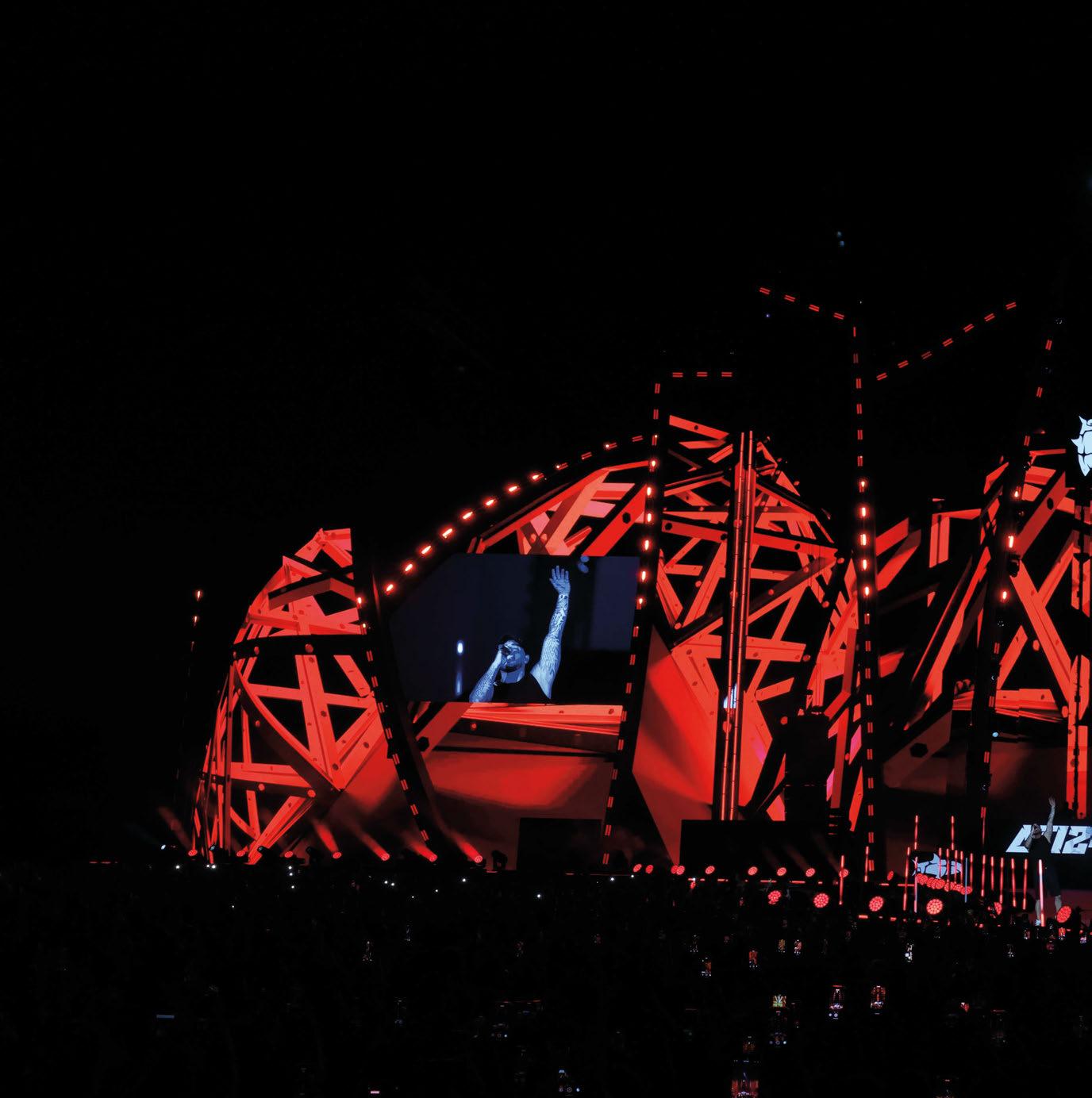
While working on the stage design for Istanbul Festival, Stage & Production Designer İbrahim Kandemir of i’Kandemir Design Studio asked himself the question: “How can I bring the energy, rhythm, and silhouette of Istanbul to a stage?” His answer came in the form of what he described as “a contemporary urban structure that reflects the modern face of Istanbul”.
“The forms I drew inspiration from came directly from everyday life – particularly the city’s high-rises illuminated by night, which shaped the foundation of the design,” Kandemir commented, explaining how the stage reflected his personal journey. “After countless nights of sketching, imagining, and recreating, bringing Istanbul’s modern face to life on a festival stage
made me feel the emotion I had been chasing for years. What you see on this stage today is a true reflection of my love for my work.”
Working with client Focus İstanbul on the festival for the fourth year running, Kandemir and his team were tasked with producing a stage capable of hosting performances by more than 35 local and international artists, from Mor ve Ötesi to Jennifer Lopez, who added the festival as a date on her Up All Night: Live in 2025 tour.
Inspired by Istanbul’s identity as the ‘City of Seven Hills’, the stage architecture was built around seven distinct tower forms. “These towers were designed after the city’s most iconic skyscrapers, bringing Istanbul’s modern architectural language to the festival stage,”
Kandemir explained. “I wanted the audience to see not just a performance, but a familiar cityscape in the background. That’s why this stage stands not as a building, but as a representation of a city.”
In the background, a tulip-shaped structure was added to soften transitions and provide a poetic contrast, resulting in a design that Kandemir dubbed “both urban and lyrical”.
‘Clarity and intensity’
The role of i’Kandemir Design Studio wasn’t limited to just creative, with the company maintaining a thorough technical oversight, creating a technical design built entirely to support the creative vision. Spanning a total of

1,300 sq m of LED surfaces, equipped with nearly 800 lighting fixtures and 184 speakers, the stage created a full sensory experience.
“My goal was to design a structure where every element was synchronised; where visual and auditory layers intertwined flawlessly,” Kandemir commented. “The sound towers reached up to 26m because, for me, it was essential that the audience at the very back experienced the show with the same clarity and intensity as those in the front row.”
Af ter the stage was drafted in Vectorworks by Senanur Sağlam and Eyüp Muvafık, and previsualised in Syncronorm Depence by Kaan Kandemir, a 200-strong production team worked on the meticulous 22-day setup. The stage
transformed into various guises throughout the 17 consecutive days of the festival, with a rebuild required every night to accommodate the incoming production.
“We are very proud to have built a stage that stands at the heart of Istanbul both technically and aesthetically,” Kandemir remarked, further noting the green credentials of the stage setup, with some of the set reused to create library racks for local schools and some donated to build animal shelters.
‘Something that will live long in the memory’ As well as the consecutive overnight load-ins, the weather brought its fair share of challenges. “The wind added a huge challenge during the setup
phase and show period,” Kandemir commented. “We monitored conditions constantly and ensured that towers were lowered whenever wind speeds became too high.”
Th e lighting rig comprised 48 Ayrton Domino LT fixtures, 52 GLP JDC1 Strobes as well as a significant inventory of fixtures from German brand, Lotus Lighting, including 199 Chameleon 300, 136 ST Aqua100, 105 Premium 400, 110 Titan 1200, 22 Scorpion 10, and 16 Elisium 1000, with the festival’s Lighting Programmer, Ali Ateş, at the helm of an MA Lighting grandMA3. Tim Routledge and Paul Abdullah also specified a lighting uplift for the Jennifer Lopez show.
Af ter being introduced to Lotus Lighting at LDI Las Vegas late last year, the i’Kandemir
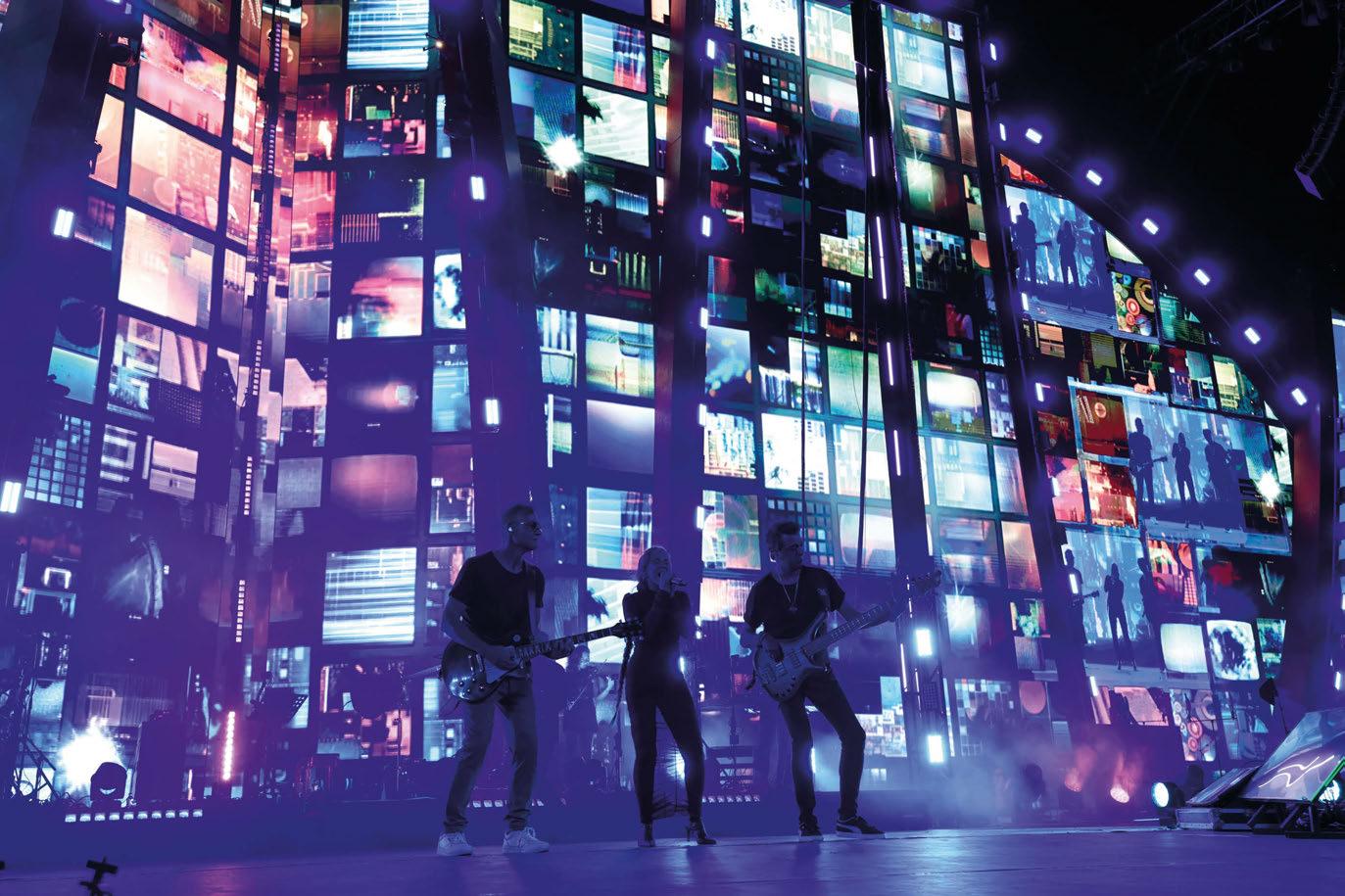
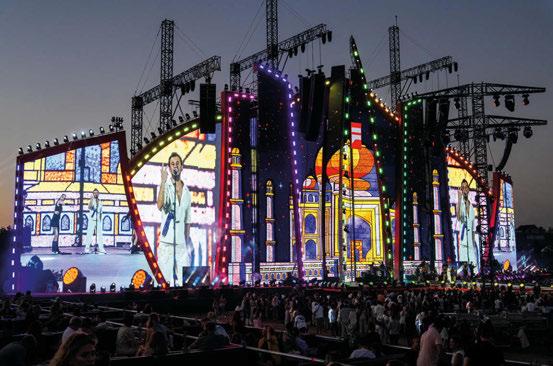
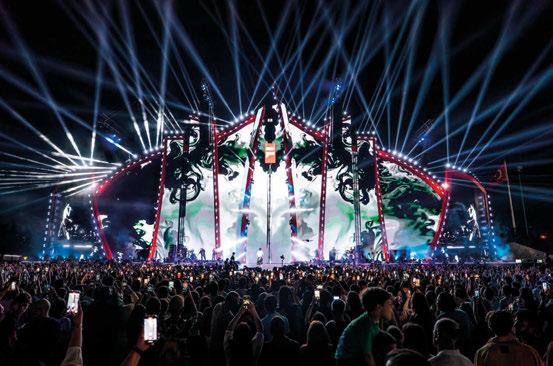
Design Studio team was sufficiently impressed to recommend the brand to Turkish rental house Solid Technical Solutions, which duly made a significant investment with the understanding that the fixtures would be put to good use on the Istanbul Festival.
“We had a full spectrum of Lotus Lighting fixtures on the show, and they performed extremely well,” Kandemir commented. “Despite wind, rain and dust, the fixtures stood up to the test; they looked great and ran smoothly.”
Joining technical production company Solid Technical Solutions on the supplier roster were stage construction company, GIGA Solutions, and power supplier, LND Energy.
In the video department, Visual Operator, Harun Sinan Gül, utilised the power of Dataton WATCHOUT media servers and NovaStar N9 switchers to manage content across the massive 1,300 sq m of 3.9mm AVA LED, while Disguise
media servers were additionally brought in especially for the Jennifer Lopez show.
For audio, Aziz Berk Erten designed an extensive L-Acoustics sound system, with the main PA comprising flown arrays of 12 K1, three K2 and 12 K1-SB per side. A further 12 K2 per side were used for out fill, with 18 KS28 per side ground stacked to provide low end and 10 Kara II per side for front fill. There was also a delay system comprising 12 K1 and six KS28 per side, amplification came courtesy of 60 LA12X, and three P1 Processors were utilised.
Th e whole system was operated over a redundant AVB network with analogue fallback, while Yamaha was the control brand of choice throughout, with a Rivage PM5 at FOH, a DM7 at monitors and a CL5 in reserve.
Th e wider team included: Construction Designer, Ersin Aylı; Artist and Technical Director, Ferit Ceyhan; Artist and Booking Manager,
Mert Adıgüzel; and Hospitality Manager, Nihan Hatipoğlu. Deniz Aslanboğa, Ahmet Yapa, Barkın Kula, Alican Yılmaz, Serkan Türk, and Alper Çakır fulfilled Stage Manager Duties; while the Production Assistants were Nil Paşalı, Berra Kap, Barış Kadıoğlu, Aysun Şayık, and Nazlı Aydın.
With almost 1.5 million attendees over 17 consecutive days, it would be easy to focus on the massive scale of the project as its biggest success. However, for Kandemir, the most important thing was the audience experience.
“The massive LED screens, the lighting, and the audio are all great, but creating something that will live long in the memory of the audience is the greatest achievement,” he reflected. “To help create a memory for every single person in the audience – no matter which category of ticket they bought – is what is truly important.”
Photos: Gökçe Göksu, Nurhan Ateş www.ibrahimkandemir.com
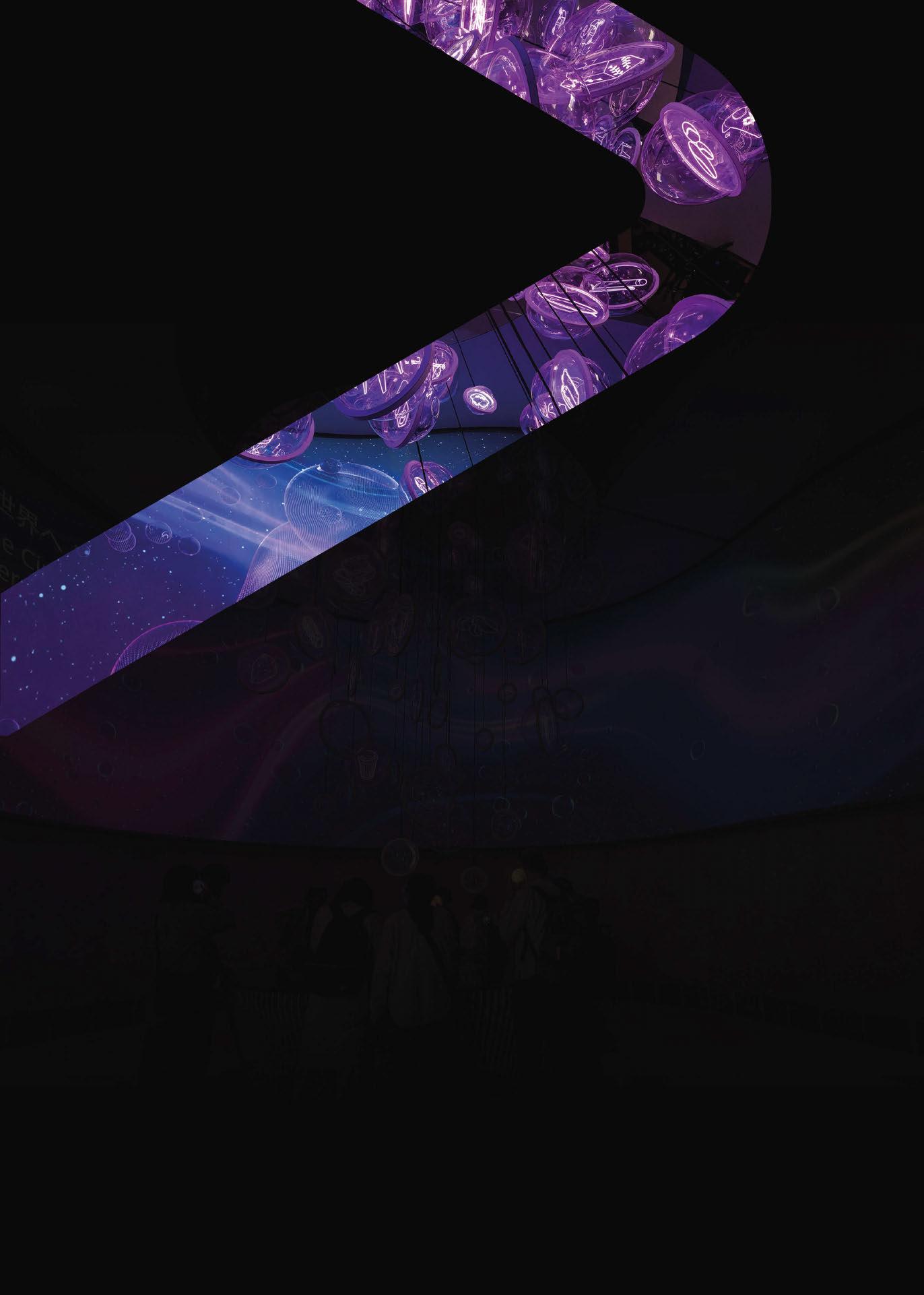
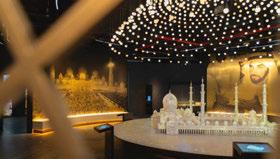

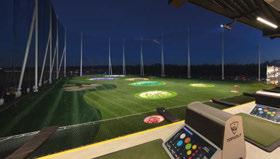
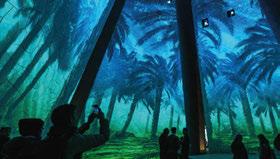


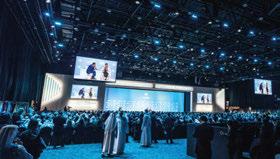
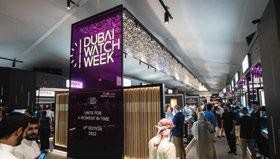
WAFCON24 Opening Ceremony
The Women’s Africa Cup of Nations opens in style at Morocco’s Olympic Stadium, with local expertise shining on the global stage.
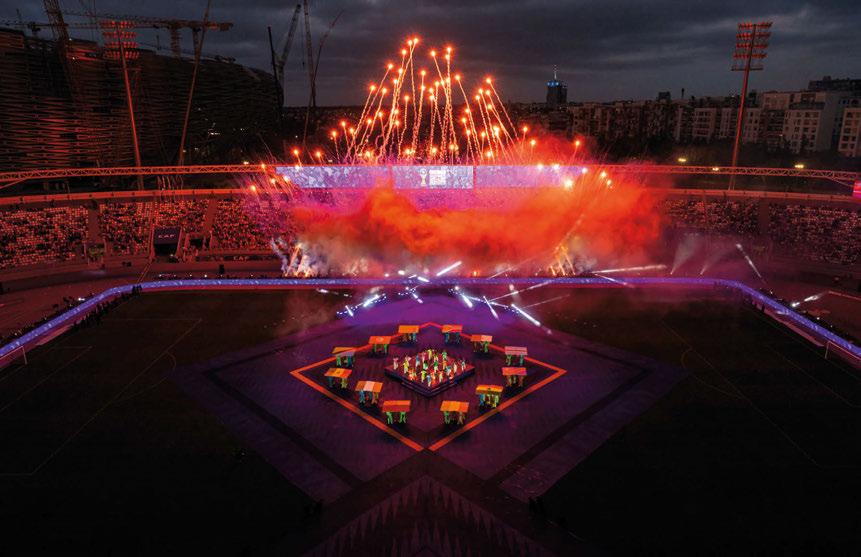
Having been delayed for a year to avoid a clash with the 2024 Olympic Games, the Women’s Africa Cup of Nations 2024 (WAFCON24) finally took place in the summer of 2025 in Morocco. After such a long build-up, the pressure was on Moroccan event experiential agency Avant Scène to deliver an Opening Ceremony that would be worth the wait.
“From day one, our ambition was to create an Opening Ceremony that would stand out –something that would resonate in the world of ceremonies – and I believe we succeeded,” said Avant Scène’s Ismail Dine, who led the project alongside fellow Project Director, Mehdi Lahrichi, and Head of Production, Taoufik El Himer. “Our vision was clear: go beyond the ordinary, deliver
a unique and powerful event, and set a new benchmark for ceremonies in the region.”
Founded in 2003, Avant Scène is a leading Moroccan event-production agency with a strong international footprint, having produced several major events including the Annual Meetings of the World Bank Group and International Monetary Fund, the Opening Ceremony of the FIFA Club World Cup, the Futsal African Cup of Nations and the Longines Global Champions Tour.
For this project, the Avant Scène team pitched a concept that Dine described as “coherent, relevant, and capable of delivering something truly special”. He added: “We wanted to break away completely from preconceived ideas. For
example, we didn’t want the typical ‘girls playing football’ story or an ‘old lady telling a tale’. Instead, we focussed on showing the strength of women through creativity – in movement, in artistic expression, and even in the way the game itself can inspire.”
Under the guidance of Creative Directors, Pablo Solari and Gennaro Emiliano Girasole, as well as Live Action Director and Head of Choreography, Tatiana Myrkou, the event team produced a spectacular Opening Ceremony that consisted of four acts and included an original musical score. The event was designed to honour each of the 12 participating nations, and celebrate the strength, spirit and creativity of African women across the generations.
“I n our first creative pitch, we aligned our vision with CAF’s ‘Born Winners’ campaign, explored its themes, and translated them into a live performance,” Dine recalled. “The result was a mix of technology, power, dynamism, youth, and high energy from start to finish.”
According to Creative Director Pablo Solari, one of the intentions of the Opening Ceremony was to provide a moment of unity where everyone came together to honour the legacy of African women. “We wanted to include as many people as possible – both male and female – in the ceremony, so that the celebration could be shared collectively,” he stated. “Using football as both symbol and stage for a broader movement of women rising, leading, and building, we celebrated the connections across generations, disciplines, and countries, creating a journey from Morocco to the entire continent.”
As the idea took shape, the creative team worked to ensure that the visual language, choreography, music, and effects all aligned. Gennaro Girasole added: “Every element – from immersive laser projections to transforming props and dynamic choreography – stayed true to the initial idea, ensuring that when the lights came up, the audience experienced exactly what had been envisioned from the start.”
The only significant adjustment to the original concept was the addition of Moroccan pop





star Jaylann’s performance in Act 3, which was done not only to create a focal point for the Opening Ceremony but also provide a platform to showcase a homegrown Moroccan artist who could represent the host nation.
“We decided to use Jaylann’s new song in the ceremony, and it played a big part in the event’s success,” Dine recalled. “I was proud to have taken that risk; the song carried a powerful message, and it connected perfectly with the spirit of the show.”
Live Action Director and Head of Choreography, Myrkou paid homage to all the performers, who she described as “not just dancers, but storytellers, interacting with immersive laser projections, props that transformed, and a stage designed to shift from intimate moments to grand spectacle”.
Sh e added: “Every creative decision was made to capture both the intimacy of tribute and the thrill of a continental celebration, ensuring
that when the first note played and the first light cut through the stadium, the audience felt part of something bigger than a game – a shared moment of pride, connection, and joy.”
‘A strong message to Africa’
With less than a month to design, produce and deliver the project, every stage was accelerated and “calculated risks” were taken. “We kept a classic production structure – a project management team coordinating everything and acting as the main link with the client,” Dine explained. “The rest was divided between the creative team, the rehearsal and choreography team and the stage management team. This meant thousands of WhatsApp messages, Zoom calls and intense coordination – it was an exhausting process, but in a good way.”
The pressure of the tight timeline was compounded by the added challenge of dealing with customs and clearance for the technical
Despite a tight timeline and many challenges, the production team pulled off a ”beautiful event in terms of energy, execution, and impact”.
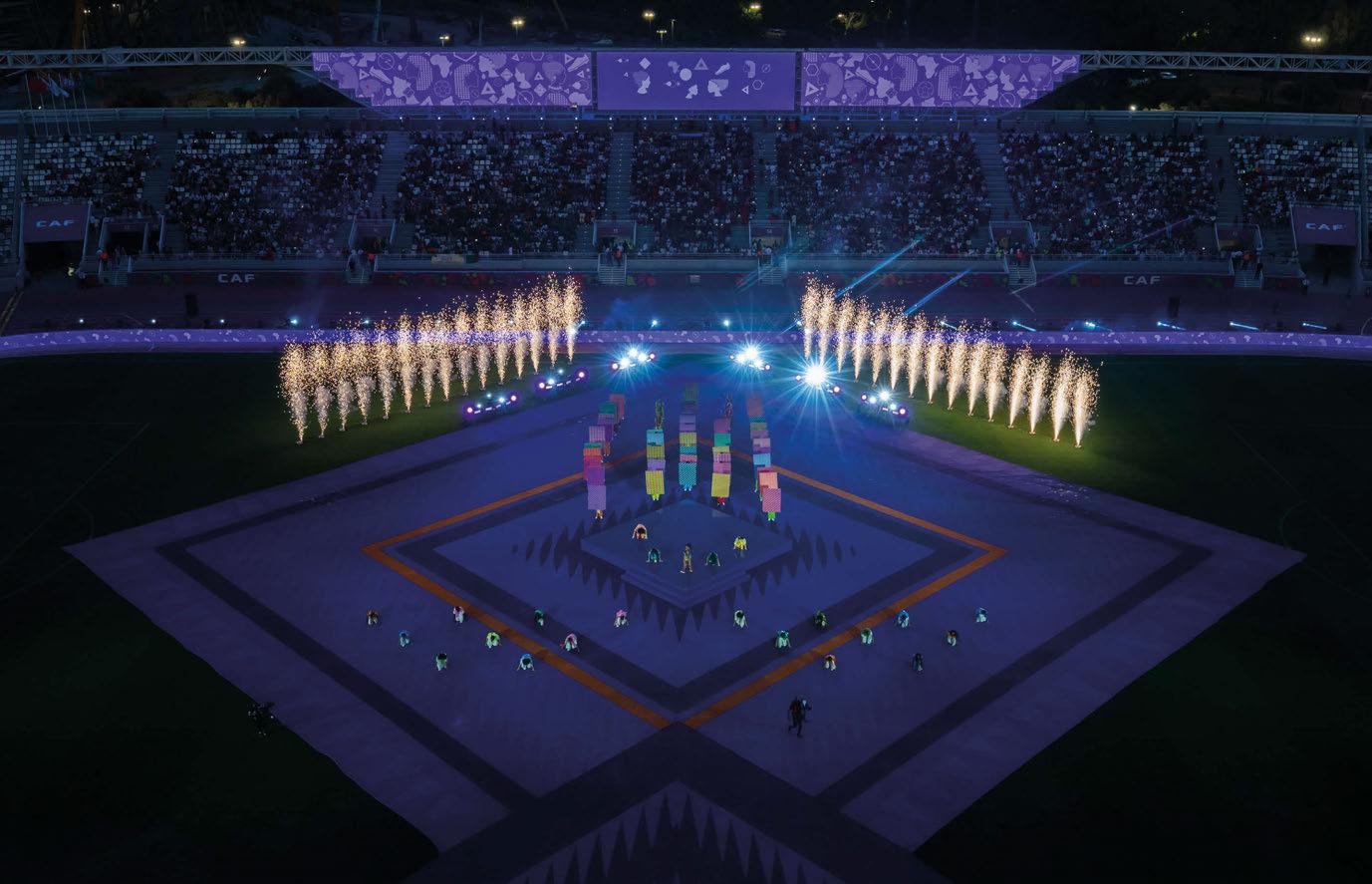
equipment. “Not having key items such as the carpet, lasers, and lights available earlier caused some delays and added pressure,” Solari revealed. “We eventually overcame these issues, but it required strong collaboration and support from all teams involved.”
Another challenge, which is universal in events like this, is the need to protect the field of play. “The pitch is the most important element for a safe, fair, and high-quality football game, and protecting its condition is always critical,” the Creative Director commented.
“B alancing the needs of rehearsals, performers, and heavy technical elements with the preservation of the grass demanded constant negotiation and respect for the football association’s requirements. In the end, we managed to find the right compromise –adapting quickly and adjusting elements where needed – so that the show could coexist with the pitch and still deliver a successful story.”
Girasole explained how each of the technical elements were fully integrated with choreography, props and narrative, rather than being used as standalone effects. “Each element – lighting, lasers, audio, visuals, pyro – was
carefully timed and choreographed to amplify the story, celebrate the performers, and immerse the audience in a journey from intimate tribute to continental celebration,” he commented.
Girasole praised the wider team involved in the project. “The participation of all teams from early ideation, to planning and delivery was vital,” he commented. “Everyone had to be flexible and have a plan B or C to always move forward and never lose time. The quick response from CAF and the direct communication with Avant Scène made things easier and more effective.”
Af ter over a month of intense coordination and creative focus, the Creative Director was pleased to achieve a show that was “more than worthy of its purpose – honouring African women and launching WAFCON 2024 with pride and emotion.”
He a dded: “Beyond the success of the ceremony and the pride in what we achieved as a team, the most important outcome is the unique experience that the performers lived. Standing in a full stadium, with the audience cheering, clapping, singing, and engaging with them, is something they will carry with them for the rest of their lives. Solari commented: “What made this
possible was not only the technical execution but also the human side of the team. The experience and extremely high level of professionalism of everyone involved played a crucial role. Despite the many challenges and the tight timeline, we always worked together with cohesion, mutual respect, and a calm, positive spirit.”
Th e final word went to Avant Scène’s Dine: “I’m very proud that a Moroccan – and therefore and African – agency could deliver a ceremony of this calibre; it was a beautiful event in terms of energy, execution, and impact – a strong message to Africa and the world that Moroccan expertise is here, and that it’s a powerful form of soft power for our country. Morocco is on the rise, and we’re proud to have played a part in that,” he commented.
“Se condly, the human experience: the constant learning, the generosity of the team, and the shared effort,” he added. “Even after more than 12 years in this industry, I left this project as a more complete professional. I’m grateful to everyone for their dedication and for sharing their knowledge so openly.”
Photos: Avant Scene www.avantscene.ma
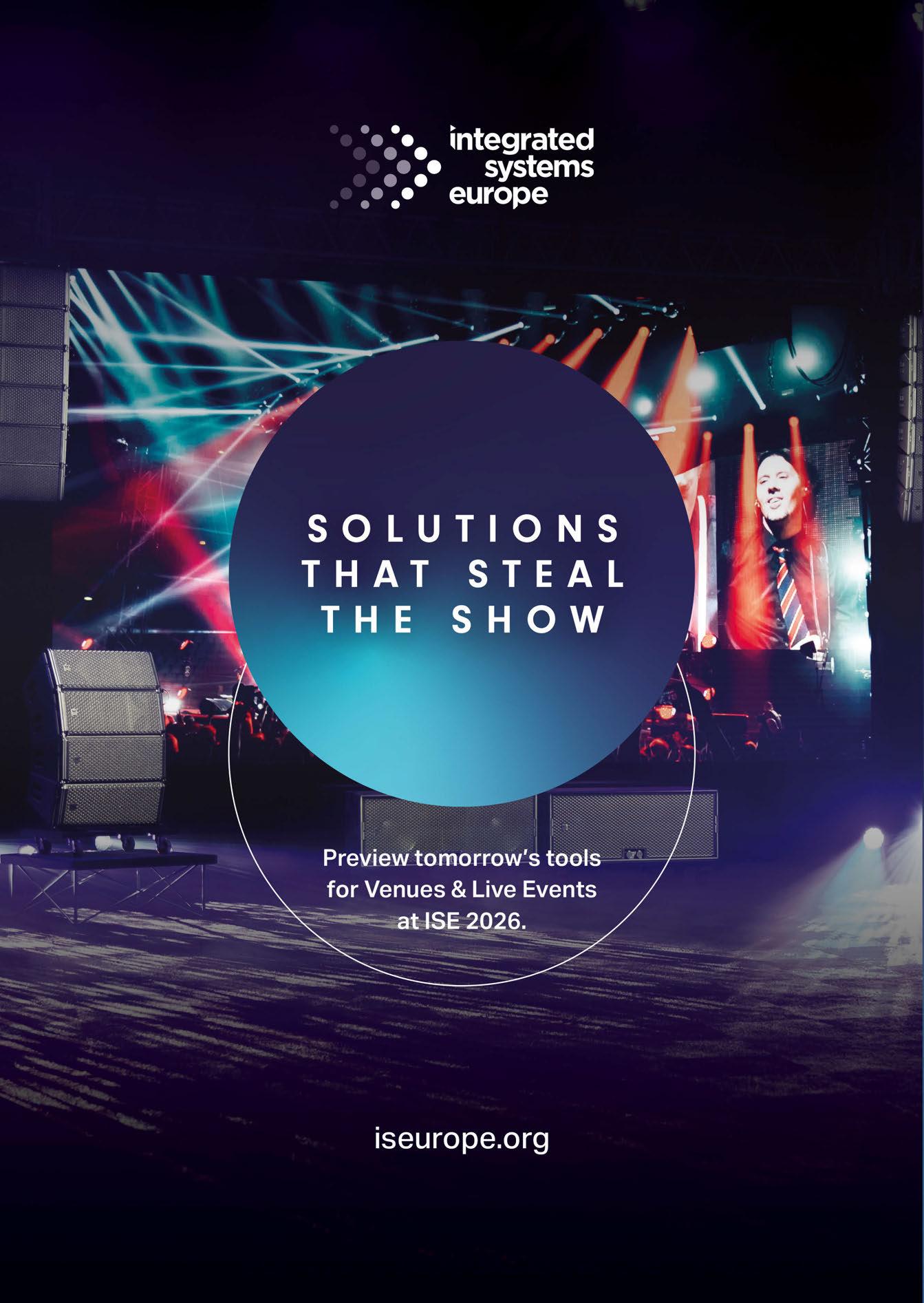

Damascus International Fair Opening Ceremony
Artevor delivers a celebration of a landmark moment in Syria’s re-emergence on the global economic stage, with 80,000 people in attendance.
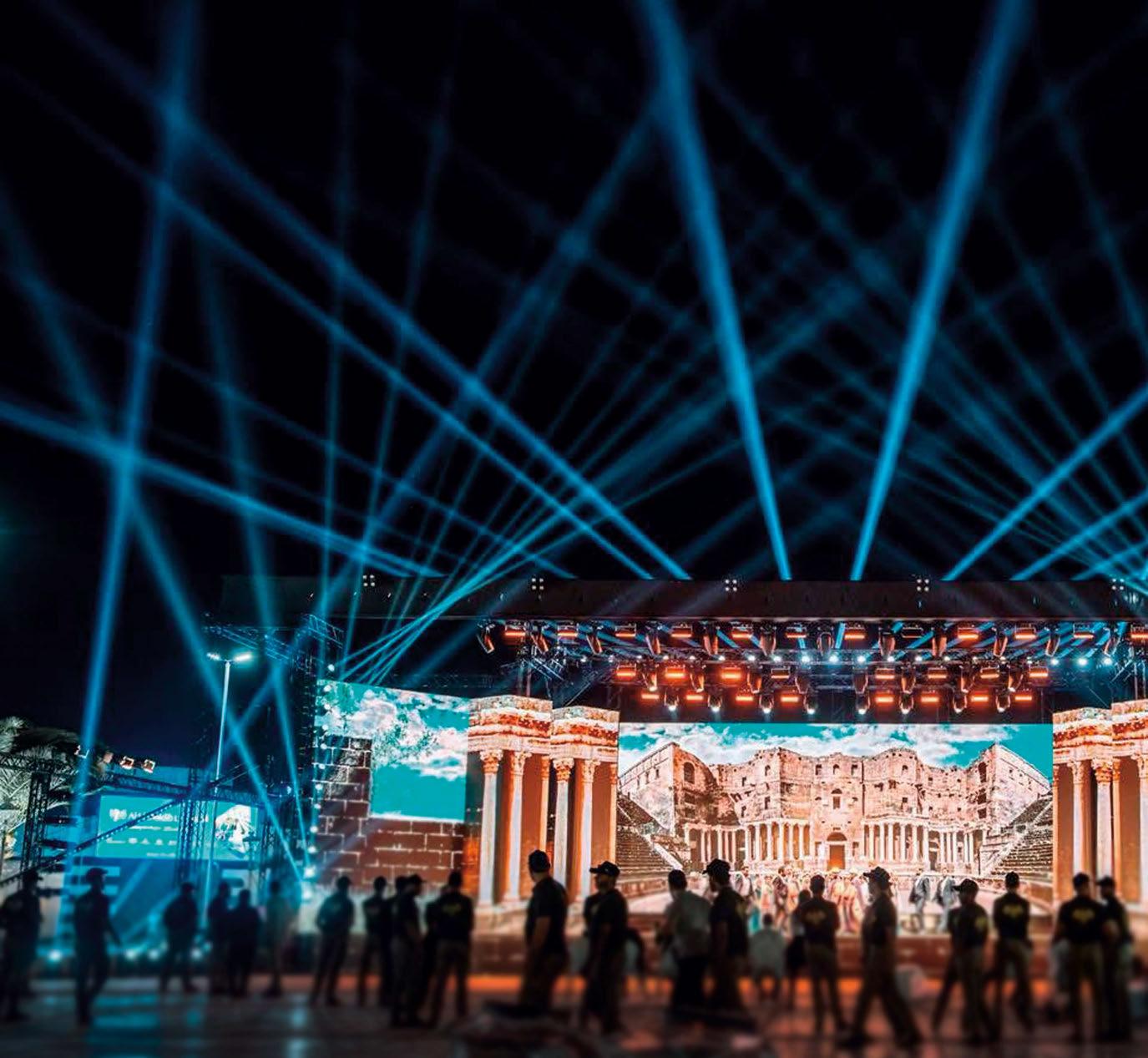
First held in 1954, the Damascus International Fair is one of the world’s oldest trade exhibitions, boasting a rich history of welcoming visitors from all corners of the globe. After more than 14 years of interruption due to the war, the Syrian Exhibitions and International Markets Foundation relaunched the Fair, with the 62nd edition taking place from 27 August to 5 September 2025.
With the Syrian events industry still working its way back full strength, Dubai-headquartered production house Artevor was tasked with bringing to life a grand Opening Ceremony that lived up to the historic occasion, and the company turned to experienced live events professional and Syrian national, Bashar Dardari, to lead the project delivery team.
“Given the scale of the challenge and the lack of local systems, teams, and expertise to deliver an event of this magnitude to an
international standard, as a Syrian national with extensive international experience in large-scale productions, I was invited to join the project,” he explained. “It was a privilege to help bring back such an iconic cultural and trade landmark for Syria after more than 14 years.”
With only one week to prepare, Dardari took on a dual role as both Project Manager and Stage Manager. “This combined responsibility allowed me to connect the overall planning with real-time backstage execution, ensuring that nothing was lost between concept and delivery,” he said. “My focus was on creating a clear, efficient plan that avoided unnecessary complexity.”
A man of many hats, Dardari’s charges ranged from coordinating suppliers and assigning responsibilities to overseeing rehearsals and managing backstage operations during show night. “With around 70 performers appearing on stage, we established a full backstage area
with dressing rooms and support facilities, which I supervised directly alongside one senior colleague and four local assistants,” he recalled. “This dual involvement meant I could maintain a consistent flow from the early build stages right through to the live performance, guaranteeing precision and smooth delivery.”
The Opening Ceremony took place in the large outdoor square of the Damascus International Fair, with more than 80,000 people attending on the night.
“M anaging such a vast audience in an openair setting brought its own challenges, but it also created an unforgettable atmosphere that could not have been achieved indoors.”
The artistic programme on stage was created and directed by Inana Dance Theater Company, founded in 1990 by choreographer Jihad Mufleh. “Inana is one of the leading dance theatre companies in Syria and the Arab world, known for

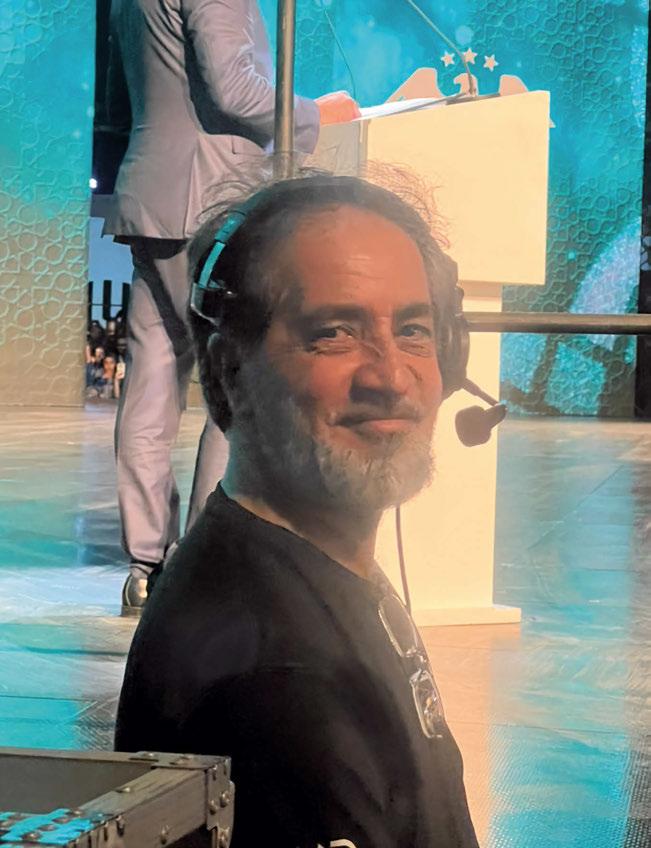

combining Arab history, culture, and folklore with contemporary performance,” Dardari explained. “Their work was central to the creative success of the Opening Ceremony and complemented the technical production beautifully.”
All technical equipment for the project was supplied by Artevor, with the company deploying its inventory from both Riyadh and Dubai for the project. “Artevor provided the complete package – including logistics, transport of equipment from both cities to Damascus, and full technical support,” Dardari reported.
“I mpressively, all equipment arrived a full day ahead of schedule, reflecting the company’s reliability and sense of responsibility.”
The show was built on a robust rigging system using TT, ST and FD trusses, along with Eurotruss structures for both stage and overhead support. Absen PL V2 3.9mm LED was the video display product of choice, with a combination
of flat and curved sections displaying content produced by Artevor. There was also an extensive lighting rig, with a selection of Ayrton and Robe fixtures as well as Cyclops Lighting beams and strobes, and a range of profiles and fresnels, all controlled via MA Lighting grandMA3 software and hardware.
Ar tevor also supplied the six core senior technicians who Dardari described as “the backbone” of the technical team onsite. “In addition, we worked with a small but effective support crew in Damascus, including four local PR staff, one runner, and one driver,” he added. “To execute the onsite build, we also coordinated with around 12 local labourers per day. The overall delivery was overseen by Radwan Zarki of Artevor, whose leadership and commitment were instrumental to the project’s success.”
Despite the project initially feeling “almost impossible” Dardari was delighted with the
eventual outcome. “Within just one week, we delivered a full-scale international production under extremely difficult conditions – on time, without errors, and to a world-class standard,” Dardari reflected.
“B eing part of reviving such an important cultural and trade landmark was an unforgettable professional and personal milestone for me. The thing that I am most proud of is the spirit of collaboration and resilience shown by the entire team,” Dardari concluded.
“After more than a decade without this event, witnessing the audience’s reaction and the energy inside the venue was unforgettable. It proved that, even under the toughest circumstances, teamwork and determination can achieve something truly remarkable.”
Photos: Artevor, Bashar Dardari www.seife.gov.sy www.artevor.com
Above: Bashar Dardari held the dual role of Production and Stage Manager.
G42 Supercharged Forum 2025
As CTME deploys the region’s largest d&b audiotechnik Soundscape system to date, TPiMEA catches up with Head of Audio, Wissam Shaheen, who discusses the wider conversation around spatial audio, as well as some of the other key figures behind the overall project delivery.

Once the preserve of cinema and studio settings, spatial audio is becoming increasingly popular in the world of live events. Known to many as immersive, object-based or three-dimensional audio, the principle of spatial audio in live events dictates that each individual sound – whether it’s a voice, a traditional instrument, or something generated electronically – is treated as a distinct sound object, with the flexibility to position it in space not just according to its physical origin but also creatively within a 360° auditory landscape.
“Spatial audio transforms our approach to sound design, allowing for a level of creativity and narrative depth previously unattainable,” commented Head of Audio for Creative Technology Middle East (CTME), Wissam Shaheen, explaining how the approach harks
back to the era before electronic sound amplification, echoing the days when the placement and source of sound naturally guided the audience’s attention.
“I magine a 19th-Century orchestra where the solo of the first violin or the entry of the brass section commanded immediate focus, facilitating a form of storytelling that directed listeners’ attention precisely where it needed to be,” he posed. “At the heart of this approach is a return to the fundamental ways that our brain perceives and analyses sound.
“This shift transcends traditional mono and stereo setups, ensuring that every seat in the venue offers an optimal listening experience. Effectively, every spot is the sweet spot,” he added. “This evolution in live sound amplification not only enhances clarity and immersion but also
democratises the auditory experience, ensuring that every listener, regardless of their location, is fully engaged in the event’s narrative.”
As early adopters of spatial audio technologies, including d&b audiotechnik Soundscape and L-Acoustics L-ISA, CTME is well-equipped to meet the growing demand for spatial audio. However, according to Shaheen, the challenge isn’t just in adopting these technologies; it’s in educating content creators, producers, artists, engineers and audiences about their capabilities and advantages.
“O ur aim is to demystify how these systems can significantly improve the quality and immersion of live events, ensuring all stakeholders recognise the substantial value they bring to any production,” he commented. As audience expectations rise, Shaheen
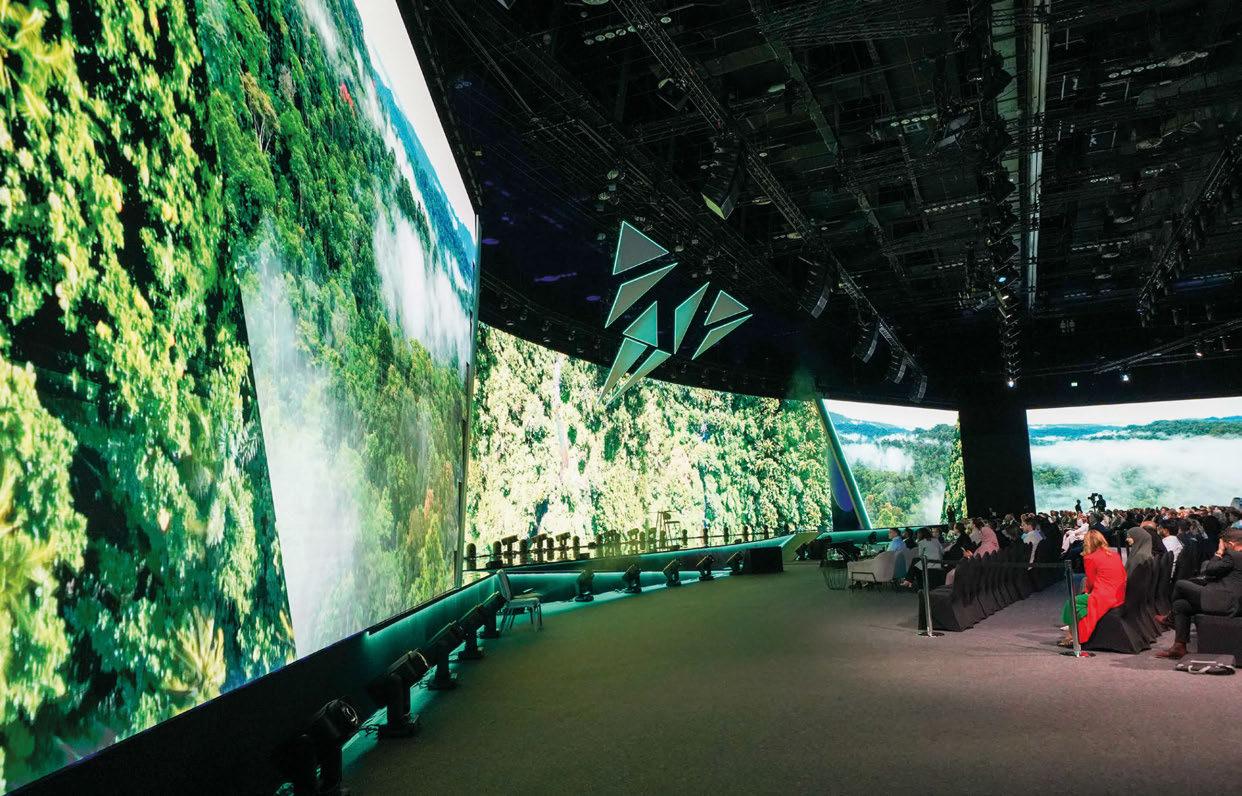
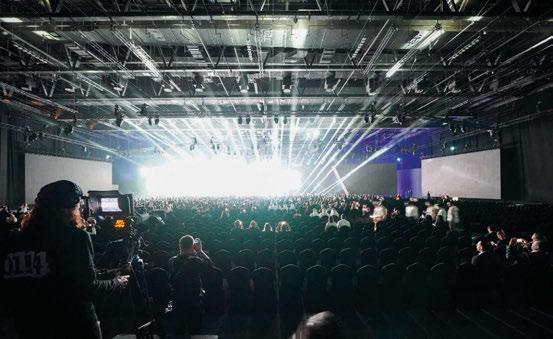

anticipates a trend towards more personalised audio experiences, where individual listeners can choose how they experience the sound at a live event – either in a venue or even virtually.
“Advancements in spatial audio will likely lead to more sophisticated integration with other elements of live events, such as augmented and virtual reality,” he predicted. “We’re committed to ongoing partnerships with leading audio technology companies. This enables us to have early access to new products and systems that can be integrated into our productions, offering our clients the best solutions available.”
‘This was something very special’
A recent notable example of spatial audio being utilised to its full potential is CTME’s delivery of the G42 Supercharged Forum 2025. Tasked
by client Supercollider with delivering a full technical package including audio, video, lighting, integrated networking and comms, CTME promptly delivered the largest d&b Soundscape system deployed in the Middle East to date.
“This was something very special,” Shaheen smiled. “Usually, I am the one pushing to use spatial audio, but in this case the client asked for Soundscape. They were very involved in the process, and they knew exactly what they wanted, which was a breath of fresh air.”
Six hangs of ArrayProccessed XSL8 and XSL12 loudspeakers covered the 180° field, 15 Y-Series point sources handled the surround to complete the 360°, and nine 44S added front fill.
The system was all grounded by an eightstrong array of SL-SUB for low-end extension, with amplification coming courtesy of D80 and
D40 amps. For control, a DiGiCo Quantum 338 with SD-Rack and SD-Mini Rack was set up on an Optocore loop, while 64 inputs were fed into a d&b DS100 Signal Engine running En-Scene and En-Space software.
DirectOut Technologies PRODIGY.MP was used for conversion, routing and redundancy management, with QLab running playback. The audio team also ran d&b’s new standalone show control for Soundscape, Create.Control.
The audio team built a scaled-down version of the setup at CTME HQ in Dubai and underwent a thorough preproduction phase to ensure that nothing was left to chance on site.
“We did three days of preproduction where we loaded all the content and had the whole team run through the show multiple times, reprogramming and dialling in to make it better
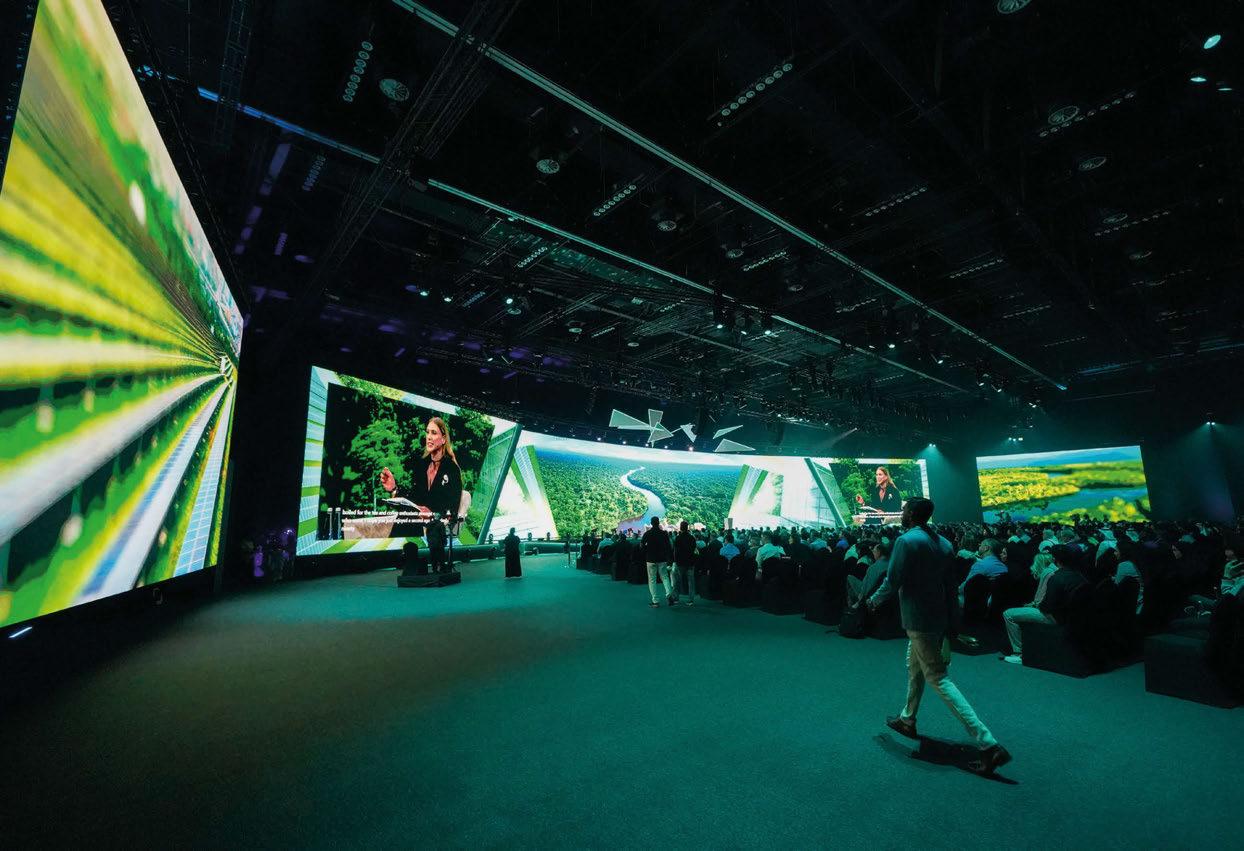
and better,” Shaheen revealed. “Once we arrived on site, we had the whole thing ready within just 48 hours, which is not easy for a show of this size and complexity.”
The audio content was composed and designed specifically for the system and the geometry of the room. “The storytelling read clearly and felt vividly real,” the Head of Audio revealed. “The system was so high resolution that we were in effect dealing with 29.1 surround sound, which gave pinpoint accuracy in terms of object placement.”
For any content that hadn’t been recorded in spatial, Shaheen recalled how his team utilised UpMix Plugin, which has the ability to convert most standard stereo tracks into Dolby Atmos 7.1. “This discovery is very important, because it means that even on gigs that haven’t had bespoke content built, we can still deploy spatial audio,” he stated.
As the Sound System Designer, Shaheen was also quick to credit his team: System Engineer, Tim Cook; and Playback Engineer, Georges Abi Aad; as well as external contributors, Soundscape Programmer, Aaron HollowayNahum of Southby London; Sound Designer, Luke Hatfield of AudioVille; and founder and Technical Director of Reactor Group, Jim Pollard – “the man who dreamed up the Soundscape upgrade and pushed hard for it, and also the show’s TD”.
A dream to work with’
As if the region’s largest Soundscape system wasn’t enough, the G42 event also featured an impressive lighting design by LD, Justin Adams. Almost 600 fixtures were deployed in all, including Ayrton Cobra, Rivale and Diablo and a Robe follow spot package, with the system built by CTME’s lighting team on an MA backbone and programmed by Adams on an Avolites console.
CT ME Head of Lighting, Sam Connolly, explained how the lighting design was built around the triangular shape of the G42 logo.
“The set included a giant scenic triangle made by Unusual Rigging, which comprised several pieces that moved independently via a Kinesis system,” he revealed. “Inside these triangles, we had DMXcontrolled LED tape, which was probably the most complicated part of the installation.”
With a short load-in time, fixtures were prepped and dressed in the CTME warehouse before the team arrived on site. “Time was tight, but we got our top in-house team on the project, and their high level of skill and experience meant the load-in went smoothly,” Connolly recalled.
On the video front, the setup featured a massive deployment of Absen 2.5mm LED, including a 42m by 7m main screen and 14m by 7m side screens, with content handled by Disguise VX 4+ media servers and a 4K Panasonic UC4000 camera system deployed to
capture IMAG content. “The technology on show from all departments was incredible,” stated CTME Head of Video, Carlos Aguilar. “Everybody went to a lot of effort to ensure that this looked nothing like a standard corporate gig.”
Aguilar was particularly pleased with the level of co-operation with the client. “The Supercollider team were a dream to work with,” he commented. “They put so much trust in us to deliver their vision, and we were delighted to be able to live up to their expectations.”
The comms team meanwhile deployed Riedel Communications Matrix intercom systems, wireless communication units, 60 two-way radios for crew coordination, and Wi-Fi distribution.
Reflecting on the project, CTME, Managing Director, Andy Reardon, commented: “The G42 Supercharged Forum truly showcased what can be achieved when vision, creativity, and flawless execution come together. On behalf of CT, I’d like to thank our client, Supercollider, for trusting us to deliver an ambitious brief.
“A s pecial thanks also to Jim Pollard, Technical Director and Founding Director of Reactor Group, whose expertise and collaboration were invaluable throughout,” he added. “This project is a testament to the power of partnership and the outstanding talent of those involved.”
Photos: CTME www.ct-group.com

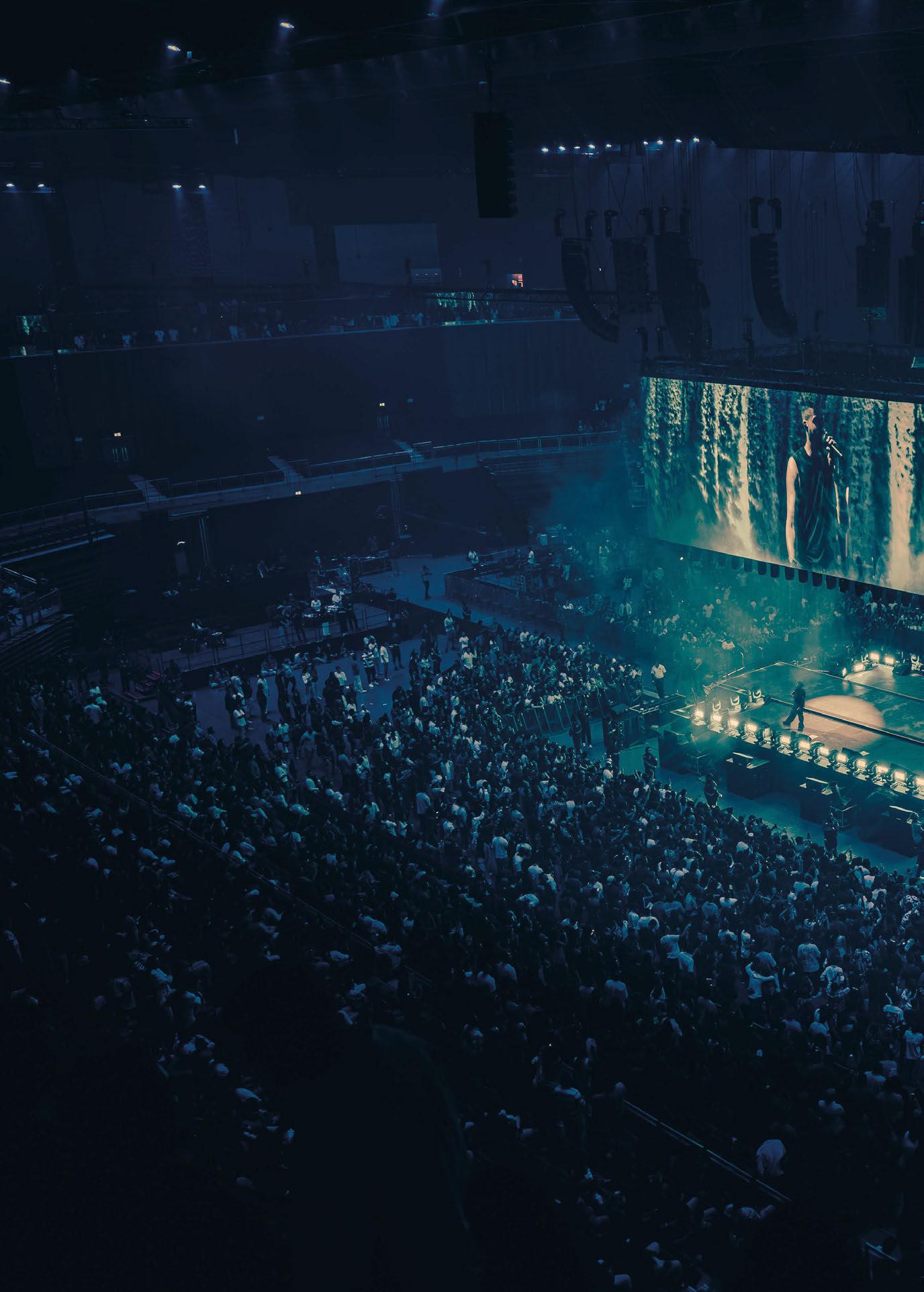
AP Dhillon
The Indo-Canadian singer and rapper wows a sold-out Coca-Cola Arena with an in-the-round production that makes full use of the venue’s brand-new in-house d&b audiotechnik sound system. TPiMEA is on site to witness the spectacle firsthand…


Coca-Cola Arena has long been a flagship indoor venue for Dubai, hosting a variety of live music, comedy, sport and corporate events since it opened in 2019. While the venue has always been busy and popular with promoters and punters alike, it’s no secret that the inhouse audio system didn’t quite live up to the high standards of the facilities elsewhere in the venue, resulting in most shows opting to bring in audio from elsewhere. However, this all changed over the summer, as Coca-Cola Arena completed a major upgrade to its audio offering, including the purchase of a brandnew d&b audiotechnik PA system.
“We inherited a system that didn’t match our ambitions, so making this change was always high on the agenda,” stated Coca-Cola Arena General Manager, Mark Jan Kar, explaining the reasons behind the investment.
“This was not something that’s happened overnight; we made a very conscious effort to undertake a thorough education process so that all stakeholders could understand the impact of the audio delivery at the Coca-Cola Arena. We’re delighted to now have a world-leading audio system at our disposal, which brings a raft of new opportunities to us as a venue.” The new
system has been put straight to work, with three outings in its first week, culminating in the reason TPiMEA was in town: to hear it deployed in an in-the-round configuration for AP Dhillon’s huge, sold-out show.
As we sat with Jan Kar an hour before doors, the sense of excitement was palpable. “It’s a big moment for us,” he beamed. “It’s fantastic to have AP Dhillon returning to the Coca-Cola Arena after his first visit last year and, with our new audio system in place, I know that every single person – irrespective of what ticket they have or where in the arena they see the show from – will walk out of this building at the end of the night having been amazed and entertained.”
This democratisation of the venue’s audio experience was a major priority for the whole team – not least Senior Director of Venue Services, Malcolm Giles, who also sat down with TPiMEA prior to doors opening.
“O ur philosophy is to control the consistency of audio,” he stated, extolling the virtues of the new system, which includes main hangs of GSL, outer hangs of KSL, flown SL-SUB, and SL-GSUB on the floor, plus 64 CCL in eight arrays of eight for the top tier and 17 24S to cover to top two rows. “Every seat in the house – regardless
of ticket category or vantage point – will now deliver the same listening experience. There’s no compromise; if the mix is good, it will sound great everywhere, from the floor to the upper tier.”
Du bbed affectionately by Jan Kar as ‘Malcolm Capex Giles’, owing to this relentless persistence towards achieving the new system, Giles explained how the audio upgrade opens the door to many possibilities at the venue that would previously have been considered out of reach. “It’s a gamechanger for us for several reasons – first and foremost being that the talent of the performers coming through the arena is now matched by the audio,” he commented. “We now have an in-house asset that allows us to put out a top-quality system at a price point that is attractive to promoters.”
With the new system set to drastically reduce the requirement for external audio rental on shows at the venue, TPiMEA couldn’t help but wonder how the region’s rental houses took the news. “We’re not here to be a competitor for rental houses; we’re simply looking at smart investments that ultimately help the P&L of the events we host,” Giles said, unequivocally. “We’re friendly with our suppliers, and at the end of the day, it’s the client’s choice. We would never push

Attention seekers scan here:

The console that deserves ALL THE ATTENTION
Representing a dramatic leap forward in power and connectivity within a remarkably compact format, Quantum 338 Pulse follows the Quantum 7 in defining the future of audio mixing. Boasting a wealth of new design features and enhancements to create ultimate flexibility of use plus the speed of operation that only Quantum can deliver, Quantum 338 Pulse is based on seventh generation FPGAs with an entirely new system architecture.
Main Features:
• 156 Input Channels
• 72 Aux / Sub -Group Busses
• LR/LCR/LCRS/5.1 Master Buss
• 24 x 24 Full Processing Matrix
• 330 Dynamic Equalizers
• 48/96 kHz Sample Rate
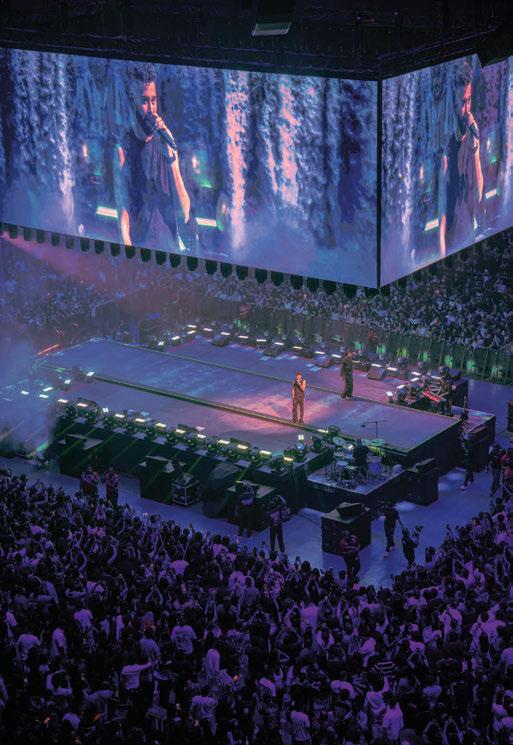
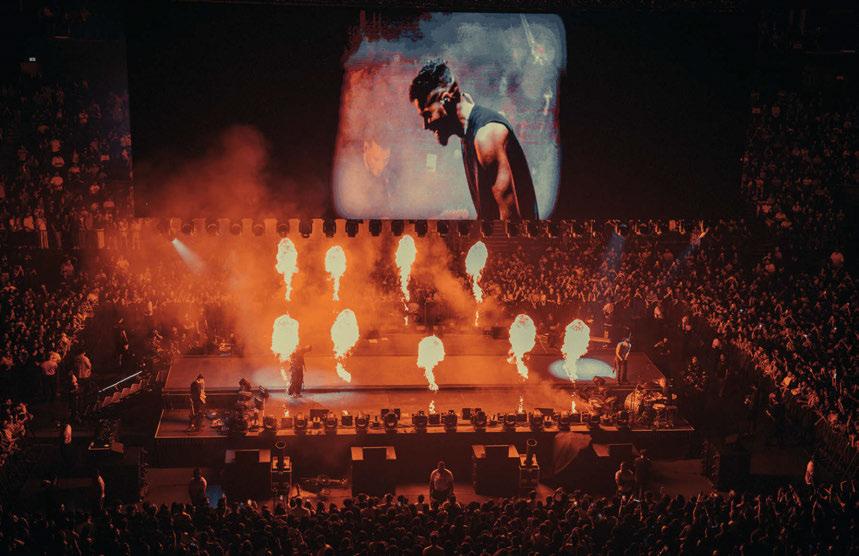
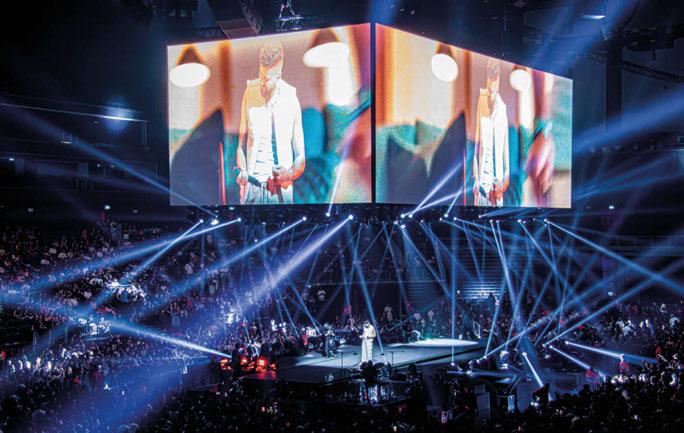
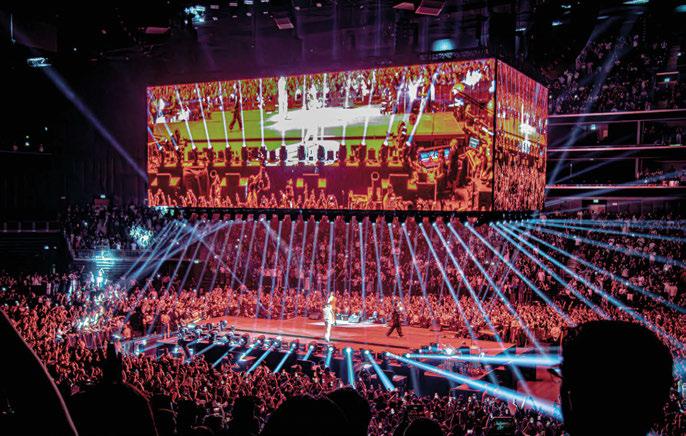
the system on a production if it’s not wanted or needed, and we would never drop the price too low, as that would devalue the investment. Either way, there is plenty of demand in the region and certainly no shortage of shows for large-format PAs to be out on.”
‘We had all the ingredients’
A major factor in Giles’ and the Coca-Cola Arena team’s decision to go with d&b audiotechnik was the company’s growing presence in the region. “We looked at the three primary systems on the market and weighed up the pros and cons of each,” Giles revealed, noting that acoustic consultant Vanguardia was brought in to provide a neutral opinion. “From the outset, d&b showed genuine passion and drive to be involved in the project and demonstrate what was possible in an arena such as ours. The company has invested in its staff in the region, and the support it could offer played a big part in our decision.”
This will no doubt be music to the ears of d&b audiotechnik Middle East General Manager,
Brad Maiden, who caught up with TPiMEA over breakfast the morning after the AP Dhillon show.
“The way we approached the project was to consider the Coca-Cola Arena and its position as a leading venue in the region and design a system that would contribute to the venue’s aspirations and enable it to achieve its goals,” he explained. “There are plenty of options for great sound systems out there, but we related to the Coca-Cola Arena team on a people level over several years of close collaboration to bring this project to fruition.”
Wh en it came to specifying and configuring the new system, d&b pulled out all the stops, calling upon the skills of not just the company’s Head of Education and Application Support (EMEA), Steve Jones, but also renowned FOH Engineer for the likes of Muse and Snow Patrol, Mark Carolan.
“Steve is an amazing system tech in his own right, and when we combined his knowledge with the expertise of Mark Carolan, we had all the ingredients for a sound system that meets the
expectations of the world’s top touring artists,” Maiden commented.
Within the commissioning process, the d&b and Coca-Cola Arena teams spent two weeks creating different configurations of the system to suit an end stage show, a half stage show and an intimate show, with presets created for each of these modes. “This gives us a good starting point for any kind of show we want to put into the venue,” Giles explained. “We often find ourselves doing back-to-back shows, so the more time we can save in prep and load-in, the better.”
With eight arrays of eight CCL covering the entire upper level of the arena, the venue now has much more flexibility when it comes to opening that area – a decision which can often come at short notice, dictated by the speed of ticket sales. “The sound in the top tiers had been an issue previously, but with CCL up there, there’s lots of bottom end, great definition, and the coverage is comprehensive,” Giles stated.
Both Maiden and Giles were keen to highlight the ongoing cooperation between the two
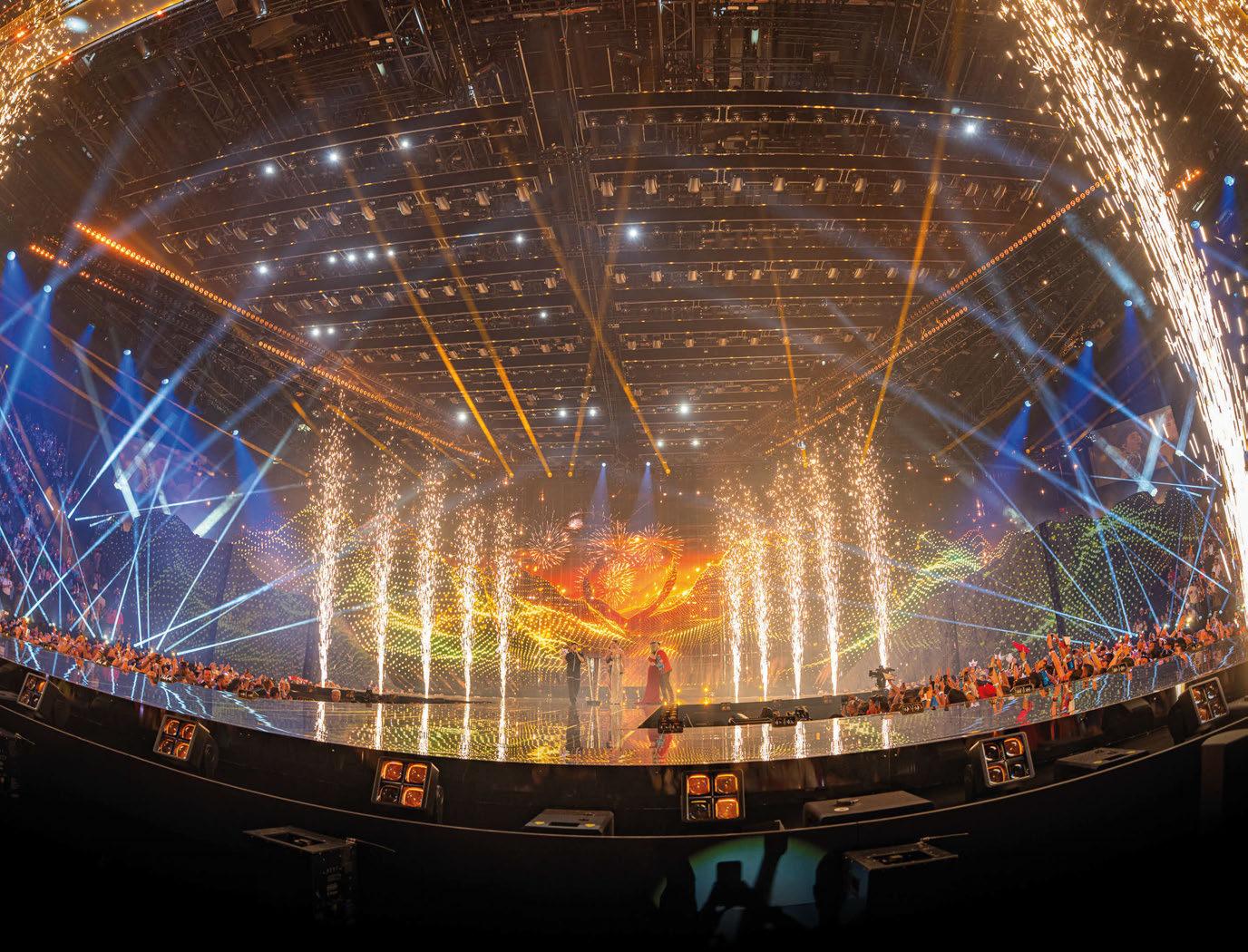
Visualize your next show with technology that breaks boundaries
For over 20 years, Disguise has powered the world’s most groundbreaking live shows, stage designs, and award ceremonies - from the VMAs to Eurovision and MDLBEAST Soundstorm. Discover how our technology lets you merge realities and create unforgettable visual experiences.
Contact us at info@disguise.one
Image Credit: Ralph Larmann
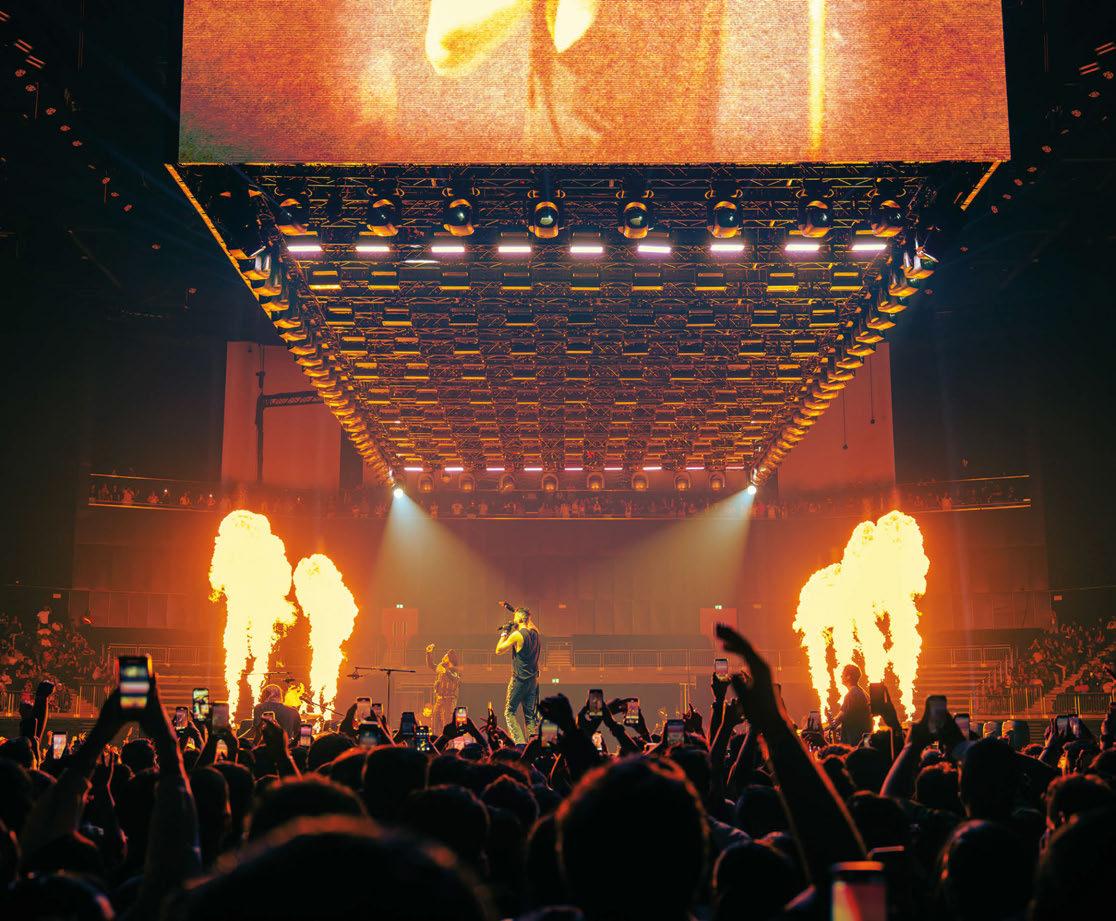
parties. “Before we got the system, we flew our Head of Audio, Bill Michailidis, to Germany to see the d&b factory and do some training,” Giles revealed. “Richard Fenton [Application and Support, d&b audiotechnik Middle East] did some training with our audio team in Dubai, and he’s also been on hand during all of our opening shows to lend support.”
Maiden described the endeavour as “a great example of a project that is developed, designed and executed between like-minded companies and people who all share the common goal of achieving the best result”. He added: “For us, it’s part of the wider goal of increasing the level of quality among the entertainment landscape in the region. As a lighthouse project for d&b in the region, Coca-Cola Arena is massive, and we believe there’s still a lot more to come.”
Also lending his thoughts on the upgrade was, James Craven, President, Live Nation Middle East, which co-promoted the AP Dhillon show: “Having a world-class in-house system at a venue makes a real difference to both the promoter and the artist,” he told TPiMEA.
“Touring artists and their production teams want to know that the venue can deliver the same standard of audio they expect in other
major cities such as London, LA, or Berlin,” he added. “It also means fans will enjoy a consistent experience no matter where they sit, and artists can focus on delivering their best performance without worrying about compromises on sound. This kind of investment strengthens the UAE’s reputation as a key stop on the global touring circuit and will help us attract even more top-tier acts to the region in the coming years.”
‘Nights like this remind us why we love what we do’
Down to business, and the new system’s first chance to show its full potential came with a 360° production from rapper and singer, AP Dhillon. Co-promoted by Team Innovation and Live Nation Middle East, technical production for the show was entrusted to Flair Event Production, which was tasked with supplying a turnkey solution including audio, video, lighting and SFX. Of course, with the new d&b system in place at the arena, it made perfect sense for Flair to contract the audio element to the venue.
Sp eaking to TPiMEA after the show, Flair’s Technical Manager, Charlie Creese, reflected on the unique challenges posed by the show’s in-the-round configuration. “In an end-stage
format, traditionally the lighting is up on trusses throughout the stage, the screen is at the back and audio is off to the side, which gives plenty of space to work in,” he explained. “However, in this 360° setup, everything is on top of each other. Lighting is inside the video, and the main audio hangs are above that, which means that each element must be worked on separately before it’s all brought together.”
As ide from the high level of precision required to accommodate the challenging load-in, the Flair team also built in extensive redundancy to the setup to ensure every base was covered. “We had so much redundancy on this show,” Creese recalled. “We had backup power, backup fibre, backup data – because if something was to go wrong, it’s very difficult to access and rectify without dismantling the whole rig.”
Th e rig in question saw 102 Claypaky Mythos and 130 CHAUVET Professional Color Strike M rigged underneath the central video element, while four Robe iFORTE fitted with RoboSpot control were deployed as follow spots.
Th e system ran off a Luminex network, with an MA Lighting grandMA3 Full Size console used for control. Flair also supplied a full atmospheric and SFX package, including MDG Me1 foggers
and Smoke Factory Tour Hazers, as well as Galaxis G-Flames, Stadium Blasters, CO2 Jets and 16 shots of confetti.
Th e video component was made up of INFiLED GXMk2 3.9mm LED, with more than 750 panels forming a giant cuboid, which was rigged centrally above an LED floor. Flair also supplied the video operator for the show, who coordinated with the camera team to link the captured IMAG content with the creative visuals, with the system utilising NovaStar MCTRL 4K processors and running on Resolume media servers.
For the audio deployment, Coca-Cola Arena’s new d&b PA system was augmented to accommodate the in-the-round configuration, with two flown hangs of 14 GSL8, four hangs of 12 KSL8, two hangs of 12 XSL8, and four hangs of four SL-SUB rigged above the central LED element. The ground system comprised 24 SLGSUB and 12 AL90, while eight arrays of eight CCL8 served the upper delay ring and 17 24S ensured complete coverage for the top two rows of seats at the back of the arena. The system was powered by D40 and D90 amplifiers, with an Avid VENUE S6L at FOH.
While AP Dhillon hasn’t historically toured with d&b, Creese explained the decision to convince the artist’s team to go with the brand for this show. “Being a d&b-powered production house since inception in 2013 – and having made the region’s first KSL system investment in 2019 – it was an easy decision for Flair to collaborate with the Coca-Cola Arena and convince the artist’s tour production to go with d&b,” he stated, noting that Flair’s audio department managed full show audio operation support on monitors and FOH, supporting the artist’s touring team.
A Di GiCo Quantum 338 was the monitor console of choice, with eight d&b M4, a Y-SUB and a D80 amplifier providing on-stage sound. A Shure Axient Wireless system was also deployed, with a selection of microphones from the same brand used for both vocals and instruments.
On -site to aid in the deployment was d&b audiotechnik Middle East’s Richard Fenton. He gave his thoughts on the system. “Having worked on many 360° shows with older d&b systems and other manufacturers’ PA systems, I was very pleased to find out how simple it is to achieve a great result with SL Series,” he began. “Coverage was impeccable throughout the entire venue and audio was clear and precise due to the full broadband directivity control.”
On e aspect of the system that received particular praise was the low levels of noise that were achieved on stage. “I heard nothing from the rear of the systems pointing the other direction,” Fenton reported. “Stage levels were eerily quiet and controlled due to the cardioid behaviour of the main hangs; this allowed clear and precise monitoring on stage without needing to drive the M4 monitors too loud.” Creese concurred: “You could have a normal conversation from monitor world in the corner of the stage but if you stepped back a couple of metres, you’d feel the full power of the system. It was very impressive.”
Fe nton also employed d&b’s ArrayProcessing to ensure “seamless coverage from the front seat all the way to the back row”. He added: “The sonic signature of ArrayProcessing also created seamless horizontal arraying between the GSL, KSL and XSL hangs. In all, it was a great night and a fantastic show that had everyone dancing from


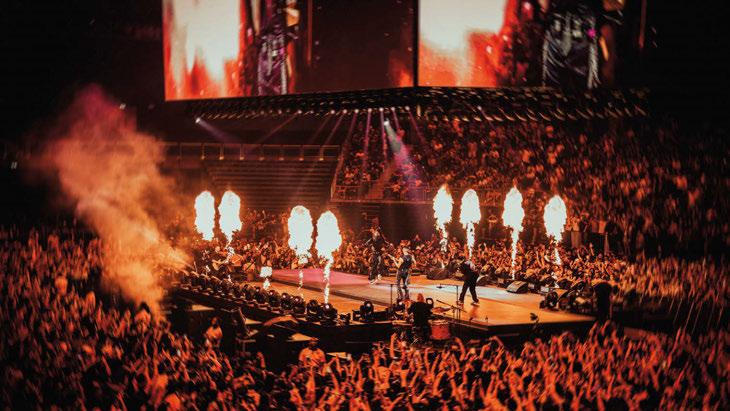

the front row all the way up to the very back seat of the arena.”
For Creese, it was the combined efforts of his entire team that gave him the biggest level of satisfaction. “The way we were able to bring all the different elements together and collaborate with all the stakeholders was very pleasing,” he commented. “We made all the elements off site to keep load-in time to a minimum, and we got the show de-rigged in just three-and-a-half hours, so we could hand the venue for 4.30am.
“Endless respect to my team for making it happen, to AP Dhillon and his crew for the vibes, and to the Coca-Cola Arena team for being a dream to work with. Nights like these remind us why we love what we do.”
‘There’s not a bad seat in the house’ It wasn’t just a big night for Coca-Cola Arena, with the show also representing a major milestone for promoter, Team Innovation. Also speaking to TPiMEA before doors opened, Team Innovation co-founder, Sagar Chandwani, shared his excitement at seeing AP Dhillon return to Dubai. “This is AP’s second major show in Dubai, and both times he has played in the centre stage format – the only artist to do this at Coca-Cola Arena,” he commented.
While Team Innovation started as a nightclub promoter in India over a decade ago, the
company moved into the world of live events in 2021, promoting AP Dhillon’s first tour of India in the same year. Since then, the artist’s profile has grown exponentially, which brings with it an increase in expectations when it comes to production values.
“It’s vital to have the very best production,” Chandwani stated. “AP’s songs have a lot of emotion, and to see them enhanced by worldclass production is incredible. The audience expect these high levels now and we must deliver them. And if the audience enjoy it, they have shown that they will return again and again.”
Chandwani praised the “phenomenal” CocaCola Arena, dubbing it “the venue the city really needed”. He stated: “Coca-Cola Arena delivers on every level. You could produce any kind of show here and there’s not a bad seat in the house. They have everything you need from A to Z to make putting on a show here a seamless experience.”
This rings true with what Coca-Cola Arena GM Mark Jan Kar explained, commenting that the recent investment in equipment was part of a much bigger, long-term plan. “As important as the main PA is, that was only part of the investment,” he commented. “We’re investing across the board, from growing and training the technical team to the development of our own ticketing platform, everything we do here is with a view to improving the experience for the audience.”
With the venue now well established in Dubai’s live events landscape, for Jan Kar, it’s all about streamlining efficiency. “We’re already doing 135 shows, plus corporate events, every year. When you add up all these shows, the bumpins required for them, and factor in the slightly quieter month of Ramadan, there’s not much capacity left,” he commented.
“We can’t add more dates in a year, so we now look to continue to improve the quality of our offering, attract the biggest and best, and come up with solutions to maximise our output. A couple of years ago, it would have been very rare to get a big act playing not on a Friday or Saturday, but now we’re seeing that more and more – AP Dhillon selling out on a Sunday night is a prime example,” he continued.
“O ur ambition is to be among the top five venues in the world from the artists, technical, corporate and, most importantly, from a fan perspective – and we will do everything in our power to strive for that target.”
Photos: Team Innovation, Coca-Cola Arena, Flair Event Production www.coca-cola-arena.com www.apdhillon.co www.teaminnovation.co.in www.livenation.me www.flair.ae www.dbaudio.com














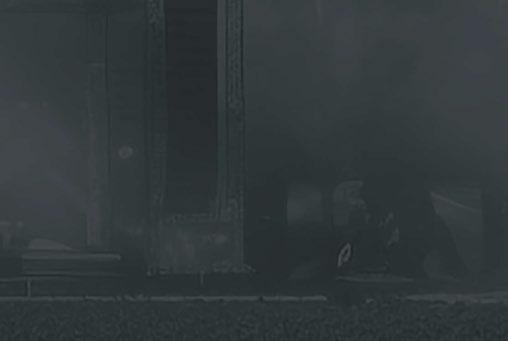



Howard Events presents: Jonathan Roxmouth –My Favourite Broadway
L-Acoustics’ L-ISA Hyperreal technology makes its South African debut, integrated into a glittering tribute to the golden age of musical theatre.
The South African live events industry has had to be patient when it comes to L-Acoustics’ L-ISA technology, with the COVID-19 pandemic putting paid to the efforts of early adopters. However, after a long and bumpy road, event design and production company Multi-Media led the way this summer, rolling out the technology on actor and singer Jonathan Roxmouth’s hugely successful My Favourite Broadway produced by Howard Events.
Featuring the newly launched 32-piece Egoli Symphonic Orchestra, conducted by Maestro Adam Howard, the production proved to be a huge hit, with Johannesburg’s Teatro theatre close to capacity for each performance of the eight-show run.
“We had been looking for an opportunity to get the L-ISA system deployed in South Africa for a long time, but we were aware that it needed to be the right project if it was going to make the kind of impact we wanted,” commented Jason Fritz, Director of Production and Technical at Multi-Media, explaining the backstory behind the project. An early adopter of L-ISA, Multi-Media
had already invested in the equipment required. All that was needed was the right production to deploy it on and, importantly, the people with the training to pull it off. “This is where Duncan came in,” Fritz commented, referring to DWR Distribution’s Duncan Riley. “He drove the training side of things, arranging for 12 of the country’s top audio engineers – including three of our team – to come to our studio and do the L-ISA training.”
Riley in turn credited DWR’s Head of Audio, Richard Smith, who was heavily involved in the organisation of the training and supporting all parties in the lead-up to the project, as well as L-Acoustics Application Engineer, Adriaan Van Der Walt, who conducted the training course.
“Adriaan came to facilitate the training, and his experience and expertise was invaluable,” he reported. “We were able to get 12 engineers certified and accredited, which means that it is now much easier for projects like this to be pulled off in South Africa.”
Alongside the training, plans were being hatched to integrate the L-ISA technology into Jonathan Roxmouth’s My Favourite Broadway
show. “As soon as we pitched Jonathan and Adam the concept and played them the tracks in the studio, they understood completely,” Fritz commented. “The buy-in was immediate.”
On e of the major benefits of having spatial audio was the ability to “put the sound where you see it”. Van Der Walt explained: “Using Hyperreal localisation, Jonathan’s voice could be tracked extremely accurately, while spatial unmasking allows the audience to hear each instrument and voice with much greater clarity and connect better with the music.”
While Musical Director Adam Howard had heard L-ISA in demo form before – and even owns his own Dolby Atmos studio – this was the first time he had experienced it in a real-life setting. “It’s so realistic in the way it presents a live performance – an orchestra in particular – where you actually don’t notice the technology,” Howard commented. “You don’t feel that you can hear the speakers in the room, which I suppose is the best way a piece of technology can be integrated. It was the best live sound I have ever heard involving an orchestra in my 28-year career.”


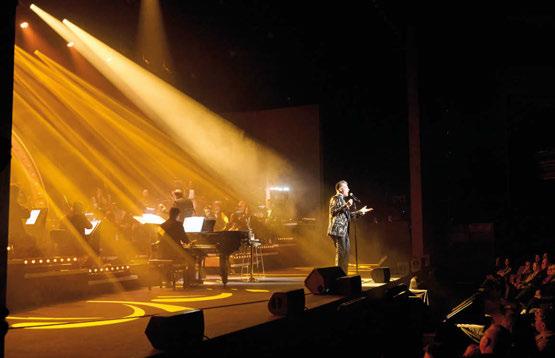
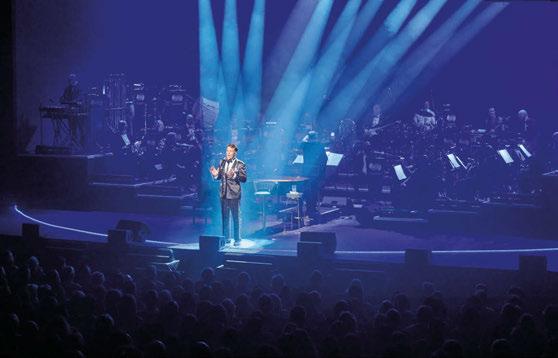
While the early version of the system was just a frontal scene, it soon grew into a fully immersive deployment as the project progressed. “That is when you start to notice how incredible the technology is,” recalled Riley. “The effects played a major role, and you had people turning around wondering where the sound was coming from.”
Th e system featured 54 KARA II for the main scene, with 12 X12 for surrounds, seven X15 HiQ under the balcony for spatial fills, and seven X8 for spatial front fills, powered by a combination of 17 LA12X and two LA4X amplifiers.
FO H Engineer Morné Swanepoel manned a DiGiCo SD10, with a total of 77 input channels including instruments and Dante and 33 output channels for L-ISA, using an L-ISA Controller to manage the spatial audio. “On the integration side, we included the L-ISA servers in the Optocore loop of the DiGiCo SD10s and used 33 inputs and direct outs for the backup signal for amp inputs,” Swanepoel explained. “For the main signal to the amps, we used an LC16D to convert
MADI to AVB that utilised the existing network to distribute the main signal to the amps.”
Reflecting on the delivery, Fritz pinpointed the spatial front fills and smooth, even coverage of low frequencies as standout characteristics.
“The feedback we received from Adam Howard was that this was one of the best systems he’d ever heard – like studio sound in a theatre setting,” he commented. “We also had several people – both in the industry and normal punters – approaching FOH to ask how it was done.
Once you’ve experienced something like this, it’s difficult to go back to stereo.”
DW R’s Head of Audio, Richard Smith, was also extremely impressed with the system, having been fortunate enough to see the show several times during its run.
“I s aw the show with everyone from L-Acoustics representatives to many clients, including musical directors, church technicians, musicians, directors, and rental companies, and they all thought the audio was breathtaking,”
he reported. “Every single person commented on how amazing it was to hear the instrument coming from where they saw it on the stage and they loved the tracking of Jonathan’s voice.
“This show was a brilliant example of the power of L-ISA to truly bring the audience into the performance,” he added. “I am truly impressed by what was accomplished in such a short time by the creative and technical team. A huge congratulations to everyone involved.”
‘Everyone gets excited about everything’ It’s important to note that the audio wasn’t operating in isolation. In fact, the production was fully integrated, with audio, lighting and video all tracking the artist in sync, using Modulo Pi KineMotion as the backbone. “Wherever Jonathan walked, the lights, audio and video would follow,” Fritz recalled. “It was an incredibly efficient and effective system.”
De lving into the use of the Modulo Pi system, Lighting Designer Oliver Hauser explained how
he accommodated it within his workflow. “We had a variety of infrared cameras on stage, and an infrared beacon that Jonathan wore on the back of his jacket,” he noted, going on to describe the pre-production process.
“We had to set up the system in the 3D environment, making sure that the stage dimensions matched the real world exactly,” he revealed. “Then it was the same thing from an MA perspective, and we imported an MVR [My Virtual Rig] and built the show in the 3D world.”
Hauser described the system as “almost plug and play” from that point. “We spoke to Modulo Pi via a PosiStageNet protocol, and apart from a few minor calibrations, it was super quick and easy to set up,” he recalled. “It was my first time using Modulo Pi and I couldn’t believe how simple and effective it was.”
Having worked closely with Jason Fritz on several Howard Events productions, Hauser once again teamed up with Fritz on the overall production design as well as devising the lighting design and programming the show.
“The show is almost like a review, showcasing all the songs that are special to Jonathan,” he explained. “We used a set of three LED screens to simulate the effect of elements flying on and off the stage and also enclose the space to make it feel more intimate, considering that Johnathan

























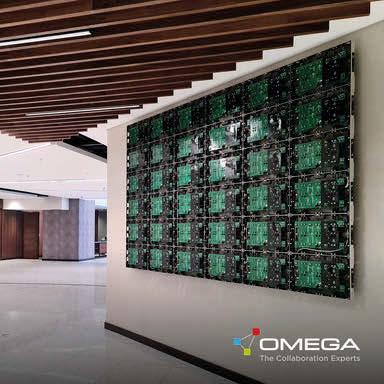





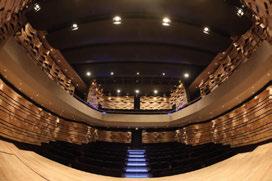





















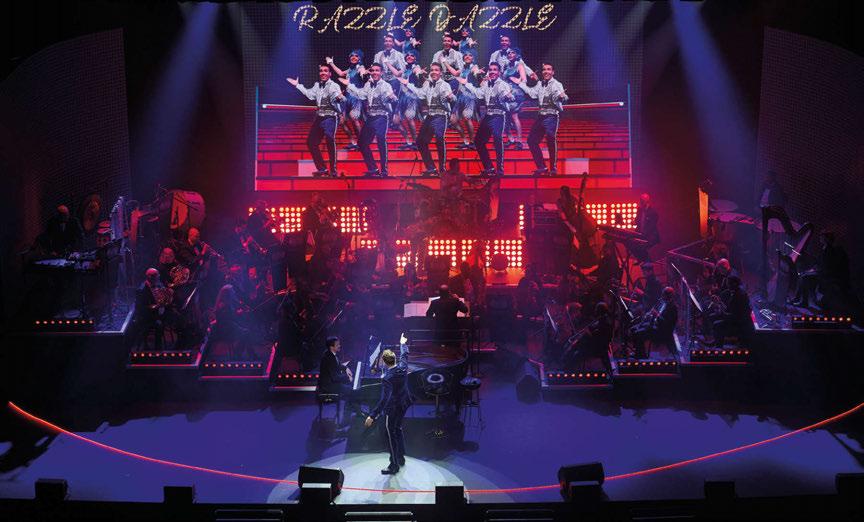
was on stage alone.” With the goal of creating a very theatrical look, Hauser used the floor package sparingly. “With a Broadway show, you don’t have many fixtures on the floor, otherwise it starts to feel like a concert and we wanted to stay away from that,” he explained. “We kept some eye candy stuff on the floor, but we didn’t use it to the extent where we felt like it was rock ’n’ roll.”
Th e LD specified a rig of almost exclusively Robe fixtures, with 24 ESPRITE for overhead spots and key light, 16 LEDBeam 350 and 24 LEDBeam 100 for overhead washes and high sides to light the orchestra, plus four LedPOINTE, four SVB1 and 11 CycFX8 also deployed. “DWR was a huge support in bringing in the ESPRITEs and LEDBeam350s, making sure they arrived in the country in time,” Hauser noted.
Th e only non-Robe fixtures came in the form of 13 Elation CUEPIX Panels that gave background light for the orchestra and two Robert Juliat ARTHUR follow spots, which were manually operated at the artist’s request. “Jonathan was very clear that he wanted a traditional follow spot with a human behind it,” Hauser stated, explaining the decision to go manual instead of automated. “He wanted this strong beam of light coming over the audience, and the Robert Juliat ARTHUR delivered it beautifully.”
Hauser operated from an MA Lighting grandMA3 onPC command wing, with no timecode used. “I’ve worked with Jonathan for many years; he plays a big part in putting the creative together, and he’s always been a fan of that organic feel to his shows,” he revealed. “It ends up being a mixture of busking and creating a main cue stack, which is nice because it keeps it fresh and maintains that live feeling.”
In terms of highlights, rather than focussing on the biggest and most complicated looks, Hauser highlighted Rhapsody in Blue as a notable example of how to let the music do the talking. “That was probably the most difficult song to light because we were torn between putting 100 cues in the song or just leaving it minimal so the music could speak for itself. We took the latter route, with only around 10 cues in the song, and it was simple yet very beautiful.”
Hauser also shared his opinions of L-ISA and explained how the audio can have a knock-on effect on the lighting. “The L-ISA technology had a major impact in what I do,” he said. “It meant that I didn’t have to concentrate as much on highlighting where solos were coming from, because the audience could hear exactly where the music was coming from anyway.”
Reflecting on the project, the LD stressed the importance of each department coming together. “It was great to see all departments come together, with everything built around a little infrared beacon. When Jonathan walked to the stage left or stage right, his voice would follow, and so would the lighting and the video,” he said. “When all departments come together, everyone gets excited about everything, and that’s important for any show. Departments are not operating individually; you’re working together to make the show extraordinary.”
Photos: Lauge Sorensen www.jonathanroxmouth.com www.howardaudio.co.za www.multi-media.co.za www.hldesign.co.za www.dwrdistribution.co.za www.l-acoustics.com
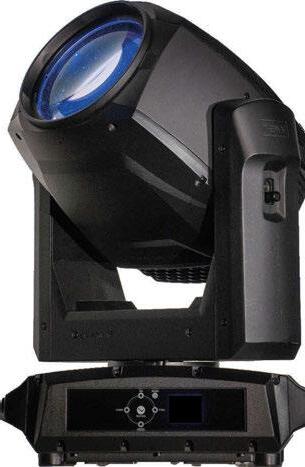
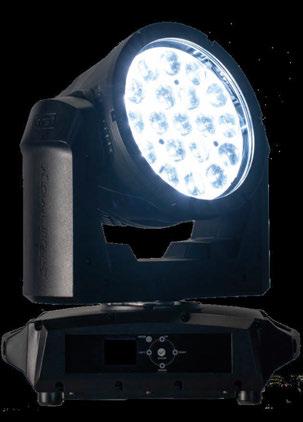

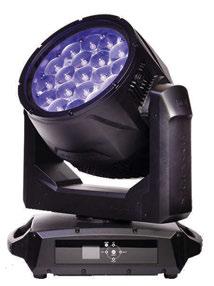

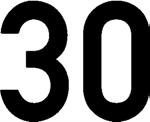


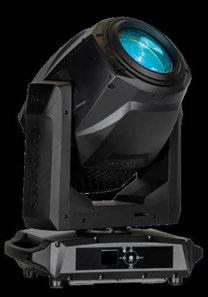

-45dB: sound reduction is just the start
With patented noise-cancelling technology built into its bespoke event and exhibition structures, sound reduction specialist -45dB is entering the GCC market with a bang…
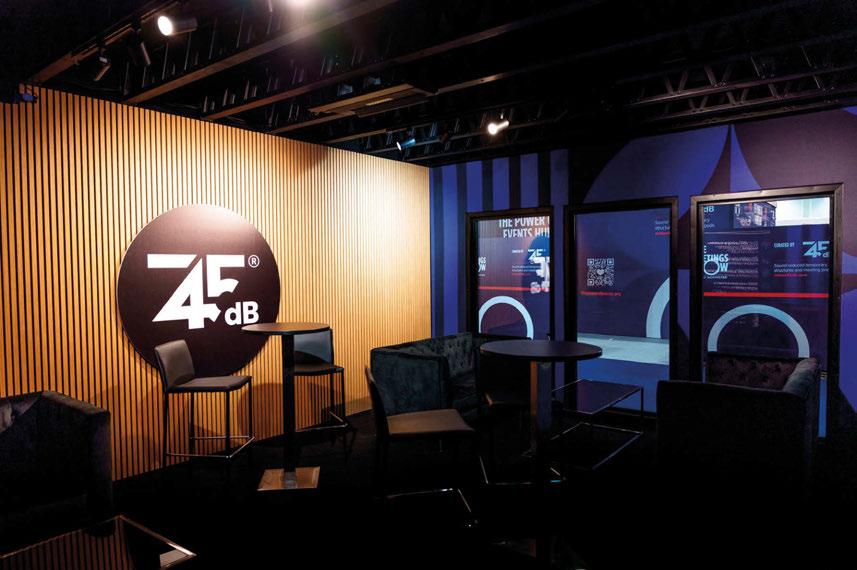
Events of any kind live or die by how successfully each individual element of supply and production comes together to create a product that becomes greater than the sum of its parts. This ethos is one that the team at sound reduction specialist -45dB buys into wholeheartedly. Not content with developing a patented sound reduction product that boasts myriad advantages over existing alternatives, the company is on a mission to ensure that its offerings cater to a wide variety of industry needs, ultimately adding value and improving any event they are deployed on.
“As well as offering unrivalled sound reduction qualities, our products are created with the industry in mind,” commented -45dB Managing Director, Jon Noonan.
“The most important consideration for us is how our products interact with other parts of the industry; they are built to slot into the events
ecosystem seamlessly, catering to the needs of other suppliers and contributing to the success of the event as a whole.”
As the owner of UK-based event and exhibition furniture supplier Thorns Group, which has been in business for more than 75 years and is regularly on site at high-profile events such as F1 Grand Prix, Royal Ascot and Chelsea Flower Show, Noonan has a wealth of experience in the sector. He made the decision to launch -45dB more than six years ago, after he identified a gap in the market for effective, eco-friendly sound reduction solutions.
“We had so many clients coming to us to ask if we could supply a high-quality solution for sound reduction and we realised that what people were asking for simply didn’t exist,” he recalled.
With a groundswell of demand, Noonan and his team began developing their own sound reduction solution around six years ago, finally

bringing it to market in the UK and Europe in early 2024. “The appetite we’ve seen in the UK and Europe since launch has been incredible, and we’ve grown exponentially since we launched,” he reported.
Following the early success of the company, the next logical step for Noonan was to introduce the product into the Middle East. “I’ve always found the UAE and wider GCC market to be an attractive one, and I believe there are major opportunities to be had in the region over the next decade,” he commented. “We’ve been in the region a lot over the past two years, and during that time we have built up a strong network, gained valuable feedback, and identified a definite demand for our offerings.”
Af ter launching formally in the region during the Middle East Event Show in June 2025, -45dB has taken the plunge with a large-scale manufacturing, warehousing and demo facility
in Dubai Industrial City and a full-time UAE-based team, including Regional Director, Jack Wilson, and Operations Director Middle East, Andrew Cooper. “The Middle East is all about growth and collaboration, and we recognised the importance of being here in the region full-time,” Noonan said. “We have big plans for the Middle East, and our team will continue to grow here accordingly.”
‘We’re innovating constantly’
At its core, -45dB’s solution is an encapsulated, hermetically sealed panel, which is made up of various blockers, absorbers and air gaps, which has a patent granted in the UK and is patent pending in India, UAE, Europe, and the US. However, according to Noonan, aside from the “clever bit of kit” at the core of the company, it’s the full package that makes -45dB really unique.
“It would have been very easy to just build a space that caters to the basic requirements of sound reduction, but the real challenge comes around how other suppliers interact with the product,” he explained. “How do AV companies work in our spaces? How do branding companies integrate with them? These are all questions we had to answer with the development of the product.”
The company’s noise-cancelling structures have a raft of features that are tailormade for the events industry – from dual commando power sockets located at both the top at bottom of the structures (to cater to both the exhibitions and events markets), to internal rigging points that can accommodate any AV requirements, to integrated air-conditioning and even a bespoke media wall panel.
Sustainability is built into -45dB’s offering, with the company’s products independently assessed by Green Circle Solutions and found to be 80% more sustainable than its closest competitors.
“The assessment came to this conclusion due to the materials used in our products, the potential for reuse and the huge reduction in time and labour on site that our products bring,” Noonan explained.
The company has already attracted significant interest in the region, with many top agencies and venues in ongoing discussions ahead of the busy Q4 – some of which started while wake-surfing around Dubai Marina.
“We have found this is a great way to break the ice,” Noonan laughed, as he welcomed TPiMEA to a session of what is fast becoming a trademark meeting activity for the -45dB team. “It’s great when people step outside of their comfort zone – and it’s certainly a lot more fun than sitting inside a boardroom somewhere!”
While the business starts to roll in, the -45dB team are already on the lookout for the next development. “We’re innovating constantly,” Noonan stated, also revealing that an outdoor product “with the potential to change the dynamic again in the GCC” is soon to be released.
“We’re specialists in sound-reduced spaces – from small pods up to large structures – but we’re always driving new IP and advancing our offerings,” Noonan concluded.
“I n their most basic form, our products are an extremely effective sound reduction tool. However, they bring so many more benefits than that. We are at the beginning of the journey, and there is a lot more to come.”
Photos: -45dB
www.minus45db.com



The -45dB team is aiming to bring its sound-reduction technology to events and exhibitions throughout the GCC.
Robert Bird Group: calm before the (Sound)storm
The engineering masterminds behind some of the region’s largest and most technically complicated events lift the lid on the incredible infrastructure and extreme engineering required to pull off MDLBEAST Soundstorm.
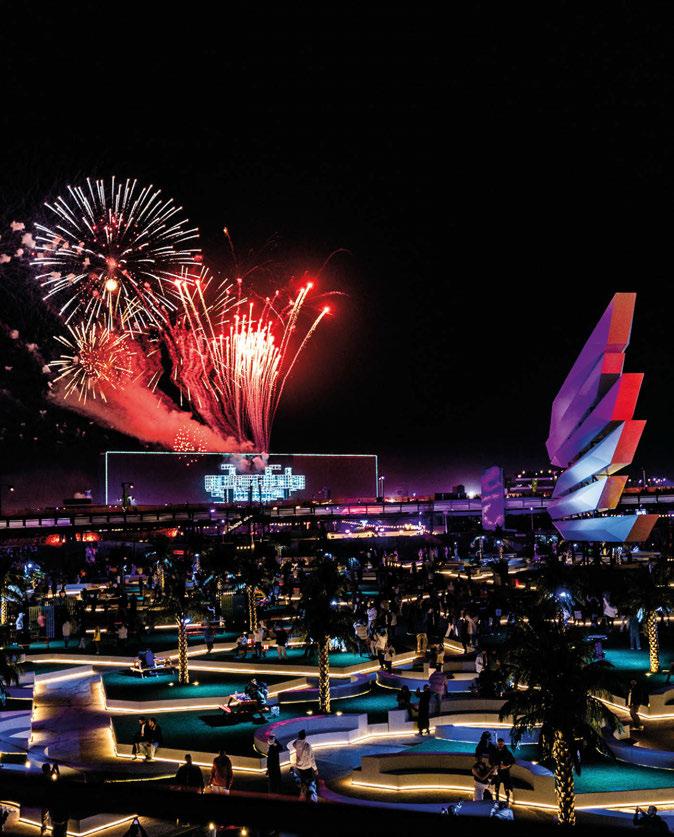
As has been well documented within the pages of TPiMEA, when it comes to size, scale and complexity, there aren’t many events anywhere in the world that can compare with MDLBEAST Soundstorm. While up to now our coverage of the annual mega-festival has focussed primarily on its eye-catching production elements, behind the record-breaking LED screens, dazzling lights, lasers and SFX, there’s an unseen engineering masterpiece that supports the entire operation.
The company behind many of these feats of engineering is Robert Bird Group (RBG) – a structural and civil engineering consultancy that lends its expertise to complex projects all over the world, working with both client and contractor to “make the impossible, possible”. Jovana Lukac, Associate Director and Events Lead at RBG, wound back the clocks on the company’s relationship with MDLBEAST.
“We’ve been working with MDLBEAST as the company’s engineering partner for the past five years,” she began. “We play a constant role, working on several MDLBEAST events throughout the year including, of course, Soundstorm, which is a year-round project in itself.”
In 2024, Soundstorm’s BIG BEAST stage smashed the Guinness World record for the largest continuous temporary outdoor LED screen [read more about that in TPiMEA#52]. “The scale and complexity of the stage required our team to lead advanced structural design efforts that balanced aesthetics, rigging capacity, and buildability – all within a dramatically short lead time,” Lukac recalled.
The stage roof structure was designed with a 600-tonne rigging capacity – making it the largest capacity stage roof structure ever built. “This enabled bold creative possibilities, such as the dramatic 15m cantilever that supported massive scenic cubes, appearing to float above the audience and intensifying the immersive visual impact of the performance,” Lukac added, noting that the entire RBG global team – spanning the company’s offices in Riyadh, Dubai, London and New York as well as Australia and South Africa – came together to deliver designs around the clock
HIGH & WIRED
URBAN ADRENALINE
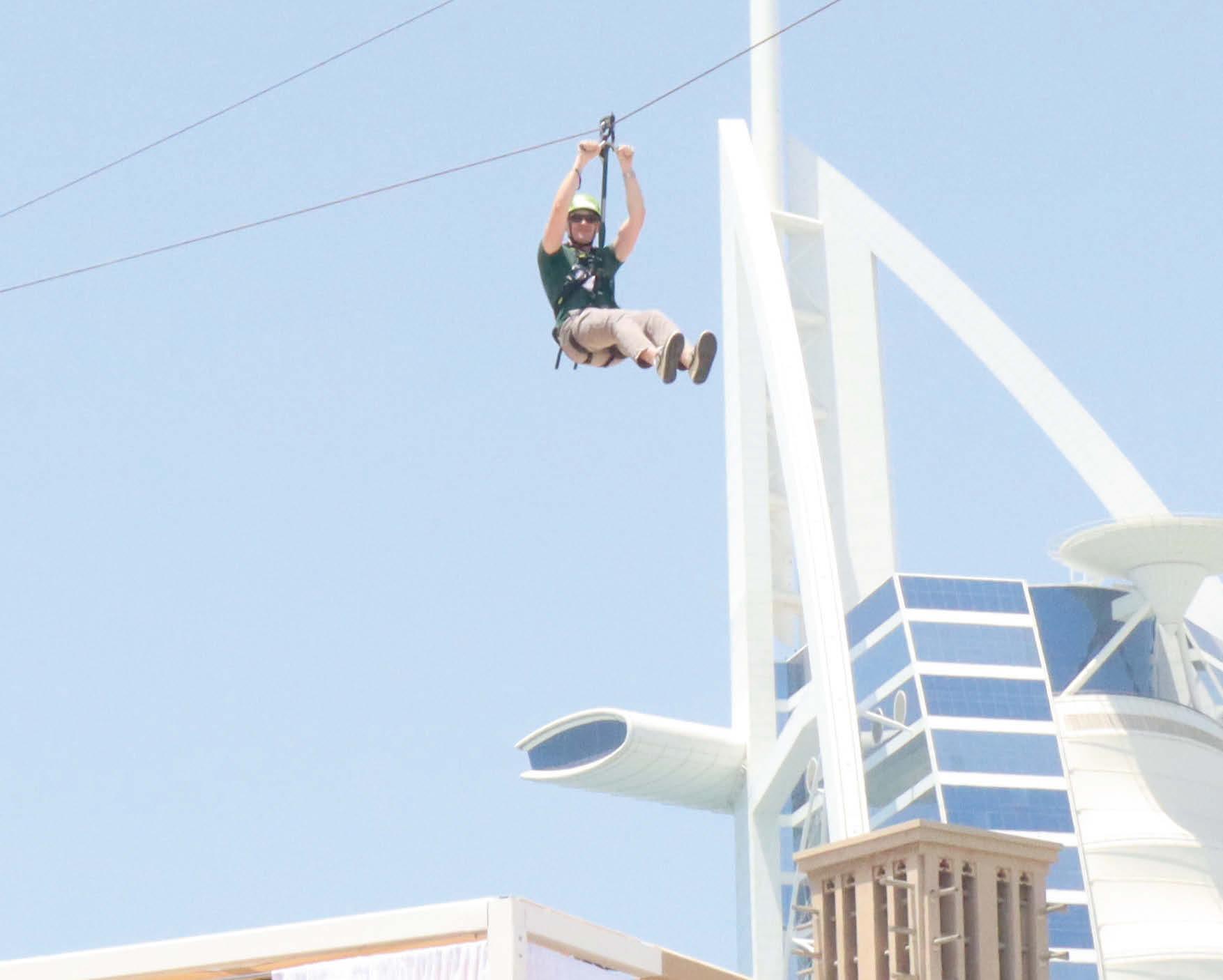
Experience the rush of our Giant Swing and the freedom of flight on our custom zipline systems designed for maximum thrill with uncompromising safety.
High & Wired delivers world-class adventure attractions combining adrenaline, innovation, and trusted safety technology.
From concept to installation, we create unforgettable experiences while keeping every detail precise.
ADVENTURE WITH SAFETY
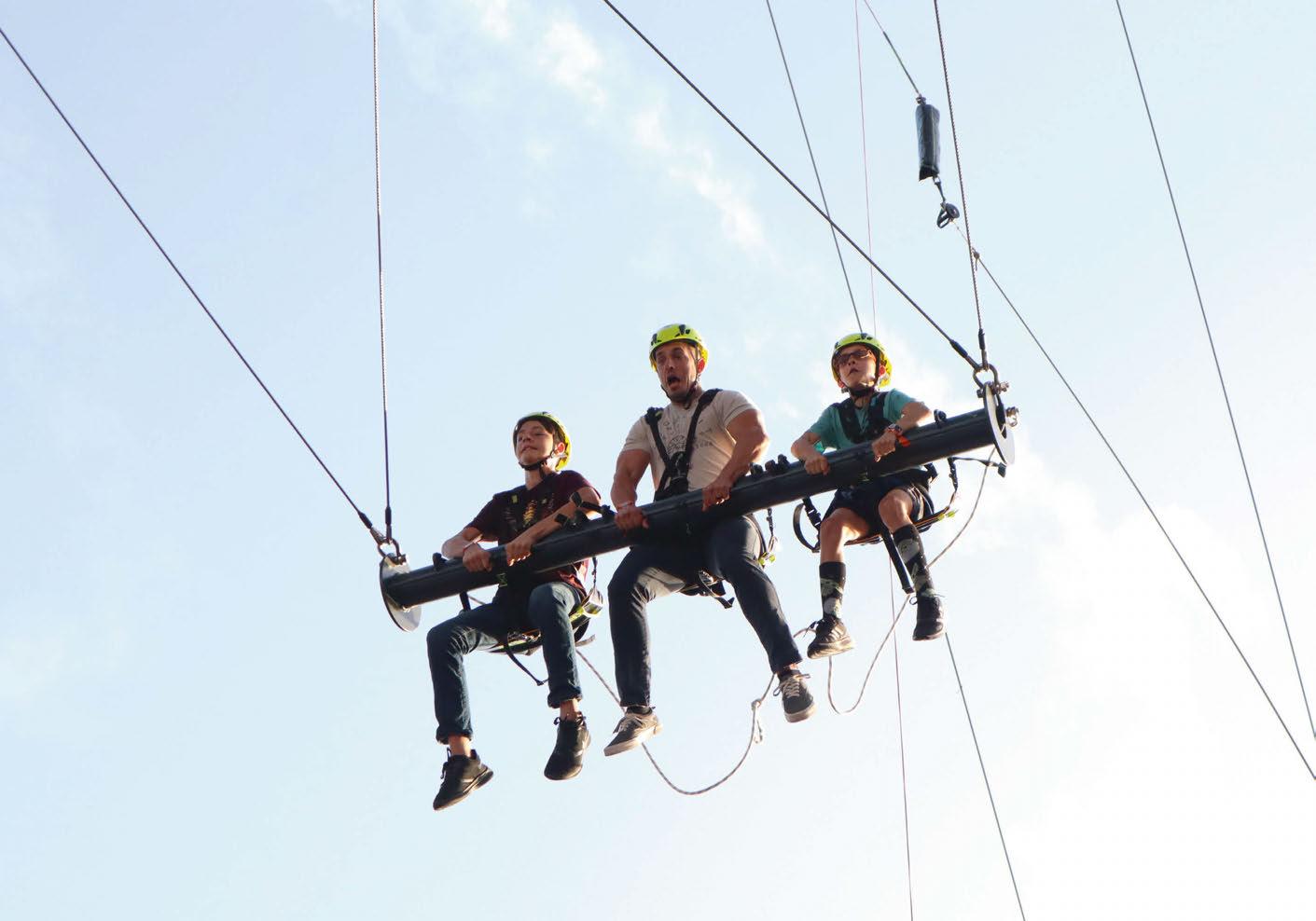



to ensure that the output kept pace with the ever-evolving vision of the creative team.
One of the standout elements of Soundstorm is undoubtedly its premium offering. Very Important Beasts (VIBs) are treated to a seamless experience that starts with valet parking right at the site entrance, before stepping directly onto a bridge that leads into a 3km network of modular walkways elevated 5m above the ground, which allows access to every stage across the expansive site without the need to ever touch the floor.
“Every structure we design for the Soundstorm site is modular and completely reconfigurable, which allows for the site to transform from year to year if required,” Lukac explained. “We always engineer our structures with that events mindset, and that has served us well.”
Similarly modular in nature are the VIB hospitality suites. “These weren’t ordinary modular structures,” Lukac recalled. “Built offsite to ensure precision and quality, each suite was delivered in oversized modules that far exceeded industrystandard dimensions – specifically to accommodate larger groups with comfort. Every module included its own inbuilt bathroom, tailored interior fitout, and was pre-finished to allow plug-and-play installation on site.”
Des pite their complexity, the suites were delivered within just five months from concept to completion – a feat that required what RBG’s Joshua Paviour, CS+C Operations Director, AMEP and Regional Director – Urban Development (AMEP), described as “intense coordination” and “shared intent” across all parties involved. “It was a demonstration of what can happen when client, engineers, project managers, and contractors operate as one team with one goal,” he said.
Beyond the stages and hospitality offerings, the level of infrastructure built into the Soundstorm site is more akin to a city than a festival. “RBG led the complete civil engineering design, from general site grading to a comprehensive stormwater drainage system, permanent power supply and potable water and sewage networks,” Paviour revealed.
To support the massive volume of attendees, RBG also designed and oversaw the construction of millions of square metres of parking space, accommodating over 80,000 vehicles. “These systems were engineered not just
for functionality, but for resilience and sustainability,” noted Associate Director, Michael Bransfield.
To further improve access and traffic flow, RBG also designed large pedestrian bridges linking the parking zones with the main festival grounds. “These bridges spanned key road corridors and played a vital role in improving mobility and the overall guest journey,” he added.
RBG also supported the planning and delivery of new internal roads and external bypasses, which significantly reduced travel times and helped decongest the surrounding infrastructure. With a focus on efficiency and flexibility, infrastructure components were designed to support evolving site layouts and future editions of the festival.
“Perhaps the greatest challenge in event engineering is the shifting vision,” Bransfield commented. “In the world of live entertainment, minds change. Designs evolve until the last moment.” RBG navigated this dynamic environment by embedding flexibility into the design process. Structures were designed not only to meet immediate needs but also to be demountable and reconfigurable for future events. Infrastructure systems were developed to support multiple operational layouts, so the same site could function as one large venue or several smaller zones, as seen with the recent A Thousand and One festival [TPiMEA#55].
“I n the end, it’s not about steel or concrete; it’s about creating memories. When nearly a million people gather in the middle of the desert and find themselves in awe of the experience, it’s a powerful reminder of what thoughtful engineering can enable,” Lukac concluded. “MDLBEAST Soundstorm is a celebration of music, culture, and vision. For RBG, it’s also a celebration of collaboration, creativity, and delivering under pressure. It’s about saying ‘yes’ to the unimaginable – and then making it real.”
MD LBEAST Soundstorm Festival Co-Director, Matt Richman, shared his take on RBG’s contribution to the event: “RBG has been the backbone behind our civil works projects, working at entertainment speed to help bring our designs and permanent structures online for festival weekend,” he stated. “They are a true partner.”
Photos: MDLBEAST, Robert Bird Group www.robertbird.com
Above: The RBG team on-site at MDLBEAST Soundstorm 2022.



Redefining success in the events industry
eventlab and Mistika co-founder Nadim Jamal digs into some of the potential pitfalls for industry professionals and shares insights from his personal wellbeing journey.
The events industry is one of the few places where exhaustion is celebrated. We don’t just accept long nights, countless coffees, self-neglect, and seven-day work weeks – we wear them like trophies. The problem is, behind the applause and adrenaline, this lifestyle slowly erodes our health.
This column isn’t about burnout alone. Burnout is part of the picture, but the real issue is self-neglect. We work so hard in one of the most stressful industries in the world that we forget ourselves entirely.
We s lip into patterns – cycles – that overlap and compound until they turn into something slippery and dangerous, with potentially disastrous consequences.
Starting off, we have the caffeine cycle: coffee or tea to start the day, another to keep going, another when you should be winding down, and a few more in between. You’re wired, but permanently tired.
Then there’s the sugar cycle: quick carb fixes on site, followed by crashes that leave you more drained than before, and wanting more. And I’m not only talking about chocolate bars; think breads and pastas. Also, the nightcap cycle: the adult beverage to ‘switch off’, which completely wrecks sleep quality along with myriad other things.
How about the workaholism cycle? Weekend ‘checkins’, 2am emails, and the unspoken rule that being always available equals being good at what you do. O r the minimal sleep cycle, forcing your body to function on scraps of rest. You convince yourself you’re a night owl, but in reality you’re just sleep-deprived.
Getting sick nearly every month? Constantly putting off that doctor’s checkup because you’re just too busy? Ignoring the pain from your knee, it’ll surely go away at some point, ‘inshallah’. Sound familiar? You tell yourself “I’ll get around to it after this project.” The neglect cycle.
And, of course, the dopamine cycle of chasing highs of client praise, project wins, social media doom scrolling, nicotine, alcohol, and other hidden addictive traps that rewire your brain until you become numb to ordinary joys like an evening walking with your kids.
On their own, each cycle might look harmless, but when combined, they create a toxic ‘master cycle’ of neglect.
That’s when the damage compounds: weight gain, visceral fat around the organs, stress hormones out of control, creeping illnesses like diabetes or heart disease, depression, and so on.
A hard wake-up call
For me, it wasn’t one thing; it was a series of wake-up calls I could no longer ignore. Friends my age were having heart attacks or being diagnosed with cancer. On a beach holiday, my wife pointed at my belly and said, “This has gone too far”. Around the same time, we were preparing to welcome our second daughter. The fears I had buried of not being around for my family flooded in and became the catalyst of change.
The first step I took was drastically changing and outsourcing my diet. I tried several meal plans before settling on one that actually works, Nourishing Dubai, which I genuinely believe is the best in the city. Their food literally cured multiple health issues I had.
The plan is simple: high protein, high fat (good fat), low carb, no sugar or gluten, no snacks in between meals, all top-quality ingredients – tasty, and filling. No, this is not a promo, but I made it a point to mention names here because I believe in supporting quality businesses that work.
And then, at just the right moment, Coach Carl Baird appeared, asking me one question that shattered my excuses: “Are you really saying you can’t dedicate three hours a week to your fitness?” Shortly after, I started intense strength training three to four times per week. The logic is simple: build your muscles and let the muscle do the fat burning for you while you sleep. Carl introduced accountability to my journey – the pressure of reporting to someone kept me in line while new habits were forming.
Next was caffeine. I didn’t quit completely, but I cut it off at 2pm and reduced the intake by 90%. With less caffeine, I wasn’t wired, which meant I didn’t need anything to unwind at night. I improved my sleep, averaging seven to eight hours per night. Better sleep gave me my mornings back. Mornings gave me the gym. Gym made me sleep better.
I can’t stress enough just how important sleep is. I learned that eight hours is a non-negotiable. The science is clear – read Why We Sleep if you haven’t already – every

after:
single system in your body suffers when you don’t sleep enough. Weight gain, energy, memory, immunity, long-term health, the list goes on and on.
I learned the importance of intermittent fasting –something that I could never do before, which was now made possible with the new lifestyle. I prefer 16:8 fasts (fast for 16 hours and then eat your daily caloric needs in an eighthour window). The benefits have been remarkable, and it has supercharged my entire health transformation.
Then came the dopamine traps. Netflix marathons, social media doomscrolling, nightcaps, gone. Instead, I started reading for 30 to 45 minutes a night. I set a goal of 15 books a year – something I’d wanted to do my whole adult life but never managed.
And finally, the stress. I had to teach myself to destress (an ongoing process), to remember that nothing we do is worth destroying myself over. We’re not at war, nobody’s shooting at us. Perspective is everything. I learned to stop giving things more importance than they deserved. These changes combined to form new cycles – positive ones, with one healthy habit supporting the next.
The results
I n one year, I dropped 21kg – from 92kg to 71kg. My body fat went from 30% to 15%. More importantly, I’m cured of hypoglycaemia – a condition developed from years of bad habits. I vanquished all visceral fat, and I healed a chronic inflammation condition. I rarely get sick anymore – immunity supercharged. My energy soared and my mind sharpened. I b ecame a better father, husband, business owner, and friend. I can finally be the best version of me now. And the influence has spread. Friends and colleagues noticed, asked
what I’d done, and started making changes themselves. It became contagious.
I’m no monk. I’ll happily enjoy life’s pleasures when they’re worth it – an irresistible dessert, a night out with friends, a burger here and there. The difference now is I measure the benefit against the trade-off and I enjoy the special occasion so much more because, it’s now an occasion.
A call to the industry
This is the industry that raised me. I love it, and I love the people in it. But we are running ourselves into the ground. We can deliver incredible events and still look after ourselves. It doesn’t have to be either/or.
The barrier to entry doesn’t have to be high at all. Switch out the onsite junk food with something healthier. No time to go to the gym? Start doing 20-minute exercises at home before work. Gradually shift your sleep time forward wherever possible (coupled with less caffeine during the day) and become more productive in the morning. Walk or move as much as you can. Make these part of your lifestyle no matter what. Small steps to usher in big changes. B reak cycles one by one.
Let’s redefine what it means to ‘make it’ in this industry, not by how busy we are, but by how well we are while building these incredible experiences for others.
We’re not invincible; something eventually will give, and there’s no point in being the most successful person in the industry if you’re not well enough, or alive, to enjoy the fruit of this success.
Photos: eventlab www.eventlab.me www.mistikalive.me
Before and
eventlab and Mistika cofounder, Nadim Jamal, shed 21kg as part of a drastic lifestyle overhaul.
BeastED: building the future of Saudi events
As MDLBEAST’s educational programme goes from strength to strength, TPiMEA drops in on the inaugural Back2BeastED Alumni BBQ in Riyadh to hear how the BeastED Career Path Program is progressing in its second year.
Set up in 2024 to nurture the next generation of Saudi Arabian events professionals, the educational arm of MDLBEAST, BeastED, is continuing to deliver on its early promise. As regular readers of TPiMEA will remember from our previous article on the initiative [see TPiMEA #51], the first year of the BeastED Career Path Program saw scores of Saudi students make their first steps into the live events industry, and since then, the programme has expanded significantly.
“L ast year was our first year and we had two terms with a total of 72 students – almost all of whom are now employed in the events industry. We even filled 63 roles at last year’s Soundstorm with BeastED alumni, which was fantastic,” commented BeastED Strategy and Education Lead, Melanie Lemnios. “We saw that the concept worked and that there was an appetite for what we’re doing and room to grow. So, for 2025 we expanded to deliver six terms over three months, with 200 students accepted out of more than 2,000 applications.”
If these astonishing numbers weren’t proof enough of BeastED’s exponential growth and importance to the future of the Saudi Arabian live events industry, the scene TPiMEA witnessed at the inaugural Back2BeastED Alumni BBQ surely was. “All of our alumni from this year and last are invited, as well as all of our industry partners who have delivered classes,” Lemnios explained, as we stepped away from the hubbub of high-fives and handshakes between former students and teachers and sat briefly in the multiuse space, which serves as production offices while Soundstorm is operational and as classrooms for the rest of the year. “It’s a chance for everyone to let their hair down, celebrate all their hard work and, of course, do some networking, which is so important in this industry.”
Le mnios takes great pleasure in the way that the students have created their own network as a result of BeastED. “It makes me so happy whenever I hear about the students meeting up outside of class – whether that’s an evening at the coffee shop working together on CVs or a game of padel at the weekend, new friendships are flourishing everywhere,” she beamed.
“The practical side of that is when one of them sees an opportunity or gets a job, they will share that with their friendship group and the whole network becomes elevated as a result. This is happening more and more.”
‘We give our students the full picture’ Anyone who is over 18, lives in KSA and has the right to work in the Kingdom can apply for BeastED, and unsurprisingly, this year’s programme attracted a huge volume of applications. “Even before we opened registration, we did some targeted marketing to universities, alumni groups and to people who had been certified in different fields that could transfer to events,” Lemnios stated, explaining how the BeastED team refined its process this year. “When it comes to registration, once we establish a candidate’s eligibility for the programme, they’re asked to answer a few written questions, which are assessed by an AI programme that we built in-house, before eventually being put through to a face-to-face interview.”
Th e interviews are conducted by BeastED’s recruitment team – two of whom are BeastED alumni. “It makes a difference that our recruitment team is made up of mainly young Saudis who can relate to the students,” Lemnios commented. “They are always here on site, so when students are on campus, they see a familiar face and have someone who can share advice as they progress.”
And the recruitment team isn’t the only source of advice for the students beyond the classroom, as BeastED has also developed its career counselling offering, with three dedicated career coaches working with the students from day one to help them find their ideal career path.
“We’ve found the counselling to be beneficial not only for the students, but also for us, so we’re better able to track and record our students’ progress in the industry,” Lemnios revealed. “Selfishly, of course, I want everyone who completes this programme to work for MDLBEAST, or one of our industry suppliers, but there’s a big wide world out there, and if someone ends up doing something else, that’s great as well.”
Th e expanded format of this year’s BeastED has meant that several new courses could be added to the programme. “All of our classes are taught by industry partners – companies that have KSA entities and are looking to grow their local workforce,” Lemnios stated.
“We’ve added several new classes this year. We give our students the full picture of everything that is needed to put an event together. There’s so much work that goes into a project before and after the show days, and we’re showing our students that it’s not just the DJ, the lights, and the
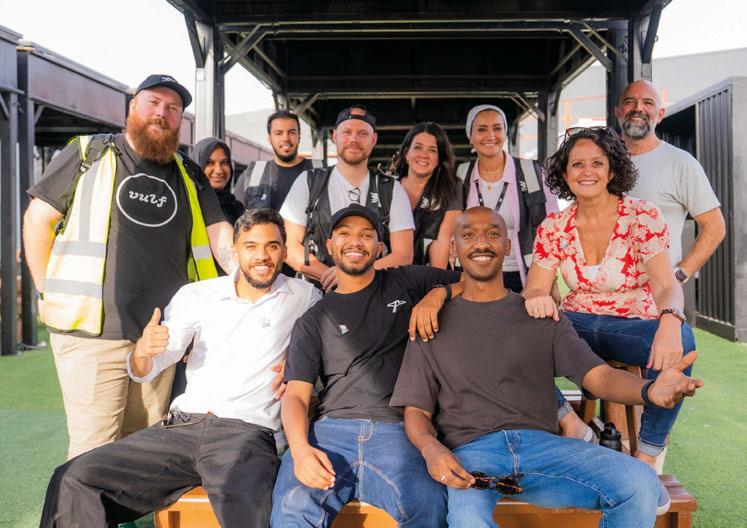

special effects that matter; it takes a whole ecosystem to create a successful event… Although the special effects are pretty cool, and we do a class on that, too!”
This year’s BeastED suppliers included: Academy of Live Technology, Aggreko, ARGA, Clair Global, Creative Technology, Entertainment Gears, ER Productions, eventlab, Eventos, ESM Operations, Full Cycle, JAM Event Services, MA Lighting, MDLBEAST’s RESPECT campaign, Robert Bird Group, Rock-it Cargo, ROE Visual, Safe Events Global Arabia, Shine, Showforce, Special Projects, TAIT, TAG, THA Staffing, The Event Verse, Trivandi, and W.E.L.Safe.
A champion for BeastED from the start, MDLBEAST’s Executive Director of Events, Michael ‘Curly’ Jobson, shared his thoughts on the progress of the initiative: “BeastED is a source of great pride and a testament to MDLBEAST’s investment in young Saudis and the future of the event sector here in Saudi Arabia,” he commented. “Our partners who have invested in the course material and given their time will reap the benefits going forward.”
‘The real learning takes place on site’ While the classroom is where it all starts for these students, Lemnios is a big believer in the importance of practical, hands-on experience. “There’s only so much you can learn in the classroom; the real learning takes place on site, where people have to think on their feet and problem-


The BeastED Career Path Programme 2025 received more than 2,000 applications, with 200 students accepted to the course.
solve under pressure,” she commented. With an eye on the future, Lemnios hopes the programme can continue to grow exponentially. “I would love for BeastED to reach a place where we’re delivering year-round courses. That’s a few years off, but if someone would have told me two years ago that we would be here at a BBQ with over 250 alumni, I would have thought they were crazy, so you never know what can happen,” she shared.
“At the size we are right now, I know every single student’s name, and I don’t want to lose that by becoming too big, too soon, because I think that is one area that sets us apart from other learning opportunities that are out there. There’s so much happening in Saudi Arabia already and so much more that will happen over the next decade, and all these events need a local workforce; flying in teams from the UK and US was fine the start with, but it’s not sustainable,” Lemnios concluded.
“I told our students, ‘I want you to take my job’. I love what I do, but if we do it right, then in a few years, we’ll be obsolete. And it won’t be because we’ve taught people to produce events in the Western way; we want our students to take on the grounding principles we’ve taught them and then go and produce events in a way that is distinctly Saudi Arabian, and we’re already starting to see that happen.”
Photos: MDLBEAST www.mdlbeast.com/beast-ed
Astera LED QuikSpot
As Procom Middle East becomes Astera LED’s official distributor for the GCC, Technical Manager Wiam Boutine discusses the partnership and explores the features of one of the manufacturer’s most versatile products.
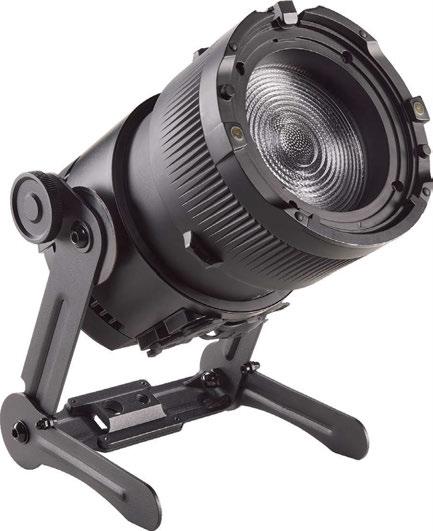
What are the main features of the Quikspot?
The Astera LED Quikspot’s primary benefit is its versatility and portability. It’s a compact, battery-powered spotlight with a versatile 13° to 60° Fresnel zoom, which means users can quickly place a high-quality, full-spectrum light almost anywhere without running power cables. The power behind it is the Titan LED Engine, which not only delivers vibrant RGBMA colour but also exceptional optical performance, producing high-quality whites and a ‘one-shadow’ fresnel beam that ensures a clean, homogeneous light.
On e of its most useful features is the OutputGain, which allows users to optimise the output for either maximum brightness and deep saturation for bright scenes, or a high CRI for natural skin tones, which is crucial for film and camera work. This is all backed by a long battery life, with up to four-and-a-half hours at full power, and an IP65 rating, making it suitable for both indoor and outdoor use.
What kind of accessories is the QuikSpot compatible with?
The QuikSpot is an incredibly flexible tool that works with both its own dedicated accessories
and a full range of existing attachments from the Astera LED AX5 product line. This gives users a huge amount of creative freedom.
For shaping the light, you can use the Barndoor for QuikSpot, which has an integrated SafetyLink system, or the rotatable elliptical filters to precisely shape the beam.
The Diffuser Domes and FlexCovers help to create softer light or even blend the fixture into the background, as well as a Snoot with a honeycomb to narrow and define the beam.
For rigging, it’s compatible with the TrackPin Compact for quick mounting to airline tracks or SuperClamps, and the Bolt for AX5 screws into the fixture’s thread, giving even more mounting options. It’s designed to fit into any setup seamlessly.
Where do you see the fixture being used in the Middle East?
The applications are incredibly diverse. For example, for live events like corporate shows, exhibitions, or gala dinners, it’s a perfect solution as you can quickly deploy it for precise lighting or use it as a spotlight for tables – all with minimal setup time. Also, because it is so compact, lightweight, and
battery-powered, it’s a favourite for rental houses and tech crews who need speed and mobility. Given the region’s dynamic event landscape, we anticipate seeing the QuikSpot everywhere. You will find it at high-end corporate events in major cities in the Middle East where its clean aesthetics and reliability are critical under changing environments. Its portability and high-CRI make it ideal for broadcast studios and production houses. Additionally, its IP65 rating is essential for outdoor shoots, large-scale exhibitions, product launches, and luxury hospitality events that need reliable, weather-resistant fixtures and quick lighting changes.
What kind of support does Procom Middle East offer to those who purchase the fixture?
As the official distributor in the GCC, Procom offers comprehensive local support that goes far beyond just selling the product. Clients get access to our full expertise, starting with our Experience Centre in Dubai, where you can get hands-on demonstrations of the QuikSpot and its entire ecosystem of accessories.
This gives clients direct access to technical and wireless lighting specialists, allowing them to truly understand the fixture’s capabilities. You can also expect prompt regional delivery and comprehensive after-sales service. Procom’s in-house service centre in Dubai also ensures that any maintenance or repairs can be handled quickly and efficiently.
How does this new partnership complement Procom Middle East’s portfolio?
This partnership is a fantastic complement to our current portfolio. Procom has long been a distributor for leading brands in the entertainment industry, and the addition of Astera LED’s innovative, wireless LED ecosystem – particularly compact, batterypowered fixtures like the QuikSpot – fills a key niche, strengthening our ability to offer end-toend solutions for our clients.
From large, complex installations to agile, on-the-go setups, the Astera LED ecosystem aligns perfectly with our focus on providing comprehensive, high-tech event solutions throughout the region.
Photo: Procom Middle East www.procom-me.com www.astera-led.com
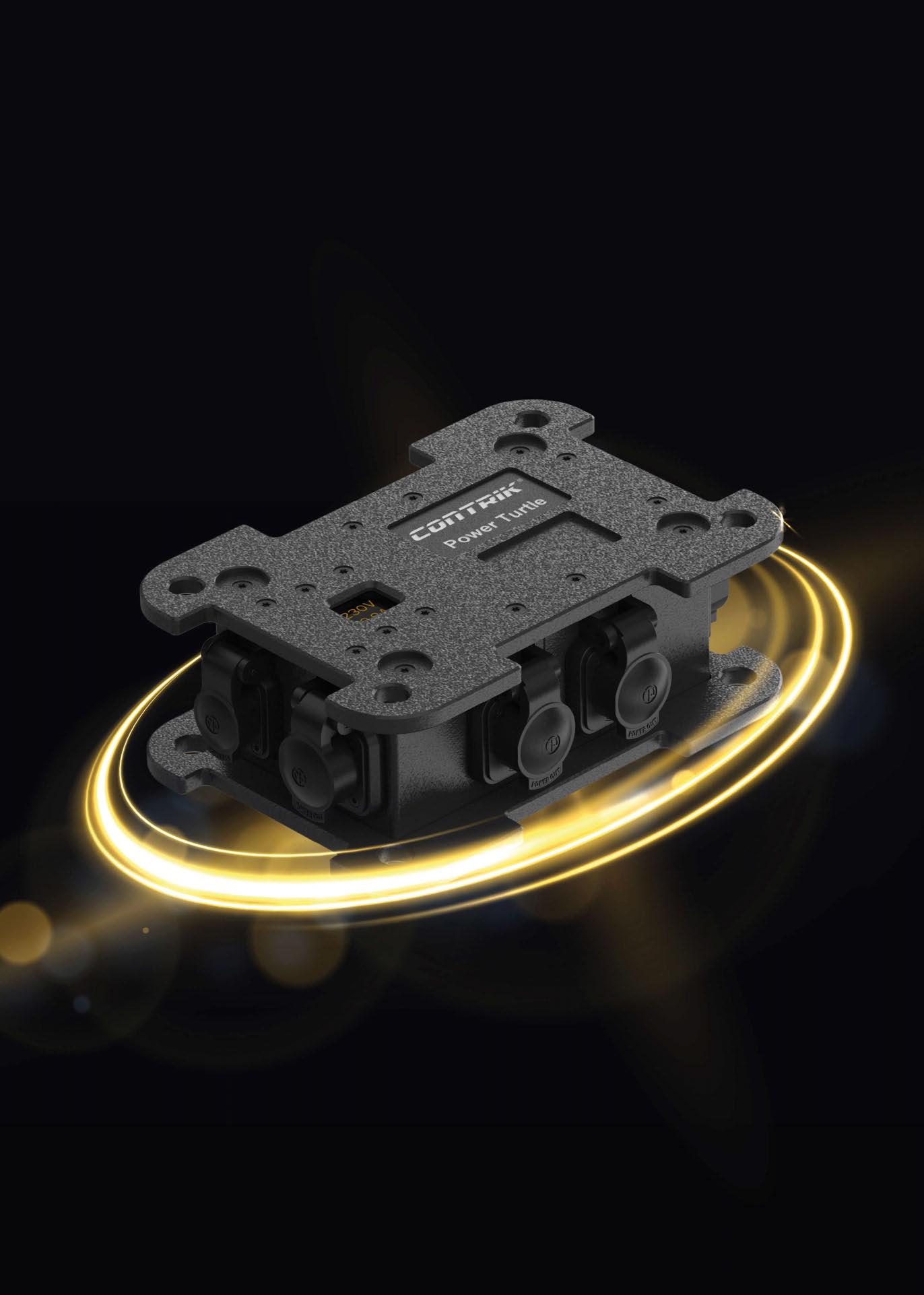

Riedel MediorNet
Varun Asokan, Brand Manager at NMK Electronics – Riedel Communications’ exclusive distributor in the GCC – explains how MediorNet is helping its users shift to IP.
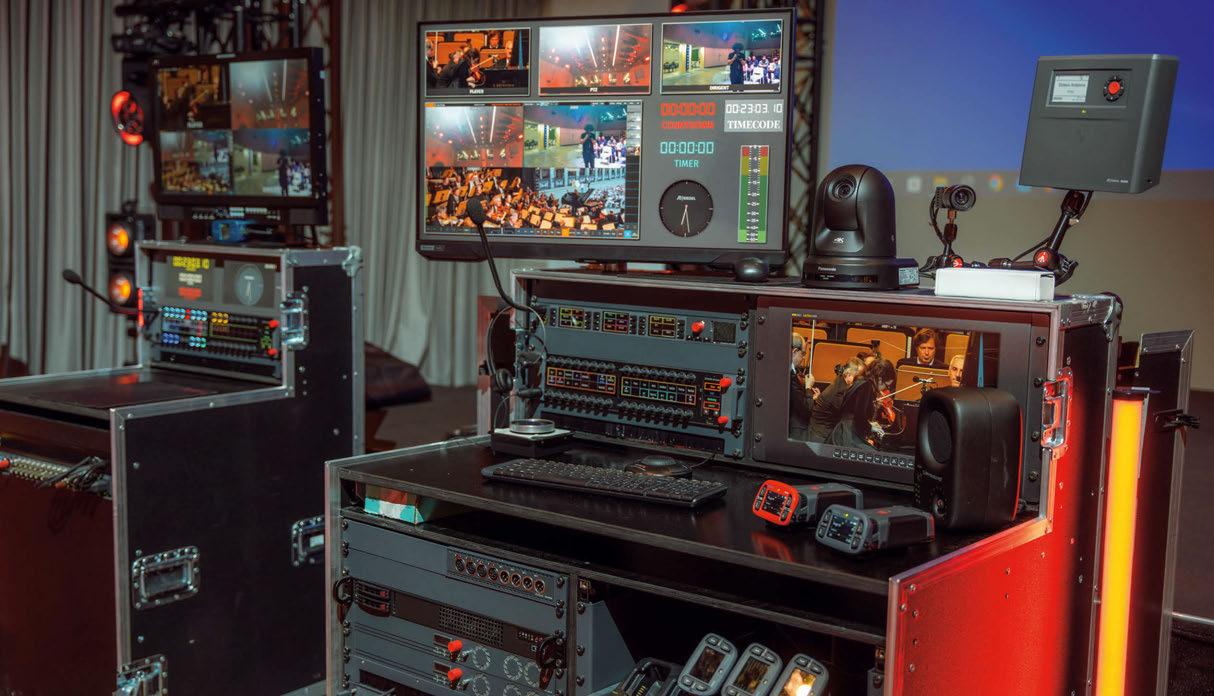
How has MediorNet evolved to cater to the industry as it increasingly shifts to IP?
MediorNet has transformed from a decentralised signal routing platform into a fully IP-ready solution that aligns with SMPTE ST 2110 and other open standards.
This evolution enables broadcasters, live event producers, and system integrators to transition seamlessly from baseband to IP workflows. The flexibility to combine both worlds – SDI and IP – gives users a futureproof infrastructure without forcing an overnight shift.
In what ways will MediorNet IP products benefit those in the field?
The key benefit is scalability with reliability. End users can start small and expand networks as demands grow, without compromising stability or quality. MediorNet IP solutions also deliver ultra-low latency, redundancy across the entire signal path, and simplified system
management, ensuring productions are both technically robust and operationally efficient.
What are the main hardware options in the MediorNet IP range?
The MediorNet IP family includes flexible nodes like the FUSION devices and Virtu 32, which offer powerful routing, processing, and multiviewer capabilities. In addition, MuoN and VirtU bring modularity to the IP domain, allowing users to customise I/O, gateway, and processing functions. Together, this range provides building blocks that can be adapted to compact setups and large-scale networks.
Talk us through some of the applications for MediorNet IP...
We see MediorNet IP being applied across live sports, broadcast centres, entertainment venues, and large-scale cultural projects in the Middle East. Its ability to handle massive signal loads, provide seamless redundancy,
and support remote production makes it ideal for high-profile events. In the region, where projects demand reliability and cutting-edge innovation, MediorNet IP is particularly wellsuited to stadiums, festivals, and integrated broadcast facilities.
What kind of support does NMK offer?
As Riedel’s exclusive distributor in the GCC, NMK provides end-to-end support – from system design and pre-sales consultation to training, deployment, and after-sales service. We run regular certification trainings and workshops to ensure integrators and end users can maximise the potential of MediorNet solutions. With our technical team and NMK Beyond, we provide a local hub where clients can test, learn, and experience Riedel technology first-hand.
Photo: NMK Electronics www.nmkelectronics.com www.riedel.net
Avolites D3 Series
Jon Hole, Product and Marketing Manager at Avolites, unveils the company’s new release of compact lighting products.
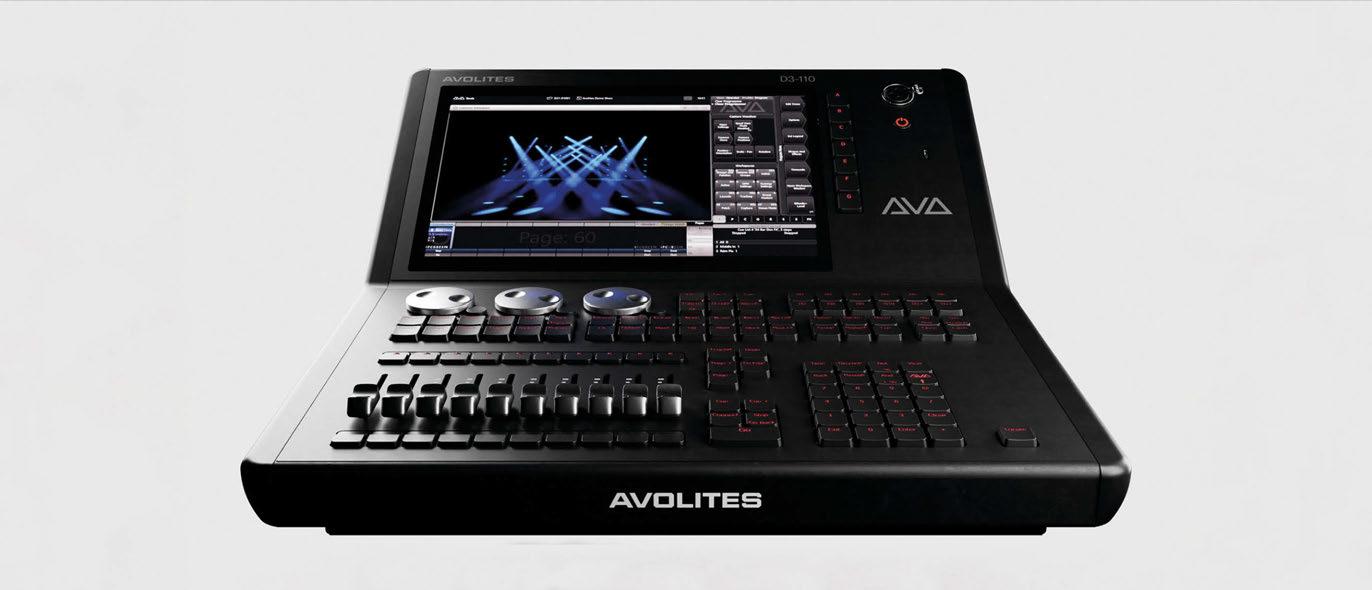
What products are included in the D3 series? Underlining a new and innovative approach from Avolites since becoming ‘A Robe Business’ at the end of 2023, D3 is a family of five outstanding compact, stylish and fully featured packages developed for a world that is constantly on the move.
Sma rt design, engineering and expedient sizing are at the heart of the D3 series philosophy. The D3-010, D3-110, D3 Wing, D3 Core and D3 Touch are all powered by Avolites’ famous Titan software, offering costefficient, intuitive programming and operation, coupled with flexible control for multiple lighting solutions.
Th e D3 family presents a clear strategic vision. It makes quality lighting and visual control more widely available to a greater range of operators, technicians and projects, thanks to Avolites’ highly tangible ‘learn it once’ approach to software development.
What are the main benefits of the D3 family to end users?
It offers a powerful, affordable and compact range of consoles ideal for a diverse range of applications. Each item in the range features
different advantages. The D3-010 is a smaller and affordable product that handles up to eight universes of DMX control without a laptop. The D3-110, powered by Titan, is aimed at larger shows, with 24 DMX universes and an inbuilt touchscreen, whereas the D3 Wing adds 20 faders to the D3-010 and D3-110 workflows for a more hands-on approach.
Th e D3 Core is a processor in a 1U rackmounted version, which runs Titan and brings versatility to installations, while the D3 Touch offers a pre-configured Titan remote control interface for use with any D3 product in the new series.
Why are the new consoles a good fit for Middle East users?
A great range that is practical and cost effective for venues, installations, rental companies and even freelancers, there is a D3 option to cover the whole diverse range of shows, events, entertainment and leisure projects that are so prevalent across the Middle East region.
It also offers a quality solution as we know that Middle East projects are always specified to high standards. The Avo brand is a marque
of excellence and longevity. D3 is very easy to learn for anyone new to the Avolites platform, and that curve will be seamless for the many operators already familiar with the brand.
What kind of projects do you envision D3 being used on?
Small to medium shows including all sorts of events – conferences, corporates and industrials – together with theatre, broadcast and streaming productions, plus live music concerts and performance. Also, D3 is perfect for music and multipurpose venues and anywhere needing potent but straightforward lighting control.
What kind of support does Avolites offer to Middle East users?
There is availability of all products from stock in Dubai combined with superlative local technical support and service via the Robe Middle East HQ, run by Elie Battah and his team. Spare parts are also available from stock, while Avolites’ famous training sessions will soon be announced.
Photo: Avolites www.avolites.com
DiGiCo stars at Echoes of a Golden Era concert
Sound On Stage Events deploys a DiGiCo Quantum 326 at historic Lebanon show.

Dubai-headquartered technical production house Sound On Stage Events has invested in a new DiGiCo Quantum 326 console, and the company wasted no time in getting the console out in the field, deploying it for the Echoes of a Golden Era show as part of the Beiteddine Art Festival in July 2025.
A loyal DiGiCo user for over 15 years, Sound On Stage Events’ Managing Director and sound engineer Rawad Saad explained his preference for the brand: “Throughout the time that Sound On Stage Events has been using DiGiCo consoles, we have experienced the remarkable evolution in both the technology and audio quality. DiGiCo continues to set new standards in the industry, and we proudly rely on its systems for our most demanding productions.”
De livering the purchase was 7Hertz, DiGiCo distributor for the Middle East and Gulf regions. Chadi El Masri, CEO and Founder of 7Hertz, stated: “Rawad and his team are highly experienced with DiGiCo and a valued client of
7Hertz, which allowed for focussed discussions and trust in reaching the best possible outcome. The end result is that they found the Q326 to be exactly what they were looking for.”
Ec hoes of a Golden Era was an original production that premiered at the festival, featuring three renowned Arabic performers: Jahida Wehbe, Lubana Al Quntar, and Reham Abdel Hakim. The orchestra comprised 25 musicians, with additional high-calibre guest artists on the bill. “To manage the intricate blend of orchestration, vocals, and live instruments, a concert such as Echoes of a Golden Era requires outstanding clarity, dynamic range, and versatility,” Saad explained.
“D iGiCo consoles offer the accuracy and processing capacity needed to handle complex input lists and produce high-quality sound across a broad frequency range,” he added. “We are able to stay consistent throughout the performance, while instantly adjusting to the musical changes. Maintaining the aural depth a
performance of this calibre demands requires this degree of control.”
The Beiteddine Art Festival takes place in the 200-year-old Palace of the same name, located in the Chouf Mountains, around 45km from Beirut. An annual celebration of art and culture, it hosts multiple performances and exhibitions throughout July. There are two stages, Al Midan, a 5,000 seated capacity courtyard, and the middle courtyard, where this concert was staged, with a 1,500-seat capacity.
“Working with dynamic vocalists and orchestras is a great fit for DiGiCo consoles,” Saad continued. “From the delicate expression of a solo vocalist to the full impact of a live orchestra, the high-resolution preamps and powerful processing engine of the Quantum 326 enables precise control over every aspect of a performance. Managing complex setups and reacting quickly to live changes is made simple by the dynamic EQ, multiband compression, and sophisticated snapshot automation. This is crucial for shows like ours, when emotional delivery and musical accuracy go hand-in-hand.”
Th e v20 upgrades have also proved very useful, with Saad appreciating the new integration and workflow features. “Control Groups Spill and other increased control and workflow advancements have made daily operations more efficient and user-friendly,” he noted. “One notable feature is the recently added Mix Minus tool, which has proven to be helpful in handling intricate routing in broadcasts with several IEMs. The v20 upgrade has increased power and versatility without making the process more difficult, which we appreciate in highstakes, fast-paced projects.”
Th e kit is only part of the reason for Saad’s continued brand loyalty, with the relationship between him and the DiGiCo and 7Hertz teams proving instrumental. “We have contacted the DiGiCo and 7Hertz teams a few times, and each time we have received an exceptional response,” he concluded. “Their personnel have been helpful, informed, and sincere in their efforts to assist us in finding answers, whether it’s for software upgrades, system integration, or urgent troubleshooting prior to a big event. Knowing that we have that degree of support behind us is comforting, particularly when working on well-known productions where timeliness and dependability are crucial.”
Photo: Sound On Stage Events www.soundonstageevents.com www.digico.biz www.7hertz.net
Renkus-Heinz hires new MEA Sales Manager
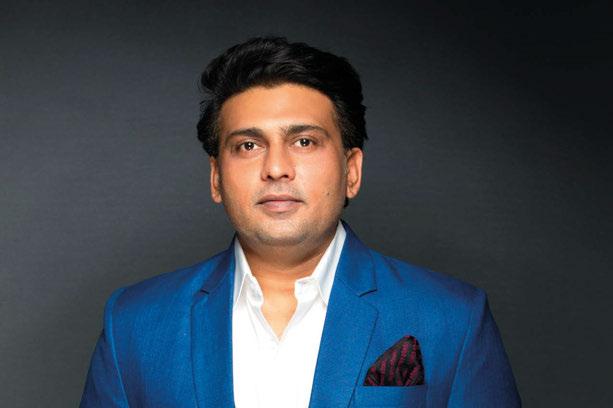
Rahul Mankar joins the loudspeaker company to expand its regional presence.
Renkus-Heinz has welcomed Rahul Mankar as the company’s new Regional Sales Manager for the Middle East and Africa.
“I a m truly honoured to join Renkus‑Heinz as Regional Sales Manager MEA,” Mankar commented. “This role represents a strategic opportunity to channel my passion for sound in partnership with a visionary leader in professional audio by ensuring the right loudspeaker technology is applied and implemented to the right environments.”
With 17 years of sales experience and having worked in various strategic, decision ma king roles with a particular focus on audiovisual experiences within the luxury te ch space across
the GCC and India, Renkus He inz deemed Mankar to be the “perfect candidate” to expand the company’s global presence.
Ka ran Kathuria, Director of Sales and Business Development for APAC and MEA commented: “Renkus He inz endeavours to deliver exceptional customer experience in the Middle East and Africa, actively pursuing initiatives in the region.
“O ne such initiative is to onboard Rahul Mankar as Regional Manager. Rahul brings years of experience in pro audio and has established some renowned brands in MEA,” he continued. “We are confident of realizing our vision of delivering more advanced solutions in the region

with Rahul.” Mankar added: “Renkus‑Heinz has been shaping the future of pro audio for decades. The company is an industry leader in advanced beam steerable loudspeaker technology, with innovations such as ICONYX and OmniBeam delivering exceptional clarity and coverage.”
He c oncluded: “I look forward to driving growth across the MEA region by delivering audio solutions for large venues and acoustically challenging environments. It’s a privilege to work alongside such a respected professional audio brand, known for delivering bespoke sound solutions to demanding venues.”
Photo: Renkus-Heinz www.renkus-heniz.com




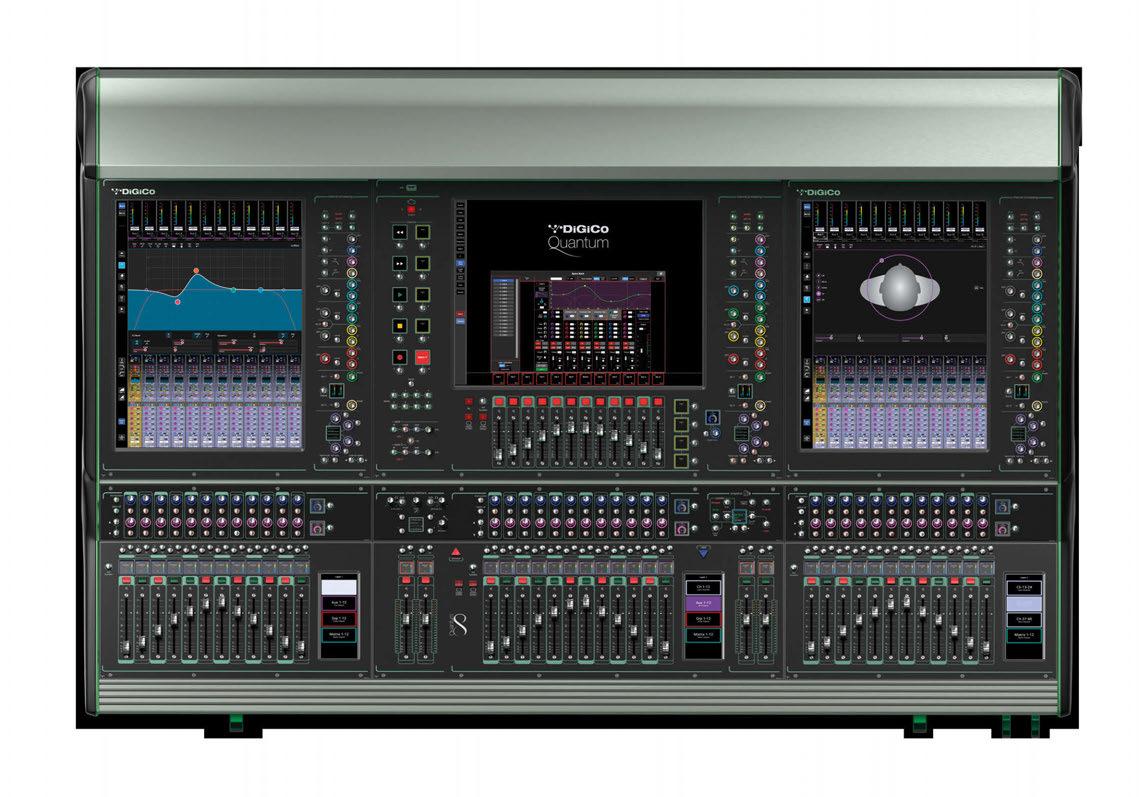

Gallowglass upskills for Q4
The Middle East team embarks on a week-long staff training initiative with the support of several key collaborators.


Gallowglass Health and Safety recently completed a comprehensive training week across its Middle East division, aimed at preparing teams for a demanding events season. In collaboration with 3DB Event Production, Empro Power, and Pains Fireworks, Gallowglass staff gained hands-on experience with several new technologies and safety systems across all three companies.
Th e initiative is part of a global programme led by Gallowglass Health and Safety, enabling the company’s Safety Advisors across all divisions to enhance their technical knowledge, improve communication, and strengthen collaboration with key partners.
“It’s been incredibly valuable to connect with colleagues across regions and align on best practices,” said Declan Meenan, Branch Manager, Middle East, reflecting on the initiative. “The hands-on sessions provided us with real insight into the equipment and protocols we’ll be working with on-site.”
Ja ck Kelly, Senior Project Manager, 3DB Event Production, shared his approval of the initiative: “It was great to welcome the
Gallowglass advisors for a hands-on training session at 3DB,” he stated. “Sharing our specialist knowledge around AVL systems and scenic elements helps ensure we’re all aligned when delivering large-scale productions. Building this understanding and strengthening communication between teams is key to delivering seamless, high-quality results for clients throughout the busy events season.”
For Aaron Brown, Technical Director, Empro Power, the initiative served as a “fantastic opportunity” for the Empro team to share their expertise and ensure that everyone was fully prepared for events season. “By giving the team a deeper understanding of our updated power systems and equipment, we’re helping create smoother, safer, and more efficient onsite operations,” Brown explained. “It’s all about working together to deliver world-class events across the region.”
Rory Inker, Project Manager, Pains Fireworks, also found the sessions to be beneficial: “Finishing the training week with the Gallowglass team at our warehouse was a great way to prepare for the season ahead,” he stated.
“It gave us the chance to walk everyone through some of the new equipment and recent updates we’ve introduced, as well as discuss setup procedures and key safety measures when working with pyrotechnics,” Inker added. “These sessions are vital for keeping everyone up to date and making sure we’re fully aligned before heading on-site, which is key to delivering safe and successful displays.”
Ac cording to Gallowglass Health and Safety Managing Partner, Steve Kearney CMIOSH, through the company’s ongoing CPD efforts, Gallowglass Health and Safety is continuing to build “a skilled, adaptable workforce ready to meet the dynamic and evolving demands of world-class event production”.
He c oncluded: “This training reflects our commitment to continuous professional development (CPD) and global consistency in safety standards. By investing in our people and partnerships, we’re ensuring Gallowglass Health and Safety remains at the forefront of safe and efficient event delivery worldwide.”
Photos: Gallowglass Health and Safety www.gallowglasshs.com
AUTOMATION & PERFORMER FLYING
THINK RIGGING THINK TECS

THE LITTLE PRINCE
“Every great show starts with a drawing. At TECS Event Services, we take pride in transforming lines on a CAD screen into unforgettable live experiences.
Precision is at the heart of everything we do because in our world, ever y millimetre matters. From the first draft to the final spotlight, our team ensures that each design is engineered with accuracy, safety, and creativity in mind.
Whether it’s complex rigging, performer flying, or large-scale event structures, we bring your vision to life with the highest standards of detail and execution. From CAD… to show. Always on time, always on point.”
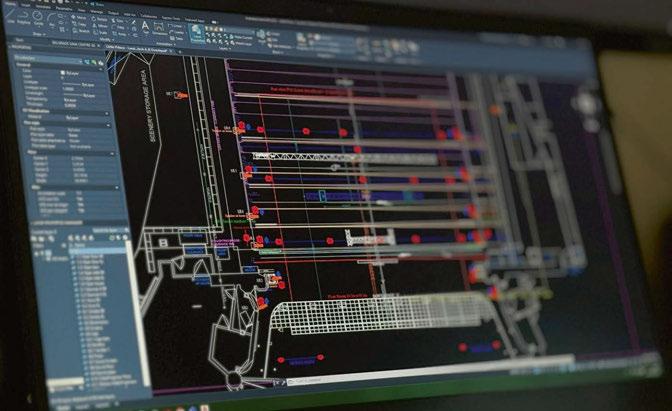

Universal high-speed winch for events, touring, and entertainment automation. Trusted worldwide for smooth performer flying and dynamic stage effects. Moveket VMW-S 125
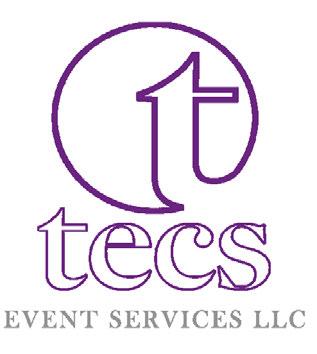
Audiosure to distribute Linea Research in SA
The agreement expands the global reach of the UK-based manufacturer.
Linea Research has appointed Audiosure as its exclusive distribution partner for South Africa.
The agreement sees the full range of the UK-based manufacturer’s high-performance amplifiers and DSP solutions available from Audiosure, backed by expert support and aftersales service on the ground.
“We’re thrilled to bring Linea Research into the Audiosure family,” stated Greg Payne, Director at Audiosure. “Their commitment to innovation, reliability, and sonic excellence aligns perfectly with our mission to provide world-class audio
solutions to our partners and clients across Southern Africa.”
Linea Research Sales & Marketing Manager, Martin Hildred, added: “Audiosure is an ideal partner for us in South Africa – a knowledgeable and highly professional team with strong market presence and a proven track record. We are confident this collaboration will strengthen our brand and provide support for our customers.”
Photo: Audiosure www.audiosure.co.za www.linearesearch.co.uk
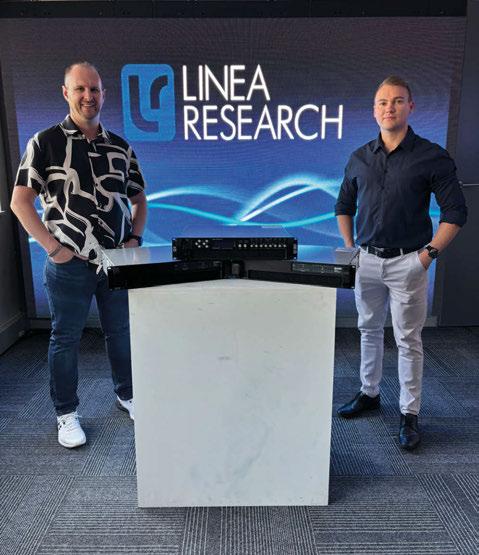
Audiosure's Greg Payne, Managing Director, and John Greaves, Technical Pre-Sales Manager.
Simon Robinson returns to Mediatech Africa 2026
The co-owner is back full-time as Exhibition Director to steer the show’s comeback edition.

Mediatech Africa has confirmed that co-owner Simon Robinson has returned full-time as Exhibition Director.
With the show set to run from 1 to 3 July 2026 at Kyalami Grand Prix Circuit & International Convention Centre, Johannesburg, after a six-year hiatus, Robinson returns to the fray after spending time project-managing largescale productions and events, and serving as Business Development Manager at one of South Africa’s major AV distributors. “Stepping out of the organiser role for a season let me see the industry from other angles,” Robinson said.
“Running projects on the ground and spending time in distribution gave me a better feel for the pressures and timelines our exhibitors and buyers face. That perspective will help shape
how we deliver 2026,” he added, reflecting on the event’s pause. “We kept Mediatech off the calendar until the industry could support a show that meets our visitors’ expectations. Mediatech isn’t your average B2B expo and we weren’t going to bring it back half-baked.”
With offices now based at Langhams in Fourways, Robinson has hit the ground running – catching up with past exhibitors and advancing venue planning.
“2026 is about getting the industry back in the same room and doing real business,” he added. “I’m looking forward to seeing familiar faces, meeting new ones, and building on what we’ve achieved in the past.”
Photo: Mediatech Africa www.mediatech.co.za
optical CON ® MTP
Easy cleaning. Easy maintenance. When the show must go on, trust opticalCON.


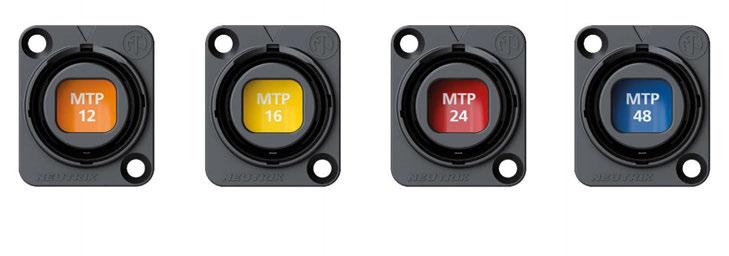
Reliable, ruggedised fiber optic solution. Available in 12-channel, 16-channel, 24-channel & 48-channel



TPiMEA Ad Index



